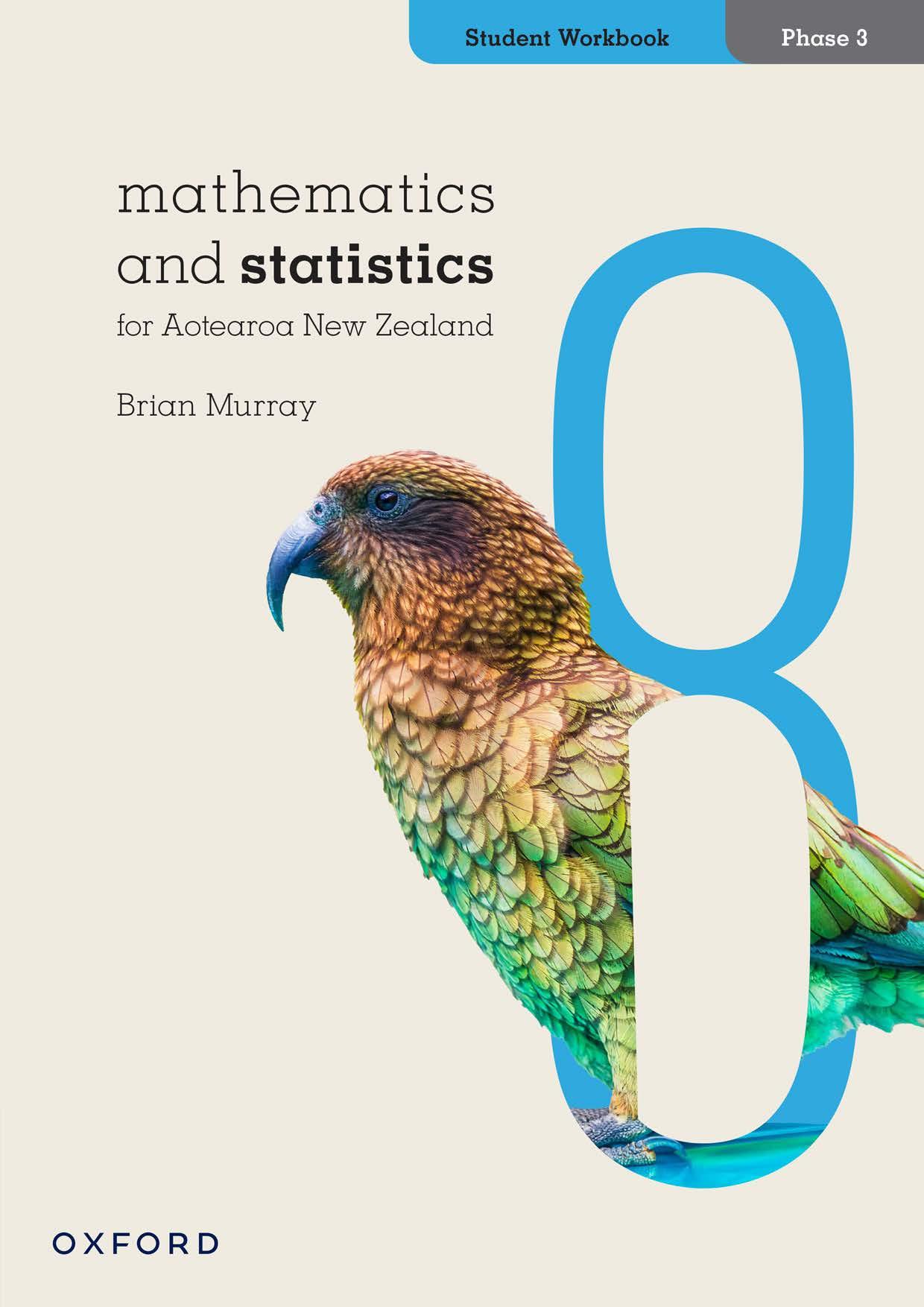

DRAFT
mathematics and statistics for Aotearoa New Zealand
Unit 6 Measurement
Unit
Whole numbers and decimals
Writing numbers
53 654 2024 2.4 5 100
Numbers can be shown in various ways:
Numeral form: 53 654
Word form: two thousand and twenty-four
Expanded form: 2 + 4 10 + 5 100
Exponent form: 102
Guided practice Unit 1: Topic 1
1 Write 53 654 in word form.
2 Write 2024 in expanded form.
3 Write one hundred and two thousand, five hundred and forty-nine in numeral form.
Ordering numbers
This can be done in ascending or descending order.
DRAFT
4 a Write the numbers from the top of the page in numerals in ascending order.
b Write 3.45, 345 and 34.5 in descending order.
c Write 5 3 , 52 and 5 4 in descending order.
Comparing numbers
Large numbers can be abbreviated using exponents or recognised abbreviations. For example, a house by the water might be worth $1.2M ($1 200 000) and a person might earn $70K a year ($70 000).
5 Identify the larger number in each pair by writing > (is greater than) or < (is less than) on the line between them.
a 102 70
b $35 00 $25K
c 15 0 000 1.5M
d 21 3 3
e Why is it not possible to place either symbol between this pair: 10 3 1000?
Independent practice
1 Write these numbers in word form.
a 12 145
b 12.145
c 10 000 + 2000 + 100 + 40 + 5
DRAFT
d 10 + 2 + 0.1 + 0.04 + 0.005
2 Write these numbers in exponent form.
a 1000
b 100 000
c 10 000
d 4 × 4 × 4 × 4 × 4
e 9 × 9 × 9 × 9 × 9 × 9 × 9
3 Place value
Identify the value of the red digit in these numbers by looking at its place in the full number. Write the value of the digits in words. For example, for 3 5 876, the red digit is worth five thousand.
a 3 5 8 078
b 57 4 98 089
c 14 76 3 009
d 1 6 54 896 423
4 Write the numbers on the place value grid. Put in a decimal point when necessary.
a 5M
b 1.25M
c 1 2 of 5
d 350K
e 5 × 10 5
f 1.75B
g 57B
h 1 2 of 1.5
DRAFT
5 Look at the table in question 4. Write the value of the digit 5 in each number in word form. a b c d
6 Write these lists in ascending order.
a 2.5, 255, 0.25, 25, 0.025
b 3.5M, 3.55, 3.53, 3500, 0.35
c 750K, 750M, 75 000, 70.005, 70.05
d 4.7, 7.4, 4.07, 4.704, 0.47
7 Write these lists in descending order.
a 3.5, 355, 0.35, 35, 0.035
b 8.58, 8500, 0.85, 8.5M, 8.55
c 2005, 250B, 20.5M, 25 000, 250K
d 3.05, 30.5, 0.035, 0.35, 30.05
DRAFT
8 Fill in the gaps to compare each number pair by writing < or >.
Extended practice
Rounding numbers
You probably know that numbers are sometimes rounded. For example, if you needed to find the answer to 98 + 99, you could round the numbers to the nearest ten and estimate the answer to be close to 100 + 100.
Numbers are also rounded if knowing the exact number is not important. For example, a newspaper might report that 20 000 people were watching a match, even if the actual number was 19 576.
Numbers can be rounded to the nearest ten, nearest hundred, nearest thousand, or whatever is appropriate.
1 Round these numbers to the nearest thousand.
a 1875
b 19 235
c 996
d 32 828
Before a number is rounded, you need to know which place value column you are rounding to. For example, if you wanted to round the number in question 1d (32 828) to the nearest ten thousand, you focus on the digit to the right of it. Here’s how:
We can see that the circled digit is less than 5. So, we round down to the nearest ten thousand. 32 828 rounded to the nearest ten thousand is 30 000. (All the columns to the right are now empty. So, a zero goes in each empty space.)
DRAFT
The ABC of rounding
Decide on the column you are rounding to.
If the digit is 5 or above, round UP
If the digit is less than 5, round DOWN Circle the digit to the right. Tth th h t u 3 2 8 2 8
2 Round 32 828 to the nearest:
a hundred.
b ten
3 If a prize of $22 935 had to be rounded, would you prefer it to be rounded to the nearest ten thousand, thousand, hundred or ten? Give a reason for your answer.
4 Round to the nearest thousand.
a 38 759
b 41 4 45
c 25 555
d 451 445
5 Round to the nearest hundred thousand.
a 178 280
b 413 633
c 29 8 729
d 1 132 405
6 Round
the nearest tenth.
DRAFT
7 Scientists say that the Moon is an average of 384 399 kilometres away from Earth.
a What would be your rounded distance to the Moon? Give a reason for the way you have rounded the distance.
b Why do you think the average distance is given and not the exact distance?
Unit 1: Topic 2
Prime factorisation
Factors
The factors of a positive whole number are the positive whole numbers it can be divided by which leave no remainder.
For example, when 2 is divided by 1 or 2, the remainder is 0. So, the factors of 2 are 1 and 2 (two factors).
When 4 is divided by 1 or 2, the remainder is 0. So, the factors of 4 are 1, 2 and 4 (three factors).
Guided practice
1 Write the factors of these numbers.
a 3
b 6
c 10
d 5
Prime and composite numbers
Positive integers can be prime, composite or neither.
A prime number has just two factors (1 and itself). 2 is a prime number.
A composite number has more than two factors. 4 is a composite number.
The number 1 is a special number. It is the only positive number that is neither a prime number nor a composite number.
DRAFT
2 What is the only number between 6 and 10 that is a prime number?
3 List the factors of 28.
4 Which number between 31 and 40 has:
a the same number of factors as 28?
b more factors than 28?
5 There is only one even prime number. What is it?
Complete the chart to show the factors of the prime and composite numbers from 11 to 20.
Independent practice
Prime factors (Reminder: 1 is NOT a prime number.)
Prime factors are the prime numbers that multiply together to make a whole number. For example, 2 and 3 are the prime factors of 6. How do we know? We can show it in a factor tree:
The prime factors of 6 are 2 and 3 6 = 2 × 3
Fill in the blanks in these factor trees to show each composite number as the product of its prime factors.
The prime factors of 15 are and = ×
The prime factors of 21 are and = ×
The prime factors of 35 are and = × f 39 ×
DRAFT
The prime factors of 39 are and = ×
For some composite numbers we need a larger factor tree. For example, if we start with 8, we end up with 2 × 4. But 4 is not a prime number. We need to keep going until we end up with prime numbers. The factor tree for 8 looks like this:
2 4 2 2 × ×
Now we end with prime numbers. So, the only prime factor of 8 is 2. 8 = 2 × 2 × 2
2 Complete each factor tree to show each composite number as the product of its prime factors.
The prime factors of 20 are and
The prime factors of 18 are and
The prime factors of 28 are and = × ×
The prime factors of 36 are and = × × ×
It is sometimes easier to use exponents to show the prime factorisation of a number.
For example, on the right is a factor tree for 16.
It is quicker to show the prime factorisation as 24
The only prime factor of 16 is 2 16 = 2 × 2 × 2 × 2 = 24
3 Complete the factor trees. Use exponents where possible to show the prime factorisation of each starting number.
The prime factors of 68 are and 68 = 2 × 2 × = 2 × b 27 9 × ×
DRAFT
The only prime factor of 27 is
The prime factors of 40 are and
The prime factors of 56 are and
Extended practice
Highest common factor (HCF)
Reminder: The HCF of a pair of numbers is the number with the greatest value that is a factor of each number. For example: the factors of 12 are: 1, 2, 3, 4, 6, 12 the factors of 18 are: 1, 2, 3, 6, 9, 18
We can see that 1, 2, 3 and 6 are common factors (they are in both lists).
The 6 digit is red because it is the HCF (the number with the greatest value that is a factor of each number).
1 a Write the factors of this pair of numbers. 8 24
b Draw a circle round the common factors of each number.
c Draw a star over the highest common factor (HCF) of 8 and 24.
d The HCF of 8 and 24 is
2 Find the HCF of each pair, or group of numbers.
a The HCF of 24 and 40 is:
b The HCF of 35 and 42 is:
c The HCF of 6, 12 and 28 is:
d The HCF of 18, 36 and 42 is:
DRAFT
3 You can use the HCF to simplify fractions. For example, we can make 5 10 simpler like this: The factors of 5 are: 1 and 5. The factors of 10 are: 1, 2, 5 and 10.
The HCF is 5.
If we divide the numerator and denominator by the HCF (5), the simplified fraction is 1 2 . Simplify these fractions by finding the HCF. a 9 12 b 12 18 c 25 125 d 16 28
4 What is the mystery number?
It is a 2-digit odd number that is a multiple of both 7 and 5. It is a factor of both 210 and 315. What is the mystery number?
Unit 1: Topic 3
Exponents and square roots
In mathematics we often look for short cuts.
This is a short cut for 3 + 3 + 3 + 3 + 3:
3 × 5 = 15.
We can also use exponents as short cuts.
A short way of writing 3 × 3 is 32
The base number is 3.
The small 2 is the exponent. It can also be called the index or power
The exponent tells us to use the base number (3) in a multiplication two times.
The base number is 3. So, 32 = 3 × 3 = 9.
Guided practice
32 base number exponent (or index, or power)
1 Write the multiplication as a base number and exponent. Remember to write the exponent at the top and smaller than the base number.
Multiplication Base number and exponent
e.g. 3 × 3 × 3 3 3
a 2 × 2 × 2 × 2 × 2
b 4 × 4 × 4
c 8 × 8 × 8 × 8
d 5 × 5 × 5 × 5 × 5
e 7 × 7 × 7 × 7 × 7 × 7
f 10 × 10 × 10 × 10
2 Fill in the gaps in the table.
DRAFT
Base number and exponent
The base number is used in a multiplication: The multiplication is: The value of the number is:
e.g. 42 two times 4 × 4 16
a 3 3 three times
b 24
c 5 3
d 6 2
e 9 2
f 10 3
For 3 3 we can say 3 to the third power, 3 to the power of three or 3 cubed.
Square roots
To understand what is meant by the square root of a number, we need to look at square numbers.
4 squared can be written as 42. In a diagram it looks like this:
A square root goes the opposite way.
4 squared is 16. So, the square root of 16 is 4.
The symbol for square root is √ . We can write it like this: √ 16 = 4.
4 × = 4 × 4 = 16 42
16 Squared Square root
3 Find the square root of these numbers by saying, “What number, times itself, makes the number?”
e.g. 16 4 × 4 = 164 √ 16 = 4
a 4 √4 =
b 36 √ 36 =
c 9 √9 = d 64 √ 64 =
4 All the starting numbers in question 3 were square numbers. What if the starting number is not a square number? We can give the approximate square root.
Example: √ 7 = ? We know that √ 4 = 2 and √ 9 = 3.
So √ 7 is between 2 and 3.
Starting number Which two square numbers is it between?
e.g. 74 and 9
a 10
b 42
c 20
d 52
√4 = 2 and √9 = 3 2 and 3
Independent practice
Base numbers with exponents, such as 27, can look small. However, when you expand the number, you might be surprised at how large the actual value is. For example, the value of 27 is greater than 100.
1 Find the value of these numbers. Begin by expanding the number. Your teacher may ask you to use a calculator for some of them. a
2 Circle the number with the greater value in each pair. a 9 4 or 8 5
5 3 or 35
3 Find the value of the exponent.
a 5 to the power of = 15 625 b 10 to the power of = 1 million
4 Find the approximate square root, then the actual square root (to 2 decimal places). You will need to use a calculator with a square root function for the actual square root.
DRAFT
5 Identify and circle all the prime numbers by making sure that they only have two factors: 1 and the number itself. Remember also that 1 is a special number and is neither prime nor composite.
30292827262524232221
40393837363534333231
50494847464544434241
60595857565554535251
70696867666564636261
90898887868584838281
6 a The highest prime number on the grid is b True or false? All the prime numbers are odd.
c True or false? More of the composite numbers between 1 and 100 are even than odd.
7 We can find the square root of some less-common numbers if the number is written as a product of prime factors. (You may need to look back at Topic 2 as a reminder.) Study the first example and complete the second one.
DRAFT
To find the square root of the starting number: Find the prime factors. Multiply the prime factors.
Using prime factorisation we see that
196 = 2 × 2 × 7 × 7
196 = 22 × 72
The prime factors of 196 are 2 and 7.
Multiple the prime factors: 2 × 7 = 14
So, √ 7
196 = 14
Check: 142 = 196
The prime factors of 225 are and Multiply the prime factors: × =
So, √225 = _____
Check: 2 = _____
Extended practice
Negative exponents
A base number can have a negative exponent, like this: 2−2
A positive exponent involves multiplication. For example, 22 = 2 × 2 = 4.
The opposite of multiplication is division. A negative exponent involves division.
A negative exponent tells us how many times to divide 1 by the base number
2−2 tells us to divide 1 by the base number (2) and then divide by 2 a second time.
First time: Divide 1 by 2 = 1 2 or 0.5.
Second time: Divide 1 2 by 2 = 1 4 or 0.25.
So, 2−2 = (1 ÷ 2) ÷ 2 = 0.25
1 Your teacher may ask you to use a calculator for some of the following.
a 8 −1 = 1 ÷ 8 =
b 8 −2 = (1 ÷ 8) ÷ 8 =
c 4−1 =
d 4−2 =
e 10 −2 =
f 10 −3 =
DRAFT
2 In question 1, we started with 1 and then divided. A different way of looking at positive exponents it is to start at 1 and then multiply. For example, 32 = 1 × 3 × 3 = 9.
Find the value of these by expanding in the same way as the example.
a 6 3
b 4 4
3 You may have heard of perfect numbers. A perfect number is a number that equals the sum of its factors (apart from itself). The number 6 is a perfect number; its factors (apart from itself) are 1, 2 and 3, the sum of which is 6. However, 4 is not a perfect number, since its factors of 1 and 2 equal 3. There is just one other perfect number below 100. What is it?
Unit 2: Topic 1
Calculations involving rounding and estimation
In Topic 3 of Unit 1, you looked at rounding numbers. On the right is a reminder of the ABC of rounding.
The ability to round numbers quickly is important in order to estimate when calculating. Why is being able to estimate useful?
Imagine Maia is saving for a bat and a ball.
To pay for it, the shop needs the exact amount. If the price of a bat and a ball is $14.90, plus $9.90, that’s how much she has to pay. However, by rounding the amounts, she knows approximately how much she needs to save: $15 + $10 = $25.
Guided practice
The ABC of rounding
Decide on the column you are rounding to.
Circle the digit to the right.
If the digit is 5 or above, round UP
If the digit is less than 5, round DOWN
1 Nikau loves to use a calculator. However, he never estimates and sometimes he gets the wrong answer as he presses the keys quickly. Look at his calculator answers in this table. Decide whether the calculator answer can be trusted by rounding the numbers and estimating the answers. If the calculator answer is wrong, write the exact answer.
Rounding decimals
Calculations can sometimes lead to a huge number of decimal places. For example, if you divide $300 between 6 people, they get $50 each. But, what about $300 ÷ 7? Aria’s estimate was excellent: “It would be a bit less than the answer to 300 ÷ 6. Maybe 40?”
The calculator gave the answer in milliseconds: 42.857 1429. (A scientific calculator would provide you with even more decimal places.)
Nobody could count $42.857 1429 in coins. In the real world, we need to round decimal numbers sensibly.
2 Round these numbers to two decimal places. (Remember the ABC of rounding.)
a 3.918
b 32.758
c 43.812
d 70.4448
e 7.38775
f 67.042249
g 395.958
h 0.775755
DRAFT
i 7.38279
j 99.994
Independent practice
New Zealand is in the top ten of island countries by size. However, compared to the United Kingdom, which is similar in land area, the population of New Zealand is very small. Use the facts and figures in the table to complete the activities.
Comparing New Zealand with the United Kingdom (UK) New Zealand population 5.2M (to the nearest 100 000)



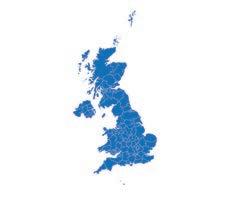

UK population
DRAFT

to the nearest 10 000)
New Zealand: land area 269 055 km2
UK: land area
New Zealand: length of roads
243 610 km2
UK: length of roads
Paved roads:
5981.3 km North Island
4924.4 km South Island
Unpaved roads:
31 400 km
Paved roads:
422 100 km
Unpaved roads:
54 350 km
1 Circle any of the following that could be the actual population of New Zealand. a 5 18 9 675 b 522 076 c 5 10 0 494 d 5 15 4 989 e 5. 22M
2 Circle any of the following that could be the actual population of the United Kingdom. a 68.9M b 68 327 453 c 68 3 47 297 d 68 34 4 539 e 68. 342M
3 Which of the following is the best estimate for the difference between the land areas of the two countries: 25 000 km2, 2500km2, 26 000 km2 or 2600 km2?
4 By how much is the land area of New Zealand bigger than that of the UK?
5 Estimate the total land area of the two countries. Explain the way that you have rounded the numbers for your estimate.
6 What is the actual total land area of the two countries?
DRAFT
7 Which of these is the best estimate for the total length of paved roads in New Zealand: 11 500 km, 10 500 km or 11 000 km?
8 What is the difference between the length of paved roads on the North Island and the South Island?
Rounded estimate: Actual:
9 The length of the paved roads in New Zealand is approximately how many kilometres less than those in the United Kingdom: 421 000 km, 401 000 km or 411 000 km?
10 What is the difference between the length of unpaved roads in New Zealand and the United Kingdom?
Rounded estimate: Actual:
Extended practice
Amazing but fairly useless fact: If every single person from Australia came to live in New Zealand, there would still be more than twice as many people living in the United Kingdom than in New Zealand. Use the facts and figures about New Zealand in the table below to complete the tasks.
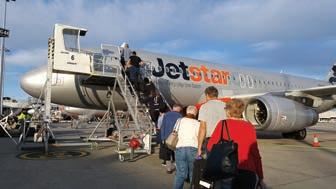
Some facts and figures about New Zealand




DRAFT


Approximate length and width of New Zealand (in miles)
miles top to bottom
miles side to side
New Zealand population In the year 1955: 2 13 9 672
the year 2024: 5.214M
year 1955:
the year 2024: 408 00
Wellington population In the year 1955: 132 65 4 In the year 2024: 424 00 0 Pet population In the year 2024: 4.6M
1 According to the data in the table on page 23, what proportion of the New Zealand population in 2024 lived in Auckland?
a As a rounded fraction:
b As a percentage to one decimal place: (Your teacher may ask you to use a calculator).
Show your working below.
c If you were writing the information about the proportion of people who live in Auckland for a newspaper report, would you use the fraction or the percentage figure? Give a reason for your answer.
2 Did you know that humans only make up around 5% of the population of the country? Which of these is the best estimate for the number of animals and humans that live in New Zealand?
DRAFT
95M, 99M, 104M
3 To the nearest ten thousand, by how many did the population of Christchurch increase between 1955 and 2024?
4
a Which city’s population had an increase of around 300% from 1955 to 2024?
b According to the data, what was the actual percentage increase (to one decimal place)?
5 Auckland had a large population increase between 1955 and 2024. A TV reporter would be unlikely to give the exact figures but would round the information to make it easily understood by the viewers. Describe the increase as accurately as possible but, at the same time, giving the information in a user-friendly way.
DRAFT
6 The 1955 figure for the population was exact. However, the number for 2024 was rounded to the nearest hundred thousand. Why do you think it was shown as a rounded number?
7 The length and width of New Zealand is shown in miles. A kilometre is approximately 5 8 of a mile. Convert the information from miles to approximate kilometres and then (with your teacher’s permission) check the figures in a computer search engine.
Unit 2: Topic 2 Multiplication
We often think of multiplication as being connected with division. For example, 25 × 5 = 125 and 125 ÷ 25 = 5.
However, multiplication is also directly connected with addition.
It is perhaps not surprising that, when they invented the multiplication symbol in the 1600s, they just rotated the addition symbol that had been invented in the 1400s.
Maybe you have heard the saying: A good mathematician is a lazy mathematician? It doesn’t mean that people who are good at maths are lazy, it just means that they look for ways to save time.
Multiplication is, in fact, a number that is added together a lot of times. Instead of adding 19 + 19 + 19 + 19 + 19 + 19, we can save time by multiplying. We can call
Guided practice
1 Write the answers to these addition problems. Use a “lazy” method (but not a calculator!).
a 23 + 23 + 23 + 23 + 23 + 23 + 23 + 23 =
b 150 + 150 + 150 + 150 + 150 + 150 =
c 95 + 95 + 95 + 95 + 95 + 95 =
d 347 + 347 + 347 + 347 + 347 + 347 + 347 + 347 + 347 =
DRAFT
In question 1, you might have thought of an even “lazier” method than writing an algorithm to get the answers. For example, in 1b you might have thought something like 6 × 150 is the same as 3 × 300, so the answer is 900
2 Find the answers to these addition problems. Calculate mentally if you wish.
a 49 + 49 + 49 + 49 + 49 =
b 205 + 205 + 205 + 205 + 205 + 205 =
c 198 + 198 + 198 + 2 + 2 + 2 =
d 999 + 999 + 999 + 999 + 999 + 999 + 999 + 999 + 999 =
Independent practice
In multiplication there are “laws” that people have thought up. These “laws” are ideas that help people in their maths because they never change and are always true. In the same way that the law of gravity says that an apple goes downwards when it leaves the tree, there is a law in maths called the commutative law. This means that the answer to a multiplication doesn’t change if you move the numbers around. For example, 12 × 3 has the same answer as 3 × 12.
The associative law is similar and is useful if there is a list of numbers in the problem. Let’s look at 25 × 7 × 2. We could think of it as (25 × 7) × 2. We could also say 25 × (7 × 2) or even (25 × 2) × 7. Which do you think would save time?
1 Show how you find the answer to the following.
a 4 × 8 × 5 = =
b 25 × 3 × 4 = =
c 4 × 3 × 15 = =
d 7 × 5 × 6 = =
The distributive law tells us that you can “distribute” (or split up) the multiplication to make it easier to solve.
DRAFT
7 × 13 = 7 × 1 ten plus 7 × 3 ones or 7 × 13 = 7 × (10 + 3)
For example, what is 7 × 13? If you know your 13 times table, you know the answer is 91. If you don’t, you can think of the problem like this:
2 Show how you find the answer to the following.
a 5 × 17 = 5 × ( + ) = + =
= 7 × 10 + 7 × 3
= 70 + 21 = 91
b 24 × 7 = × ( + ) = + =
c 37 × 4 = × ( + ) = + =
d 8 × 35 = × ( + ) = + =
In short multiplication, we write 19 × 6 like this: We use the distributive law because we split 19 × 6 into 10 × 6 + 9 × 6.
The distributive law is very useful when doing a long multiplication, such as 41 × 28.
This becomes 41 × 2 tens + 41 × 8 ones.
Before solving this, we need to practice the short cut for multiplying by tens. Some people say that, to multiply by 10, you just add a zero. But this is not true. (Think of $2.35 × 10. It certainly does not equal $2.350!)
Reminder: when multiplying by 10, the digits move one column to the left. So, for 23 × 10, the 2 tens move over to the hundreds and the 3 ones move to the tens. What about the space left by the 3? We put in a zero to fill the space.
3
2 tens become 2 hundreds 3 ones become 3 tens If there’s an empty space, the zero fills it.
3 In parts a and b below, what is the digit 5 worth after the calculations? In parts c and d, what is the digit 5 worth in each number?
a 59 × 10 b 546 × 10
c 3.5 d 5328
4 Try to calculate these mentally.
You can use the 10 trick to multiply by more than one ten. For example, 23 × 20 = 23 × 2 tens = 230 + 230 = 460.
a 18 × 20 =
b 13 × 30 =
DRAFT
c 15 × 50 =
d 25 × 40 =
5 Use the distributive law to show how you can split these into two multiplications.
For example, 24 × 28 = 24 × 20 + 24 × 8.
a 23 × 19 =
b 37 × 26 =
c 82 × 25 =
d 53 × 26 =
Extended practice
Long multiplication gets its name because it spreads a long way down the page.
48 × 28 = 48 × 2 tens plus 48 × 8 ones
This is how we set out 48 × 28 as a long multiplication.
+ Add the two products.
1 Use the long multiplication method for the following.
× 20
The zero fills the empty space because we are multiplying by 2 tens.
DRAFT
2 Anahera is saving for a new game. She saves $15 a week for 13 weeks. Does she have enough for the $200 game?
Show how you get the answer.
Working-out space
3 a Write the number of years and months since you were born.
b How many months old are you?
c Counting a year as 365 days, how many days old are you?
4 The Po – hutu Geyser erupts around 17 times a day. Based on that average, how many times does it erupt in:
a August?
b June and July?
c a leap year?
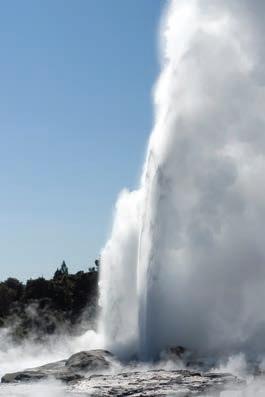
5 Did you know that in a worldwide survey in 2024, New Zealand topped the list of the most ice cream eaten per person per year? The amount is averaged out at 28.4 litres per New Zealander. How much ice cream is that for:
a a group of 15 people?
b your class?
DRAFT

Unit 2: Topic 3 Division
The vocabulary of division
When you were younger, you probably called division “sharing” and wrote number sentences such as 25 shared by 4 = 6 remainder 1, or 25 ÷ 4 = 6 r 1.
Here are four words that are used to describe division:
The dividend is the starting number – the one that is going to be divided.
The divisor is the number that the dividend will be divided by.
The quotient is the result of the division.
The remainder is what is left after the dividend has been split up.
Guided practice
1 There is one digit missing from each dividend. Fill in the gaps.
2 There is one digit missing from each quotient. Fill in the gaps.
3 The divisor is missing from these problems. Fill in the gaps.
4 The remainder is missing from these problems. Fill in the gaps.
5 If $22 is shared between 4 people, which division word describes the $22?
Using remainders sensibly
In the real world, people have to decide what to do if there is a remainder. If two people were sharing three small pizzas, they almost certainly wouldn’t leave the remainder as 3 ÷ 2 = 1 r 1. They would share it and say, “We get 1 1 2 each”. It would be different if $3, or three tennis balls, had to be shared between them. They would need to decide what to do.

If the quotient has a remainder, we can use fractions or decimals or just leave the remainder. The pizza remainder would become a fraction, the $3 would be divided using decimals, but the tennis ball would have to stay as a remainder.
DRAFT
1 In these division algorithms, there is the same dividend, the same divisor and the same quotient, but the remainder has been used differently. Match a division with each situation.
22 marbles and 5 people
22 apples and 5 people
$22 and 5 people
2 Re-write using the symbol. Show the remainders as fractions. Simplify the fractions where possible.
a 64 234 ÷ 7 = b 39 266 ÷ 4 =
c 43 4 84 ÷ 6 = d 59 3 40 ÷ 9 =
3 Re-write using the symbol. Use decimals for the remainder. Round the answer to the nearest one hundredth when necessary.
a 28 5 37 ÷ 4 = b 74 354 ÷ 6 =
c 75 389 ÷ 8 =
e 147 534 ÷ 9 = d 58 341 ÷ 7 =
DRAFT
275 369 ÷ 5 =
Long division
Long division looks complicated but all you need is a little patience. There are five steps for long division. This shows the five steps using a 1-digit divisor. Some people make up a little saying to remember the steps.
Don’t Make Sandwiches, Bring Rhubarb
Steps for long division
1: Divide
2: Multiply
3: Subtract
4: Bring down
5: Repeat (or remainder)
It works in the same way with a 2-digit divisor.
Don’t Make Sandwiches, Bring Rhubarb
Steps for long division
1: Divide
2: Multiply
3: Subtract
4: Bring down
5: Repeat (or remainder)
4
Use the D.M.S.B.R. method for the following. Use “r” for the remainder if necessary.
Extended practice
Estimation and rounding are an important part of long division, especially when large numbers are involved. For example:
How many 19s are in 83? My estimate is 4 because 20 × 4 = 80.
Check by multiplying: 19 × 4 = 76. So, we were close: 83 ÷ 19 = 4 r 7.
How many 295s are there in 1775? My estimate is 6 because 6 × 300 = 1800.
Check by multiplying: 295 × 6 = 1770. So, we were close: 1775 ÷ 295 = 6 r 5.
1 Estimate the quotient to the nearest whole number. Then write a division algorithm to find out how close you were.
a 372 ÷ 31 = Estimate: b 624 ÷ 24 = Estimate
DRAFT
c 532 ÷ 19 = Estimate:
Use this information about flightless birds to complete the activities. Don’t forget to use rounding and estimation to help you.

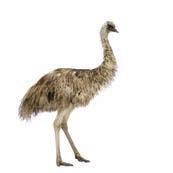
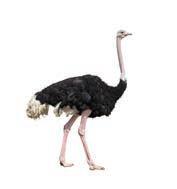
2 True or false? An ostrich is more than twice as heavy as an emu.
3 True or false? It would take 20 kiwis to balance one emu?
4 To the nearest whole number, how many kiwis would it take to balance one ostrich?
5 How many kiwi heights are the same as the height of an emu. Write the remainder as a decimal to two decimal places.
DRAFT
6 How many kiwi heights are the same as the height of an ostrich. Write the remainder as a decimal to two decimal places.
7 How many times heavier is each bird than its egg? Write your answer to the nearest whole number.
a kiwi
b emu
c ostrich
Unit 2: Topic 4 Order of operations
The order of operations
If you want your calculator to divide 125 by 5 and the answer shown is 625, there is only one person to blame. A calculator always does what it is asked to do. So, if you press × instead of ÷, it won’t argue with you and ask you if you’re sure that’s what you want. It will multiply 125 × 5.
A calculator ALWAYS does what it has been told to do. However, what if the calculator has been programmed to calculate in a different way than you want it to work?
If you press 2000 + 12 × 2 =, the calculator might begin with 2000 + 12 and then multiply by 2 which equals 4024.
A different calculator might multiply 12 × 2 and then add 2000 which equals 2024.
It all depends on the way the calculator has been programmed. The order in which we (and calculators) should work is called the order of operations, which we call GEMA. Here’s how it works:
1st G
Grouping
2nd E Exponents
3rd M Multiply and Divide
4th AAdd and Subtract


Anything that is grouped together in a bracket is calculated first.
2 × (3 – 1) = 2 × 2 = 4
Next comes exponents (and/or square roots).
4 x 32 = 4 × 9 = 36 √ 64 + 4 = 8 + 4 = 12
Then work from left to right doing division and/or multiplication. 10 + 6 ÷ 2 = 10 + 3 = 13 2 × 3 + 2 = 6 + 2 = 8 10 ÷ 2 – 3 + 2 × 6 = 5 – 3 + 12 = 14
Finally work from left to right doing addition and/or subtraction.
4 + 2 × 3 = 4 + 6 = 10 5 × 4 – 3 = 20 – 3 = 17 25 – 10 + 3 = 18
Guided practice
1 Test out your calculator with some of the operations on this page to check whether it is following GEMA. If possible, try the same with a different calculator. How well did the calculator(s) function?
Independent practice
1 Use the rules of GEMA to solve the following problems without a calculator. Remember to work from left to right.
a 6 + 21 ÷ 3 = b 3 × 4 – 2 =
c 45 – 9 × 4 = d (3 + 13) ÷ 4 =
e 8 + 3 × 15 = f 42 × 2 =
g √ 64 ÷ 2 = h 3 × (15 – 3) =
i 72 − 32 = j (21 ÷ 3)2 =
k 16 – (8 ÷ 2) × 3 + 3 =
l 14 + √ 81 – 7 =
m (2 + 8)2 – 72 = n 3 + (18 ÷ 2) – 32 =
o 18 ÷ 3 + 7 × 6 = p 6 × 5 – 4 × 3 ÷ 2 =
2 Equations are number sentences in which there are two sides that balance each other. For example, 2 + 3 = 4 + 1.
2 × 5 + 3 = 3 + 2 × 5
Using GEMA, decide whether the following expressions balance. If they balance, write them like this: If they do not balance, write them like this: 5 + 3 × 2 (5 + 3) × 2 ≠
a 24 ÷ 4 + 2 and 24 ÷ (4 + 2)
DRAFT
b 2 × 42 and 42 × 2
c 3 × 6 − 3 and 15 + 2 × 5
d 5 × (4 + 1) and 52
3
e √ 9 × 32 and 3 3
f 18 ÷ 2 + 42 and 18 ÷ (2 + 42) =
g 7 + 3 × 2 and (7 + 3) × 2
h (√ 25 + 3) × 2 and √ 25 + 3 × 2
Not only do you need to take note of the brackets, you also need to work from left to right. If there is a division and then a multiplication, the division comes first. For example:
Expression:
Step 1: Grouping (brackets)
12 ÷ (8 – 2) + 3 × 5
12 ÷ 6 + 3 × 5
Step 2: × and ÷ working from left to right (so divide first) 2 + 3 × 5
Step 3: Multiply before adding 2 + 15
Step 4: Add 17
DRAFT
Evaluate the following. Use the example above as a guide to show the steps you use to find the answer.
If there are brackets inside other brackets, evaluate the inside brackets first. For example:
Expression: 5 × [16 ÷ (32 – 5) − 2]
Step 1: Grouping (inside brackets first)
Step 2: Grouping (division first)
5 × (16 ÷ 4 − 2)
5 × (4 − 2)
Step 3: Grouping 5 × 2
Step 4: Multiply 10
4 Evaluate the following. Use the example above to show the steps you use to find the answer.
Extended practice
1 Write an expression that would solve this problem. Remember to use GEMA.
Kai has $40 of birthday money to spend. She meets her Aunty at the gate who says, “I will give you a quarter of what you have as an extra gift.” Kai is so excited she doesn’t notice that her Aunty gives her $2 less than she had promised. Kai buys 3 pens at $3 each and then counts her money. How much does she still have left? Show the steps you use to solve the problem.
DRAFT
2 Jack was going shopping. He was planning how much money he would need. He wanted three books at $12 each, a pair of jeans at $40 and four paint brushes at $1.50 each.
a Write an expression to show how much he would need.
3
b When he actually went shopping, he found that the jeans were discounted by 10%. However, there was a 10% increase on the price of each paint brush. How much did Jack end up saving? Show the steps to find the amount he actually spent and calculate the amount he saved.
A building company has put aside $4000 in order to buy three mobile phones for its workers. When the invoice arrives, it shows that the phones are $1295 each.
In addition, if the invoice is paid within 7 days, there is a 10% discount on the total price. How much is left out of the $4000 if they pay the invoice within 7 days? Write an expression and show the steps to solve it.
DRAFT
4 A shop is selling computer games for $90. Wiremu and his brothers, Tamati and Niko, want to buy three between them. When they arrive at the store there is a special offer of a 25% discount. They decide to buy 6 games. How much do they each pay?
Write a numerical expression to represent this situation and then find the price paid by each brother.
Unit 2: Topic 5 Integers
Integers
All whole numbers are integers. They can be positive numbers (I have 8 pairs of shoes) or negative numbers (the temperature at the Coronet Peak was −8ºC.) In maths, a number with a minus sign in front of it is a negative number. For example, −8 is negative 8. Positive numbers don’t need a symbol in front of them, which is perhaps just as well or shops would need to have signs saying things like +$10! The only number that is neither negative nor positive is zero. Integers can be shown on a number line:
–5–4–3–2–1012345
Guided practice
1 a Write the missing numbers on this number line. –4–3–10 35
b What is the “mystery” integer? We can call it x
x < 1 but > −1 x =
2 Plot these letters on the number line: S: 4, I: 2, I: −2, K: −4, W: 0.
–5–4–3–2–1012345
DRAFT
3 Use the number line to answer the questions.
a Which two numbers are 5 places from zero?
b Which number is 2 places less than zero?
c Which number is 2 places to the left of positive 1?
d Which number is 2 places to the right of positive 1?
e Which number is 5 places to the left of negative 1?
f Which number is 8 places to the right of negative 10?
4 Which numbers are missing from this number line?
Independent practice
Comparing positive and negative integers
1 Plot these numbers on the number line with a dot.
–6 –7 –8 –9 –10
a −5
b 7
c −3
2 Using the number line in question 1, write the correct symbol (> or <) between these numbers.
a −5 7
b −3 −5
c −10 −7
d 1 −3
DRAFT
3 It is possible to plot fractions and decimals on a number line. For example, the red dot shows the position of negative 1 2 . The blue dot shows negative 1 1 4 123 0 –1 –2 –3 –5 4 –1 2
a Work out the position of negative two and a third. Plot it on the number line with a dot and label it as an improper fraction.
b Work out the position of 1.75. Plot it and label it on the number line.
4 a Plot these points on the vertical number line. 2, −5, 3, 0, −2, 4
b Write the numbers in ascending order.
c If this were a scale on a thermometer in °C, the coldest temperature would be
5 Use the number line and the symbols > or < to make these expressions true.
a 5 3
DRAFT
6 If the temperature is −2ºC and the air warms up by 5º, then the new temperature is .
7 Nikau visits the Ocean Swim Centre. The centre is at sea level. Fill the gaps in the sentences below with the appropriate number of metres and the word ”positive” or “negative” before the number indicating height or depth.
High board: 4 m
Ocean Swim Centre
Low board: 2 m
Depth of sea: 8 m
a When Nikau is on the low board, she is at m.
b When she is on the high board, she is at m.
c When she dives two metres under the water, she is at m.
d When she is at the water’s edge, she is at m.
e If she dropped a coin into the sea it would be at m.
8 Imagine the water at the Ocean Swim Centre is 14ºC. Nikau previously visited the swim centre in January and the air temperature was 21ºC.
DRAFT
a Would the water feel warmer or colder than it was in January when she dived in?
b How many degrees warmer or colder is the water?
If she dived into the water in July and the air temperature was −2ºC …
c Would the water feel warmer or colder when she dived in?
d How many degrees warmer or colder is the water?
9 Use the number line to complete these problems. For example, −3 + 2 = −1.
– 3 – 2 = –5– 3 + 2 = –1
a −3 + 1 =
b −4 – 1 =
c −2 + 3 =
d −7 – 2 =
e 2 – 5 =
f −8 + 7 =
Extended practice
The extremes of recorded temperatures from five countries are shown in this table.
1 Use the data in the table to complete these tasks.
a Which country has the lowest difference between low and high temperatures, and what is the difference?
DRAFT
b Which country has the highest difference between low and high temperatures, and what is the difference?
c Which country has a temperature difference of 82º?
d What is the difference between the highest and lowest temperatures recorded in New Zealand?
e If next year’s low temperature for the UK is 3.9º lower, what would the new low temperature be?
2 This is part of a statement for Bob the Baker’s bank account. Fill in the gaps to show what happens to the balance of the account.
3 In question 7 of the Independent practice section, you worked with heights above sea level and depths below sea level. The altitude of the place where you live is measured in metres above sea level. (There are not many places on land that are below sea level.) The highest point on Earth is at the top of Mount Everest, which is at an altitude of 8848 metres. However, it is not the tallest mountain.
The bottom of the tallest mountain is actually below the ocean. Your challenge is to try and find out some facts about this giant. You could start by asking questions such as: Where is the mountain? How tall is it? What is its name? How much taller than Mount Everest is it? How much of the mountain is below the ocean?
If you find this challenge easy, you could do some research into other high and low record breakers, such as: What is the highest and lowest temperatures recorded where you live? Where in New Zealand was the lowest recorded temperature measured and when did this happen?
DRAFT
Unit 3: Topic 1
Identify fractions, decimals and percentages
Part of any whole thing is a fractional part. The same fractional part can be shown as a decimal (0.5), a fraction or as a percentage (50%).
Certain situations use different ways to show fractions. In a race, for example, we would be unlikely to hear that the winner had finished in 10 seconds and 50% of a second!

Guided practice
1 Each of these shows the same fractional part. Choose the most appropriate way to represent them.

DRAFT
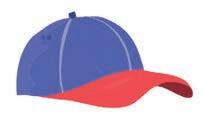
2
Fill in the gaps so that the values for each row are the same.
1 2
1 1000
3
Write the following in ascending order.
a 2.5, 2 1 10 , 0.25, 21%
DRAFT
b 30%, 0.31, 3%, 1 3
c 0.12, 12.5%, 12 1000 , 1.2
Independent practice
The following three fractional parts all represent the same value.
1 Represent the following as fractions, decimals and percentages. Write the value under each diagram.
Plotting fractions or decimals on a number line is sometimes hard to do accurately. For example, although 0.25 comes halfway between 0.2 and 0.3, a value such as 0.28 would not be so easy to plot.
2 Estimate the positions of the following decimals on these number lines by drawing an arrow to the correct place.
3
DRAFT
Estimate the positions of the following fractions on these number lines by drawing an arrow to the correct place. Use a ruler to help you.
Extended practice
Coaches of sporting teams sometimes ask for something that is technically impossible. If 100% means the whole thing , is it possible to give 110% effort?
Of course, it depends on the context. Is it possible for there to be more than a fraction of a pizza left over when friends get together? Yes!
With fractions, if we want to represent a number greater than one whole, we use mixed numbers, or improper fractions.
1 The amount left from this pizza party is 9 8 (improper fraction) or 1 1 8 (mixed number).
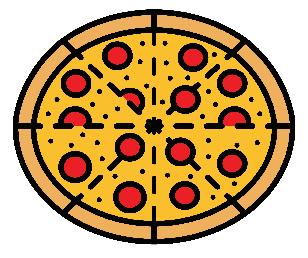
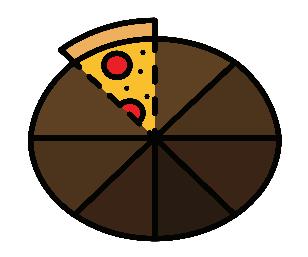
Show the following amounts as improper fractions.

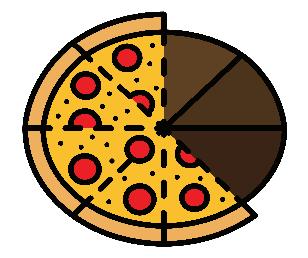

DRAFT


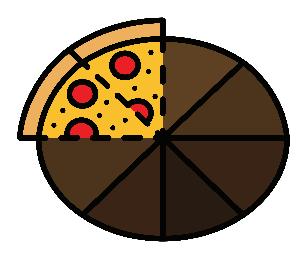



2 Show the following amounts as mixed numbers.
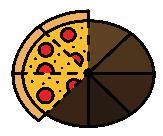
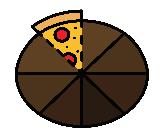


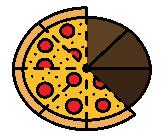


3 Follow the instructions to mark the following.


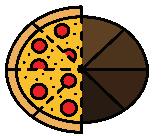



a On this number line, 0 and 1 3 have been marked. Mark the position of 1.
3
Explain how you found the position of 1.
b On this number line, 0 and 7 4 have been marked. Mark the position of 3 4
Explain how you found the position of 3 4
c On this number line, 0 and 0.45 have been marked. Mark the position of 1.5.
0 0.45
Explain how you found the position of 1.5.
DRAFT
d The progress bar shows that 35% of the program has been loaded. Mark the position of 80%. 35%
Explain how you found the position of 80%.
Unit 3: Topic 2
Compare, order and convert between fractions, decimals and percentages
When we look at fractions, we see that the smaller the fraction, the larger the denominator. This happens because the denominator tells us how many equal parts the whole has been split into. So, in 1 2 the denominator is a low number because the whole has only been split into two parts. Whereas 1 100 means that the fractional parts are a lot smaller. The fraction wall below shows one whole split into various fractions.
Guided practice
1 Label one fractional part of each row on this fraction wall.
One whole
DRAFT
2 Find fractions on the fraction wall above that are equivalent to:
3 Revise the equivalence of basic fractions, decimals and percentages by completing this table.
Independent practice
Simplifying fractions
1
Many fractions are equivalent to other fractions. 9 12 is equivalent to 6 8 and 3 4 However, we say that 9 12 , in its simplest form, is 3 4 . That’s because there is no simpler fraction that is equivalent to it.
DRAFT
2 Some fractions cannot be simplified further. Circle the fractions that are already in their simplest form. 8 12 , 2 11 , 3 7 , 2 10 , 4 7 , 9 12 , 5 11
Simplifying a fraction is a simple process. We just need a knowledge of factors. We find the common factors of both the numerator and the denominator. The common factor of 20 and 25 is 5.
Next we divide the numerator and the denominator by the common factor. So, 20 25 in its simplest form is 4 5
3 Divide the numerator and denominator by the common factor to simplify these fractions.
4 If there is more than one common factor, divide by the highest common factor (HCF).
18 24 18 24 3 4 1, 2, 3, 6, 9, 18 1, 2, 3, 4, 6, 8, 12, 24 ÷ 6 ÷ 6 =
Find the highest common factor and then simplify.
5 With large numbers, instead of writing all the factors, we can use repeated division.
To simplify 72 96 , we can see that they are both even numbers, so begin by dividing by 2. We repeat until the numbers can no longer be divided by 2. Do the numerator and denominator still have a common factor? Yes: 3! So, we divide by 3. If we simplify 72 96 , the answer is 3 4
On a piece of paper, use the repeated division method to simplify the following.
They’re both even numbers so we can divide by 2.
Now we divide by the HCF (3).
Converting from a decimal to a fraction
If somebody younger didn’t know that 3 4 = 0.75, how could you explain it?
When we see a fraction such as 3 4 , we can imagine a division symbol.
We can see the fraction as 3 ÷ 4.
÷ 3 4
If we divide 3 by 4, the answer will not be a whole number.
4 3 3 0 2 0 0 7 5
DRAFT
6 Convert these fractions to decimals by dividing the numerator by the denominator. Round to 3 decimal places if necessary.
You may have noticed that in question 6d, the 3 was repeating in the decimal columns. We call this a recurring decimal. (Recurring means it occurs again and again.) Once you find that a digit recurs in a decimal, place a dot (or a line) over the digit. For example, in question 6d, 1 3 = 0.33 or 0.3. If 2 digits repeat, as in question 6h, put a line over both digits: 5 11 = 0.45
7 Write the following as decimals. Use a recurring symbol if necessary.
Extended practice
1 Find the mystery fraction.
The denominator has exactly four factors. The numerator is the square of an odd number. The difference between the denominator and the numerator is 1. What is the mystery fraction?
2 You will need two calculators for this task: a basic calculator (usually capable of displaying up to 9 digits) and, if possible, an advanced calculator capable of displaying 16 or more digits.
a Enter the calculation for 3 7 on the basic calculator. Write down the decimal equivalence, according to the calculator.
b Enter the calculation for 3 7 on the advanced calculator. Write down the decimal equivalence according to the calculator.
c What pattern of repeated digits do you notice in the second answer?
3 Prove that the 6-digit repeating pattern in question 2c is a recurring one by calculating to 18 decimal places.
4 If a string of digits recurs, as in question 3, we place a dot over the first and last digits of the recurring sequence. For example, 1 7 as a decimal is 0.142857142857
Show the recurring decimal for the following fraction conversions. a 3 11 b 2 7
DRAFT
5 Find two or three more examples of sequences of digits that recur when a fraction is converted to a decimal.
6 Sensible conversion of fractions to decimals
It can be interesting to look at recurring digits when fractions, such as 4 7 , are converted to decimals. However, in the real world we seldom need so many decimal places.
a As a rounded decimal, how do you think 1 7 of a 4-metre plank would be measured?
b Imagine you had travelled 1 7 of a 400-kilometre journey. How would you round the distance you had travelled?
Unit 3: Topic 3
Multiplication of fractions and decimals. Finding percentages
Multiplying decimals is like multiplying whole numbers, but we mustn’t forget where the decimal point goes.
147 × 3 = ?
When multiplying with decimals, it is very useful to estimate so that you already know the approximate answer.
14.7 × 3 = ?
×
3
14.7 rounds to 15. So, the answer should be close to 15 × 3 = 45.
Guided practice
1 Complete the following. Estimate the answer to the decimal multiplication before completing it.
Multiplying fractions by whole numbers
Think about 1 3 × 4. It means we have 4 lots of 1 3
1 3 + 1 3 + 1 3 + 1 3 = 4 3
What about 2 3 × 4?
2 3 + 2 3 + 2 3 + 2 3 = 8 3
Now can you see patterns? The denominator is not changing. The numerator is multiplied by a whole number.
2 3 × 4 =
2 a Use the example above as a guide to show 3 8 × 4 as a repeated addition. Write the answer as an improper fraction.
3 8 × 4 = 3 8 + + + = b Change the improper fraction to a mixed number.
3
Finding the percentage of a number
Finding basic percentages of a number, such as 50% of $40, is quite easy because for 50% we can say 1 2 of $40, for 25% we can say 1 4 of $40 and 10% is 1 10 of $40. So, for 50% of something, we can recognise 50% as a half and divide the amount by 2.
Find the answers.
a 50% of 224 b 25% of $36
c 10% of $25
e 50% of $8.50
Independent practice
25% of 72
10% of $3
1 Remembering to put the decimal point in the correct place, write multiplications to solve the following.
1.95 × 7
× 4
× 5
DRAFT
64.6 × 3
When multiplying decimals by a 2-digit number, it’s like doing a long multiplication. Here’s a reminder of a way to multiply by 2 digits.
4 83 8 2 8 4
Add the two products. +
69 0 4314 ×
48 × 8
48 × 20
The zero fills the empty space because we are multiplying by 2 tens
However, if the number to be multiplied was 4.8 instead of 48, it can be confusing to know which column is which.
4 8 × 2 8
This is a way to overcome the problem. Suppose we want to multiply 2.95 by 15. We start off by rounding and estimating. We know what the approximate answer will be: 2.95 × 15 can be rounded to 3 × 15 = 45. So, if the answer is not close to 45, something has gone wrong!
• Step 1: Round and estimate (very important!).
• Step 2: Count the number of decimal places – it’s 2.
• Step 3: Ignore the decimal point and complete an ordinary multiplication.
• Step 4: Put in the decimal point so that there are the same number of decimal places as at the beginning.
• Step 5: CHECK! Is the answer close to the estimate? Yes! (Phew!)
2
Follow the same process to complete the following. Remember to follow the five steps from page 61.
a 1.95 × 17
Estimate: b 39.2 × 19
3
d 1.93 × 46
Estimate: e 3.02 × 55
Estimate:
Estimate: c 4.15 × 42
DRAFT
Estimate: f 1.125 × 18
Estimate:
Multiply to find the answers to the following. Write the answer as an improper fraction and then as a mixed number. Simplify the fractions where possible.
In maths, when finding a fraction or a percentage, the word “of” can be replaced by the multiplication symbol. This is how it works:
50 100 × 40 1 = 2000 100 = 20
50% of $40 is 50 100 × 40 = 20.
To find a percentage, such as 5% of 25, we can use the commutative law (moving numbers around) so that it doesn’t affect the value.
It works like this:
=
4 Find: a 5% of 30. b 45% of 125. c 15% of 70. d 60% of $35.
e 12% of $50. f 5% of $60.
DRAFT
5 Justin has drunk 55% of 200 bottles of unsweetened tea this year. How many bottles has he drunk and how many bottles are left?
Extended practice
To multiply a decimal by powers of ten is just a matter of remembering the “ten trick”.
1 Taking note of the number of zeroes for each question, mentally multiply the following.
Multiplying decimals by decimals is similar to the long multiplication of decimals in question 2 of the Independent practice section. You still follow the same five steps, but this time, you count the total number of decimal places in order to put the decimal point back in the correct place. If you look back, you will see that when we multiplied 2.95 × 15, we did a multiplication of 295 × 15 and then put the decimal point back into the answer.
Imagine the problem is 2.95 × 1.5. There are three decimal places, so we count three decimal places in the answer.
2 Follow the same process to complete the following. Remember to follow the five steps.
Unit 3: Topic 4
Addition and subtraction of fractions
Adding 4 9 + 1 9 is as simple as saying 4 + 1 = 5. So, 4 9 + 1 9 = 5 9 . We can add them because they are “like” fractions. To be alike they must have the same denominator. But what about 4 9 + 1 3 ? They don’t have the same denominator. Adding them would be like trying to convince people that adding four bananas and one apple makes 5 banapples. 4 9 and 1 3 are not alike. However, we can use our knowledge of equivalent fractions to give them the same denominator. 1 3 is equivalent to 3 9 , so we can change the addition to 4 9 + 3 9 = 7 9
Guided practice
1 Use your knowledge of equivalent fractions to add the following. Shade the diagram and fill in the gaps.
–
We can use a similar process to subtract one fraction from another. This diagram shows that 5 6 –1 3 is equivalent to
=
(or
2 Use the same process to complete this subtraction.
Independent practice
1 Add these fractions. Write the answer as an improper fraction. Then write the answer as a mixed number. Simplify answers where necessary.
For example, 7 10 + 4 5 = 7 10 + 8 10 = 15 10 = 1 5 10 = 1 1 2
a 7 9 + 1 3 =
b 7 8 + 7 8 =
c 9 5 + 7 10 = d 9 6 + 2 3 = e 8 6 + 2 3 = f 4 8 + 7 4 =
3 Use your knowledge of equivalent fractions to complete the problems. Draw diagrams on a separate piece of paper to help if you wish. a 3 8 + 1 4 = b 5 6 –2 3 = c 2 5 + 3 10 = For example, what is 1 2 3 –1 6 ? 1 2 3 –1 6 = 5 3 –1 6
DRAFT
2 Change the mixed numbers to improper fractions and then subtract using your knowledge of equivalence. Finally, change the answer back to a mixed number, simplifying fractions where necessary.
3 Solve the following addition and subtraction problems. Simplify fractions where necessary.
DRAFT
What if one fraction does not have a direct equivalence with the other? For example, what is 1 4 + 1 5 ? We need to find the lowest common multiple (LCM) of each denominator.
Here’s how it works:
Find the lowest common multiple of each denominator.
4: 4, 8, 12, 16, 20, 24
5: 5, 10, 15, 20, 25
The LCM is 20, so we convert both fractions to twentieths.
So, 1 4 + 1 5 =
4
Use the method shown on the previous page to complete the following. Convert improper fractions to mixed numbers where necessary.
a 1 6 + 1 9 =
The LCM is . b 5 6 + 1 4 =
The LCM is .
c 1 1 5 –2 3 =
The LCM is d 8 5 − 1 4 = The LCM is
e 4 8 + 1 1 12 =
The LCM is f 1 5 9 –1 2 =
DRAFT
The LCM is
Extended practice
1 A framing factory puts people’s photos into frames. They allow 2 1 2 minutes to select the frame timber, 3 1 3 minutes for cutting and 2 1 4 minutes for mounting the photo. How long do they allow for each photo to be finished:
a in whole minutes and a fraction of a minute?
b in minutes and seconds?
2 Some friends get together for a pizza party.
Wiremu eats 2 3 of a pizza. Maia eats 3 4 of a pizza.
Ari eats 5 8 . Tamati has 1 1 2 pizzas and Anahera has 5 6 .
a How much do they eat altogether?
b How many full pizzas do they need to order?
DRAFT
c How much is left to take home?

3
4
There were 18 900 people at a rugby game. 1 9 of them were supporters of the away team. Of the home team, 2 3 were adults, 1 5 were children and the rest were ground staff.
a How many away supporters were there?
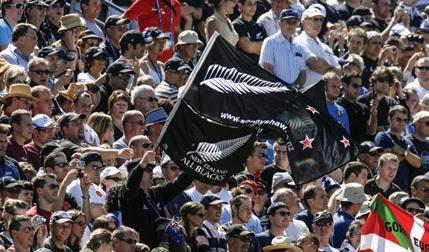
b How many adult supporters of the home team were there?
c How many children were there?
d What fraction of the home team were ground staff?
e How many ground staff were there?
A marathon race is just over 42 km. In the Mighty Manapanau Marathon, a ninth of the runners (104 people) gave up after 20 minutes. The same number gave up after half an hour. 3 18 of the total number of runners got a cramp and had to stop.
DRAFT
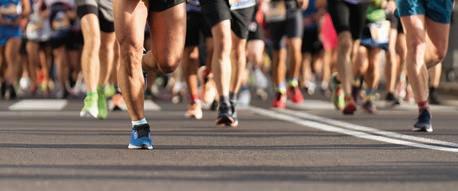
2 9 of the total walked the last few kilometres and one-third finished the race. 1 18 of the total runners took a wrong turn and ended up at the beach.
a How many people started the race?
b How many people finished the race?
c What fraction of the runners gave up?
d A quarter of the beach-goers had a swim. How many is that?
Unit 3: Topic 5
Proportional reasoning
Ratios are used to compare numbers or quantities to each other. There are 6 smiley faces and 4 sad faces.
We can say that the ratio of smiley faces to sad faces is 6 to 4. The ratio is written as 6:4.
Guided practice
1 Write the ratio of smiley faces to sad faces by counting.
2
In the example at the top of the page, the ratio was written as 6:4. This ratio can be simplified. In its simplest form, the ratio is 3:2, because there are 3 smiley faces for every 2 sad faces.
Write the ratio of smiley faces to sad faces in its simplest form.
DRAFT
Independent practice
In a pack of jelly beans, imagine that the ratio of white ones to black ones is 2:3.
If we know how many white ones there are, we can use the ratio to work out the number of black ones.
Imagine there are 8 white ones. 8 is four times bigger than 2, so to find the number of black ones, we multiply 3 by four. 2 × 4 = 8 and 3 × 4 = 12.
The pack has 8 white jelly beans and 12 black jelly beans.
Drawing a diagram can help.
1 Use the same ratio of white jelly beans to black jelly beans (2:3) to work out the number of black jelly beans in each pack if there are: a 6 white ones. b 10 white ones. c 16 white ones.
2 Use the same ratio of white jelly beans to black jelly beans (2:3) to work out the number of white jelly beans in each pack if there are: a 9 black ones. b 15 black ones. c 30 black ones.
Ratios can compare more than two numbers. In this pattern there are three colours. For every blue square there are 2 yellow squares and 3 green squares. The ratio is 1:2:3.
3 What is the ratio of blue to yellow to green squares in these patterns?
a The ratio is .
b The ratio is .
c The ratio is .
4 Colour the grid so that the ratio is 3 blue squares to 1 yellow square to 2 green squares (3:1:2).
5 Look at this bead pattern.
Describe the way that the bead pattern is made:
a in words. b as a ratio.
6 Choose a ratio to colour this 24-bead pattern using red, green and blue.
Describe the way that the bead pattern is made: a in words. b as a ratio.
7 To make 8 pancakes, Jo uses 120 g Ratios can be shown in a table. Fill in of flour, 250 mL of milk and 1 egg. the gaps in this table.
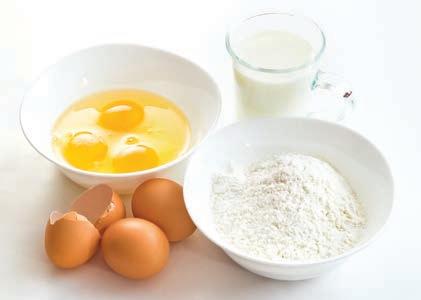
DRAFT
8 Sam has 18 sheep, 48 goats, 6 horses and 12 cows.
a Write the ratio of sheep, to goats, to horses, to cows in its simplest form.
b Jo has the same types of animals as Sam and they are in the same ratio. However, Jo only has 4 cows. How many of each of the other animals does Jo have?

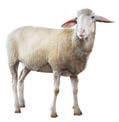
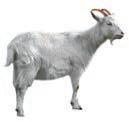
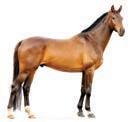
Extended practice
Proportion is different to ratio.
The ratio of sad faces to smiley faces here is 1:3.
Proportion compares one number to the whole object or group.
To find the proportion of sad faces we look at the total number of faces (8).
Next we look at the number of the faces that are sad (2).
The fraction of the group that has sad faces is 2 8 , which can be simplified to 1 4 .
So, the proportion of sad faces is 1 4
The proportion can also be written as a percentage (25%) or a decimal (0.25).
1 Write the proportion of smiley faces as:
a a fraction. b a percentage. c a decimal.
2 The ratio of oranges to apples in a box of twenty pieces of fruit is 1:4.
We can use the ratio and proportion to work out the number of oranges and the number of apples:
Add 1 orange and 4 apples: 1 + 4 = 5 (There are 5 “portions”.)
What proportion are oranges? one fifth
What proportion are apples? four fifths
1
5 of 20 is 4, so there are 4 oranges.
4
5 of 20 is 4 lots of 4, so there are 16 apples.
DRAFT
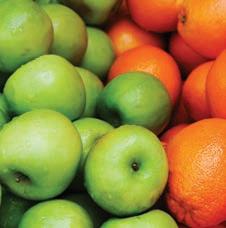
How many oranges and how many apples are in each box if the total number is: a 10? oranges b 25? oranges apples apples c 50? oranges d 35? oranges apples apples
3 Use the information to work out the numbers of oranges and apples in each box. a b
Unit 4: Topic 1 Financial plans
Financial planning
It was the week of Maia and Ari’s holiday. Their mum said that they needed to learn about budgets. She gave them each $25 for the whole day and an expense sheet to see how they went until lunchtime.
Guided practice
1 a Fill in the blanks on Ari’s expense sheet. Ari’s expense sheet
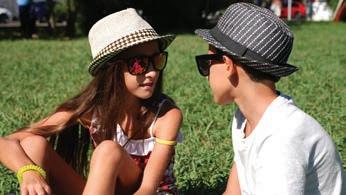
b Ari had a negative balance. Explain why.
2 Budgeting looks at two main things: income and expenditure. Income is the money that someone has, or expects to get. Expenditure is what they want (or need) to spend it on.
Imagine that you could have helped Ari prepare a budget for the morning. How might the budget have looked so that he had money left for the afternoon? Include up to five expenses.
DRAFT
3 Ari was in debt by lunchtime. What do you understand by “being in debt”?
Ari’s budget (for the day)
Independent practice
Budgeting in the real world
Some people have a weekly budget. This can help prevent debt. A balanced budget is one in which the expenditure is the same as (or less than) the income. On the previous page, Ari’s budget for the day was not balanced because he spent more money than he was supposed to.
1 Harper is 19 years old. She lives with her family and gives them money each month for food, electricity and other expenses. She has a daytime job and also does babysitting in the evening. This is her budget for a month.
DRAFT
a Fill in the totals for Harper’s monthly income and expenditure.
b Is Harper’s budget balanced? Explain why.
Saving and investing
This is when people put some of their money aside to use later, maybe for a holiday or for an unexpected expense. This could be in a savings jar or in something like a bank.
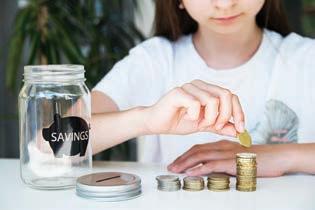
2 Harper has $100 left over at the end of each month. She decides to put a quarter of it in her savings jar and the rest in a savings account at a bank.
a How much is in her savings jar after 6 months?
b How much is in her savings account after 12 months?
Bank interest
If people put money into a savings account, a bank will usually give interest on the amount. This is a percentage of the amount that the saver has put into the account on top of the amount paid in. So, if Harper leaves her money in the bank, she ends up with more than she started with. The way that interest is calculated is complicated and changes from bank to bank and from time to time. 5% per annum (p.a.) is typical. Per annum is Latin for per year.
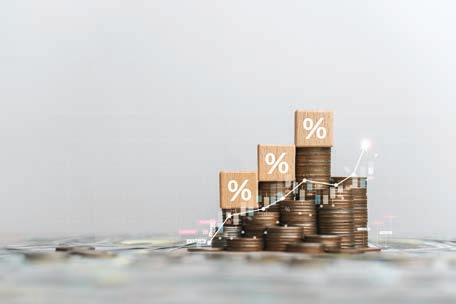
3 Imagine that the amount of interest Harper’s bank gives is 5% p.a. If she leaves $900 in the account for a year, how much is her savings account worth?
4 If Harper leaves the whole amount of her money in the account after 12 months, how much is it worth after:
a the second year?
DRAFT
b the third year?
Everyday bank accounts
Many people have what is called a current account at a bank. This is one that they pay money into regularly and use it for everyday expenses. Customers usually receive an online statement each month.
7 What was the total of debit card payments and ATM withdrawals for the month?
8 The standing order goes into a savings account each month. How much will Ms H. Shamui have paid into the account after one year?
Extended practice
Good debt and bad debt
When somebody owes money, they are in debt (as was Ari at the beginning of this topic). There are two types of debt.
Good debt
An example of good debt is when someone owes money and they know they can pay it back. They arrange to do that when they take out the loan. An example of good debt is someone who takes out a car loan or a mortgage for a house. Bad debt
Bad debt is when someone uses someone else’s money to pay for something without knowing whether they can pay it back.
Debit cards and credit cards
On the last page you saw how Ms H. Shamui sometimes paid using a debit card. When a debit card is used, the money automatically goes from her current account at the bank to the payee (the person being paid).
DRAFT

A credit card looks very similar, but there is one big difference: the person using it doesn’t pay straight away. The credit card company gives the payee the money and the card owner owes the credit card company the money within a month.
1
Imagine Reysha pays $200 for some ear pods with her credit card. If she pays the money back on time, she is free from debt. Credit card companies do not usually charge any interest if the amount owing is paid within a month. So how does the company make money from credit cards? They do this by making a tempting offer to the customers. On the statement, as well as telling the customer how much they owe, they show the minimum payment that can be made.
2 Why do you think minors are not allowed to have credit cards? Payments/ Refunds $1886.67
Overdue amount due now Nil Minimum payment due $10.00
If someone chooses to pay less than the full amount owing, the bank charges interest. The way it does this is complicated so, for now, imagine that the rate is 10% per month. Here is part of the credit card payment details:
Jan 1 BJ HiFi
Jan 15 payment - thank you
Jan 31 interest (10%)
Feb 15 payment - thank you
Feb 28 interest (10%)
Mar 15 payment- thank you
Mar 31 interest (10%)
Apr 15 payment - thank you
Apr 30 interest (10%)
a By how much did the amount owing to the bank change by the end of February?
b What was the total amount of interest paid to the bank up to the end of February?
c Continue the debit, credit and balance columns to the end of April.
d What is the main problem for the credit card holder?
Unit 4: Topic 2 Percentage discounts
Is it really a bargain? Sometimes shops try to trick us into thinking that items are a bargain when they may not be. For example, do they think we might not buy a $9.99 book if the price sticker said $10? There hardly seems to be a day that goes by without shops offering items at discount prices. The discounts are often shown as a percentage.

Guided practice
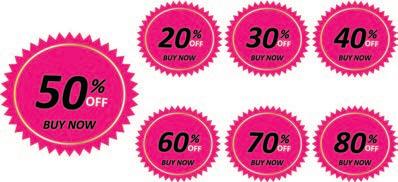
1 Why do you think price stickers are often shown as $1.99, $2.99 and so on?
2 If a book is advertised at $9.99 and the discount is 50% or 10%, we don’t need a calculator to work out the new price. Work out the new price of the book with each of the discounts below. Round the new price to a sensible amount.
50%
DRAFT
20%
30%
3 Describe the method you used to find the answers in question 2. (If you used a calculator, it’s okay to say that.)
4 Sometimes the amount of discount can be a bit harder to work out. A knowledge of fractions can help, as can starting from a percentage that you are familiar with. For example, imagine you are at a shop and the $7 socks you want have a discount of 5%. 10% is easy to work out ($0.70). 5% is half of 10%. So, the socks are discounted by half of $0.70 which is $0.35. Use the same method to find 5% of:
Independent practice
1 To find 50%, we halve the amount. Use your knowledge of the conversion between fractions and percentages to show the fraction equivalent of these common percentages. a 10% b 33 1 3 % c 20% d 66 2 3 %
1%
25% g 12.5%
2%
2 In the Guided practice section, you looked at a short cut for finding a discount price of 5%. Use a similar method for finding the following percentage discounts.
a 15% b 75%
3 Any percentage can be turned into a fraction because percent means “out of 100”. So, 7% is the same as 7 100 . Write the following as fractions.
73%
17% c 31%
DRAFT
43%
We can find less-common percentages of an amount (such as 11%) by converting to decimals. To explain the method, let’s start by finding 1 4 of $10. (We already know that 25% of $10 is $2.50, so we will know if the method works.)
1 4 = 25 100 = 0.25
0.25 of $10 is the same as 0.25 × 10.
0.25 × 10 = 2.5
So, 25% of $10 = $2.50.
4
It works in the same way for any percentage. For example, what is 11% of $10?
Estimate first: 10% of $10 is $1.00. So, the answer should be close to $1.00.
11
100 = 0.11
0.11 × 10 = 1.1
So, 11% of $10 = $1.1 (or $1.10).
Find the following. Don’t forget to estimate the answer first.
a 13% of $10 b 19% of $10
c 52% of $100
e 24% of $20
11% of $50
48% of $20
5 Most calculators have a key to help work out percentages quickly. Circle the two ways of keying a calculator so that it will calculate 10% of $135 correctly. Estimate the answer first so that you know whether the calculator is giving the correct answer.
a 10 × % 135 =
b % 10 × 135 =
c 10 % × 135 =
d 135 10 × % =
e 135 × 10 % =
DRAFT
6 Use a calculator to find the values. Don’t forget to estimate first
a 11% of $40 b 19% of 40
c 52% of $40
e 24% of $90
13% of $85
48% of $50
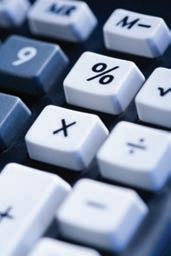
7
8
In the finance world, we often see percentages that are not whole numbers. To calculate something like 2.5% of an amount, we can still use the method from earlier. However, we need to use place value skills. For example, what is 2.5% of $10?
2.5% = 2.5 100
2.5
100 = 25 1000 = 0.025
0.025 × 10 = 0.25
So, 2.5% of $10 = $0.25.
a Tr y the method above to work out 4.5% of $10
b Use a calculator to check your answer to question 7a.
Round the figures to estimate the answers for the following. Then use a calculator method of your choice to work out the exact answer. Be sure to round the calculator answer to the nearest cent.
a 9.6% of $16
b 4.9% of $20
c 9.9% of $85
d 19.5% of $80
e 5.18% of $30
f 15.15% of $60
g 9.7% of $9500
h 10.95% of $5999
Estimate: $1.60 Exact answer:
Estimate: Exact answer:
Estimate: Exact answer:
Estimate: Exact answer:
Estimate: Exact answer:
Estimate: Exact answer:
Estimate: Exact answer:
Estimate: Exact answer:
Extended practice
1 We often see advertisements or signs in shop windows similar to the one on the right.
Shops are not allowed to lie to customers in their advertising.
a Why do you think shops use the word “up to…” in their signs?

b If a shop displays a similar sign, how many of the 100 items in the shop need to have a discount of 70%?
2 Imagine someone borrows $15 999 to buy a car at an interest rate of 5.16% p.a. (per year). If they pay the money back by the end of the year, how much interest will they have paid?
Estimate:
Calculator answer:
3 A supermarket usually sells a pack of nuts for $13.50. They have them on sale for 8% off the original price.
a What is the discount amount?
b What is the new price of the nuts?
4 School sweatshirts are on sale for 35% off the original price. If the sweatshirts were $75.50, what is the discounted price?
5 An old building is 195 metres high. Demolition begins on Monday. Each day, 16% of the building’s height is removed.
DRAFT
a How much is removed at the end of the first day?

b If x is the amount left after five days, write an expression to show how much is left. Start with x =.
c Use the expression to calculate how many metres are left after 5 days
d The demolition company works a five-day week. On which day will the whole building be down?
Unit 5: Topic 1 Number properties
Vocabulary for algebra
A variable is an amount that can have different values. For example, when a sunflower is growing, the height changes every week. So, height is an example of a variable.
A rule is something that is always true in a calculation between two (or more) variables. For example, every week the sunflower gets 16 cm taller.
A pronumeral is a letter or symbol that takes the place of a number. For example, we can let a be the number of weeks and b can represent the height of the sunflower.
A formula is a short way of writing a rule. For example, b = a × 16 (height = number of weeks × 16).
We can show how the height changes in a table of values
Number of weeks a 1234
Height (cm) b 16 32 48 64
Guided practice

1 a The climbing plant wisteria can grow 24 cm a month. If a is the number of months and b is the amount it grows, write a formula for the rate that a wisteria plant grows.
b Show the information about the way that a wisteria plant grows in a table of values.
DRAFT
Number of months a
Amount of growth (cm) b
c Use the formula to calculate the amount of growth for a wisteria in one year.
2 Use the following rule to write a formula and table of values that suits this situation: A pizza machine makes its own dough. It prepares and bakes 20 pizzas an hour.
a Formula:
b Table of values:
Number of hours a
Number of pizzas b
Independent practice
Laws of mathematics
A law, in maths, is something that is always true and correct. Here’s a reminder of some of them.
Commutative law
This is when the order of doing calculations can be changed without the answer changing. Addition and multiplication are commutative.
For example, 3 + 4 = 4 + 3 and 2 × 6 = 6 × 2.
Subtraction and division are not commutative.
For example, 5 – 3 ≠ 3 – 5 and 12 ÷ 4 ≠ 4 ÷ 12.
DRAFT
1 Use the commutative law. Draw number lines if you wish. Example: 4 + −2 is easier to work out if we change it to −2 + 4.
Associative law
This is when you can change how you group your addition or multiplication calculations without the answer changing.
Addition is associative. Example: −3 + 7 + 5 = (−3 + 7) + 5 = 4 + 5 = 9.
Multiplication is associative. Example: 2 × 5 × 12 = (2 × 5) × 12 = 10 × 12 = 120.
2 Use the associative law to make the problems easier to solve.
Example: 17 + 3 + 19 = (17 + 3) + 19 = 20 + 19 = 39
a 27 + 21 + 19 =
b 13 × 5 × 4 =
Distributive law
This tells us that multiplying a number by two (or more) numbers added together gives the same answer as doing each multiplication separately. This is easier to understand with number examples: 3 × 43 is the same as (3 × 40) + (3 × 3).
3 Use the distributive law to make these easier to solve.
a 5 × 47
b 6 × 32
DRAFT
Inverse properties
An operation has a corresponding inverse operation
The inverse operation of addition is subtraction.
The inverse operation of multiplication is division.
4
Write expressions to show that the inverse operation rule does not apply to subtraction and division. Use the ≠ symbol.
a subtraction: 4 – 3 = 1 but 1 – 3
b division: 12 ÷ 4 = 3 but
5 To make 25 mL of apple juice it takes 1 apple.
a Using the pronumerals j for the amount of juice and k for the apples, write a formula that could be used to show the amount of juice that can be made from a variable quantity of apples.

b Show the information in a table of values for making quantities of up to 200 mL of apple juice.
Extended practice
DRAFT
1 In the Independent practice section, you looked at inverse operations. Look at the information about apple juice in question 5. Using an inverse operation and the information in the table of values, write a formula that can be used to calculate how many apples are needed to make a variable amount of apple juice.
2 Use the formula in question 1 to calculate the number of apples needed for the following quantities of apple juice.
a 50 0 mL
c 1 L
e 1.5 L
b 650 mL
d 1250 mL
f 5 L
g 50 L h 7.5 L
3 Using the original formula for the amount of juice that can be made from any number of apples, complete this sentence: The amount of juice from half an apple is
4
A tall building is being constructed. Each new floor adds 2.9 metres to the height of the building. Complete the following table of values to show how the new building will grow as it is being built.
5 Use the information in question 4 to complete the following tasks.
a Using x for the building height and y for the number of floors, write a formula that could be used to calculate the height of the building after any number of floors have been built.
b Use the formula to find the height of the building after 50 floors have been built.
DRAFT
c The finished building height is 280.2 metres. This includes a 4.7 m antenna on the top. Write an expression that will show how many floors the building has, then solve it.
Unit 5: Topic 2
Prime numbers, composite numbers and divisibility
If you have completed Topic 3 in Unit 1 (Exponents and square roots), you will be familiar with the difference between prime and composite numbers. Here’s a reminder.
Prime number: Any whole number greater than 1 that has only two factors (1 and itself). For example, 7 is a prime number because the only factors are 1 and 7.
Composite number: Any positive whole number that is divisible by at least one number other than 1 and itself. For example, 6 is a composite number because it has 4 factors: 1, 2, 3 and 6.
Guided practice
1 There is a prime number missing from each row in the chart above. Fill in the missing prime numbers.
2 What is the lowest composite number?
3 How do you find out whether a number has 2, 3 or 4 as one of its factors? As a start, almost 75% of the first 100 numbers are composite. This is not surprising when you think that every even number greater than 2 is a composite number. A divisibility chart can help to find factors. Use this divisibility chart to complete the tasks.
the last digit is even.The last digit in 37 792 is even (37 792 ÷ 2 = 18 896).
3 the sum of the digits in the number is divisible by 3. In 825 the sum of the digits is 8 + 2 + 5 = 15. 15 can be divided by 3. (825 ÷ 3 = 275)
4 the last 2 digits can be divided by 4. In 748 the last 2 digits are 48. 48 can be divided by 4. (748 ÷ 4 = 187) Circle the numbers that are divisible by:
Independent practice
This divisibility chart can be used to find out whether 2, 3, 4, 5, 6, 8, 9, 10 and 12 are factors of other numbers.
Is this a factor of the number? Yes, if
Example
2 the last digit is even.The last digit in 37 792 is even. (37 792 ÷ 2 = 18 896)
3 the sum of the digits in the number is divisible by 3.
4 the last 2 digits can be divided by 4.
In 825 the sum of the digits is 8 + 2 + 5 = 15. 15 can be divided by 3. (825 ÷ 3 = 275)
In 748 the last 2 digits are 48.
48 can be divided by 4. (748 ÷ 4 = 187)
5 the number ends in 5 or 0. 23 685 ends in 5. (23 685 ÷ 5 = 4737)
6 the number is even and it is divisible by 3.
8 the last three digits read as a number that can be divided by 8 or the last three digits are 000.
9
the sum of the digits in the number is divisible by 9.
828 is even and the sum of its digits is 8 + 2 + 8 =18. 18 is divisible by 3. (828 ÷ 6 = 138)
In 4744 the last 3 digits are 744. 744 is divisible by 8 (93).
(4744 ÷ 8 = 593)
In 37 512 the sum of the digits is 3 + 7 + 5 + 1 + 2 = 18. 18 is divisible by 9.
(37 512 ÷ 9 = 4168)
10 the number ends in 0.369 420 ends in 0. (369 420 ÷ 10 = 36 942)
12 the number is divisible by 3 and 4.
DRAFT
5472 is divisible by 3 (Total of digits = 18) and by 4 (last 2 digits divisible by 4), so 5472 is divisible by 12 (= 456).
1 Circle the numbers that are divisible by a 2 37 416 44 4 221 9 99 9 990
2 Use the divisibility chart to help you decide whether these numbers are prime or composite.
Number Besides itself and one, circle any other factors (12 and under).
a 105 2, 3, 4, 5, 6, 7, 8, 9, 10, 11, 12
b 127 2, 3, 4, 5, 6, 7, 8, 9, 10, 11, 12
c 297 2, 3, 4, 5, 6, 7, 8, 9, 10, 11, 12
d 181 2, 3, 4, 5, 6, 7, 8, 9, 10, 11, 12
e 223 2, 3, 4, 5, 6, 7, 8, 9, 10, 11, 12
f 287 2, 3, 4, 5, 6, 7, 8, 9, 10, 11, 12
g 323 2, 3, 4, 5, 6, 7, 8, 9, 10, 11, 12
Is it prime or composite?
DRAFT
3 These division problems have 2-digit divisors. Use a strategy that does not involve using a calculator to find each quotient.
a (no remainder)
323 ÷ 17 =
b Show the remainder as a recurring decimal.
347 ÷ 15 =
c Show the remainder as a fraction.
38 5 ÷ 14 =
d Take the remainder to 3 decimal places.
10 57 ÷ 8 =
4
In question 2, you used divisibility tests to see whether a number was prime or composite. This worked because the potential factors were 12 and below. However, the test gave a false result for question 2g (323), which is not a prime number. 323 has two factors between 12 and 20 and it is a composite number. Which are the two factors of 323 between 12 and 20?
5 Use mental strategies to decide on the most likely answer for the following:
a 20 8 ÷ 26 = 6, 7 or 8?
b 580 ÷ 29 = 18, 20 or 22?
6 Put in the last digit of these numbers to make them divisible by the divisor shown.
a 35 23 The divisor is 9. b 52 31 The divisor is 6.
c 75 20 The divisor is 8.
Extended practice
d 45 6 9 The divisor is 7.
1 Before you have a look at the following ideas for a divisibility test for 7 and 11, what do you think is the largest 2-digit number that is divisible by 7?
Divisibility rules for 7 and 11
Is this a factor of the number?
DRAFT
7
the last digit is doubled then subtracted from the remaining digits (read as a number) and the answer is divisible by 7.
Total the digits in every odd column starting at the units.
Total the digits in every even column starting at the tens.
Subtract. If the answer is 0, or is divisible by 11, the original number is divisible by 11.
203: 20 – (3 × 2) = 14. 14 is divisible by 7, so 203 is divisible by 7. (203 ÷ 7 = 29)
Note: if the answer to the subtraction is 0, the number is divisible by 7 (e.g. in 126:
12 – (6 × 2) = 0. (126 ÷ 7 = 18)
11 319: Total of digits in ones, hundreds and tens of thousands = 13.
Total of digits in tens and thousands = 2
13 – 2 = 11.
11 is divisible by 11, so 11 319 is divisible by 11 (= 1029).
2
Try the divisibility test to see if 7 is a factor of any of the following:
406 1792 10 01
3
Try the divisibility test to see if 11 is a factor of any of the following:
319 31 411 23 425
4
Here is another divisibility test for 7:
A number is divisible by 7 if 5 times the ones digit PLUS the rest of the digits is divisible by 7.
Use it to find out whether 7 is a factor of 3668.
5 The difficulty with the rule in question 4 is that you still might have to do a written division at the end of the solution (406 ÷ 7 in question 4).
Here is a simplified version said to have been discovered by a 12-year-old in Nigeria only a few years ago:
A number is divisible by 7 if 5 times the ones digit PLUS the rest of the digits is divisible by 7. Repeat until there are 2 digits left. If they are divisible by 7, the original number is divisible by 7.
This was his example: 1687: 168 + 7 × 5 = 203; 20 + 3 × 5 = 35. 35 is divisible by 7, then so are 203 and 1687.
Try the test with 2996.
DRAFT
6 Discussion point: given that almost everybody has access to a calculator, are divisibility tests for 7 or 11 necessary?
Unit 5: Topic 3 Algebraic
expressions
As you are probably aware, good mathematicians look for time-saving short cuts. So, instead of adding a list such as 35 + 35 + 35 + 35 + 35 + 35 + 35 + 35 + 35 + 36, a mathematician spots that the list can become 35 × 10 + 1 = 351.
In algebra, one short cut is to dispense with the multiplication sign when working with pronumerals. So, if we look at the formula that was used to show how fast sunflowers grow in Unit 5, Topic 1, we said that the number of weeks (pronumeral a ) × 16 gives the height (pronumeral b ). The formula became: 16 × a = b. We can shorten this and simply write 16a = b. Numbers are always placed in front of pronumerals.
Guided practice
1 Simplify these expressions by removing the multiplication sign.
2 It is ok to miss out the multiplication in an algebraic expression (such as 2 × a = 2a ).
Explain why it is not ok to miss out the multiplication sign in an expression that contains only numerals (such as 2 × 7).
3 Fill in the gaps to match each algebraic expression in the box with its simplified version in the oval.
DRAFT
Term
A term can be a single number or variable, or a product of numbers and variables. Terms are separated by either + or – signs.
8x + 9
TermTerm
4 In an algebraic expression, terms can be added or subtracted if they are like terms. Terms with the same variables are the same. For example, 2a + 2a = 4a, but 2a + 2b cannot be put together because they are not like terms.
Simplify these algebraic expressions by adding or subtracting the like terms
Independent practice
Simplifying algebraic expressions
Expressions with grouping symbols and multiplication signs can be simplified by removing the multiplication sign. For example, a multiplied by b can be written simply as ab
For example:
DRAFT
3 × (a – 2) can be simplified as 3(a – 2).
z × (4 + y ) can be simplified as z (4 + y ). (4 – s ) × 3 can be simplified as 3(4 – s ).
To simplify multiplication with brackets, you need to put the number outside of the brackets in front of the brackets. This is a mathematical convention.
1 Simplify these expressions by removing the multiplication sign where necessary.
a 5 × (j + 3) = b 3 × (4 − b ) =
c a × (b 2 + 4) = d (5 – y ) × 3 =
Division in algebraic expressions can also be simplified in order to remove the ÷ symbol. In the same way that 1 ÷ 2 can be written as 1 2 , a ÷ b can be written as a b
2 Write these division expressions in their fraction form.
a y ÷ 5 = b b ÷ 3 =
c 5 ÷ z = d 2a ÷ 3 =
e ab ÷ 3 = f c ÷ 2 =
g ac ÷ 4 = h (3 × 4) ÷ d =
Expanding expressions
DRAFT
An algebraic expression can be expanded by carrying out the operations that are shown. For example, 2(a + 3a ) becomes 2(4a ) = 8a Another example is 2(2a + b ). We cannot add 2a and b in the brackets so you need to do × 2 to both terms, 2a and b. The expanded form is 4a + 2b 2(2a + b) = 2 × 2a + 2 × b = 4a + 2b × 2 × 2
3 Expand these expressions by removing the grouping symbols. The first one has been started for you.
a 4(a + 3) = 4a + b 5(b – 2) =
c 2(d – 4) = d c + 5(a + 4) =
Substituting numbers for pronumerals
When we know the number that a pronumeral has taken the place of, we can substitute the number back into the expression. If we know the value of a and of b in the expression ab, we can substitute the numbers into the expression. Let’s imagine that a has a value of 5 and b has a value of 10.
If we substitute the numbers for the pronumerals, this becomes 5 × 10. (Notice that we need to put back the multiplication sign so as not to confuse ourselves!)
4 Find the value of the expressions in questions 2f, g and h by substituting the following numbers for the pronumerals:
a = 2 b = 5 c = 8 d = 3
a c 2 = b ac 4 = c 3 × 4 d =
5 Find the value of the expressions in question 3 by substituting the following numbers for the pronumerals:
a = 2 b = 5 c = 8 d = 3
a 4(a + 3) = b 5(b – 2) =
c 2(d – 4) = d c + 5(a + 4) =
Extended practice
1 If the expression 3a (a + 2) was expanded, explain why it would become 3a 2 + 6a and not 3a 2 + 6a 2 .
DRAFT
2 Look at the first four terms of this stick pattern.
Which two formulae show the way this stick pattern grows if y = the number of sticks and z = the number of pentagons?
A y = 1 + (z × 4) B y = 5 × z − (z − 1) C y = 5 × z
3
For the stick pattern in question 2, prove that one of the equations is not true. (HINT: Choose one of the terms and substitute a numeral for z.)
4 In question 3, you were asked to find equations that were true or untrue by substituting numerals for the pronumerals. You also saw that there can be more than one rule to show the way a pattern grows. For example, the pattern below can be described as: You start with one stick and then add two to make each triangle or You count 3 sticks for the first triangle and 2 sticks for every other triangle
a For the stick pattern, let a = the number of sticks and b = the number of triangles.
Is one or both of the following formulae true for the number of sticks needed to make the pattern?
A a = 1 + (b × 2)
B a = 3 × b – (b – 1)
b Substitute 10 for the number of triangles. How many sticks are needed?
5 Working with other polygons, draw geometric “stick” patterns from, for example, squares, hexagons etc. Find one (or more than one) rule for the way the pattern grows. Try to write an algebraic expression for each rule you find. Make sure you prove whether or not a rule is true by substituting a numeral into the expression.
DRAFT
Unit 5: Topic 4
Linear equations
If you are one of the people who get panicky when they hear words like algebra and solving equations, DON’T! You’ve already been doing it comfortably for years. (Kai has 3 pens in one pocket and 4 in another becomes 3 + 4 = 7. There, that’s an equation solved.)
In order to work with equations, here is a reminder about some of the vocabulary needed in algebra.

Expression: An expression is a number sentence with at least one term. This means that all terms are expressions but not all expressions are terms. For example, 2a, 25 × 3 or a – b.
Equation: An equation is a number sentence in which there are two expressions and both are equal. For example, 3 × 4 = 2 × 6 or 2a = a + a. In an equation, both sides must balance.
We can show it in a diagram. The scales are balanced because the mystery number (a ) in the red cup + 3 more beads balances 5 beads in the green cup.
You can probably already guess the mystery number, but we can show it mathematically. To keep everything balanced, whatever we do to the left (red) side, we must do to the right (green) side. So, we remove the 3 extra beads from the left side and we also take away 3 beads from the right side. Now we are left with a = 5 – 3 = 2.
Guided practice
DRAFT
1 Use the same method to solve the following. a x + 4 = 9 x + 4 − 4 = 9
Independent practice
1 Solve these equations by recognising that the same thing must be done to both sides to keep the balance even.
b + 5 = 25
m + 3 = 20
y − 4 = 12
4
n – 2 = 14
Linear equations
A linear equation is one that describes a line. It can have numbers and pronumerals but there are never exponents such as x2 , x3 etc. For example, x + 5 = 13 is a linear equation, whereas x2 + 5 = 13 is not a linear equation.
The linear equation above is like the equations on the first page. To solve it, we could use diagrams or just write the steps to solve it.
Equation: x + 5 = 13. We need to take the 5 away from x, BUT what we do to the left-hand side (LHS), we must do to the right-hand side (RHS).
Step 1: x – 5 = 13 – 5
x = 13 – 5
x = 8
DRAFT
2 Solve the following.
a x + 9 = 21
c 5x = 35
x − 6 = 14
x 2 = 14 e x + 25 = 15
x 15 = 5
3 Sometimes we can solve an equation by guessing, checking and improving on the guess. Here’s an example of the guess, check, improve method:
Find the value of b if 3b = 162.
Try b = 50: 3 × 50 = 150 (too low)
Try b= 55: 3 × 55 = 165 (too high)
Try b = 54: 3 × 54 = 162 (just right!)
Therefore b = 54.
Using a table similar to the one below and the guess, check, improve method, find the value of z if: a 4z = 9 6
24z = 216
Word problems
We can use algebra to solve a word problem. Here’s an example:
Let a = Lisa’s age.
4a = 44
a = 44 ÷ 4
DRAFT
z 8 = 6
Lisa’s uncle is four times older than she is. He is 44 years old. How old is Lisa?
a = 11 Lisa is 11 years old.
4 Write an equation and use a similar method to solve these word problems.
a Noah’s Great Grandma is 100. She is eight times older than he is. How old is Noah?
b Maia has 37 stickers in her book. Her brother Ari has four times as many. How many stickers does Ari have?
Guess, z = LHS
RHS
LHS = RHS?
Extended practice
1 Use an appropriate method to solve the following equations.
a 2g = 26 b h + 9 = 3 4 c 0.5x = 4 d b + 1.5 = 4
2-step equations
x − 5 = 13 or 2a = 8 are one-step equations because only one step is involved in finding the value of the pronumeral.
3a − 5 = 10 is a two-step equation because two operations are performed on the pronumeral a : you times it by 3 and then subtract 5. We always undo the last operation done to the pronumeral. In this case, subtract 5.
3a − 5 + 5 = 10 + 5
3a = 15 Then we undo the times by 3.
3a ÷ 3 = 15 ÷ 3
a = 5
4(a + 2) = 16. Think about which operation (times by 4 or adding 2) was performed last on a. In this case, × 4 is the last operation done to a, so you undo it first.
4(a + 2) ÷ 4 = 16 ÷ 4
a + 2 = 4 Then we undo + 2.
a + 2 – 2 = 4 – 2
a = 2
DRAFT
2 Solve the following 2-step equations.
a 3 – m = 1
b 2b + 4 = 25
c 2(3 + b ) = 24
d 4(3 + x ) = 18
3 Use the example to solve the equations.
Example: Find the value of c if a = 3 and b = 5.
c = 2a + b c = 2 × 3 + 5 c = 6 + 5 Therefore, c = 11.
a Find the value of y if w = 4 and x = 7.
y + 8 = w + 3x
b Find the value of m if j = 5 and k = 10.
m = k j
c Find the value of y if w = 5 and x = 12.
4y = 2w + x 2
d Find the value of m if j = 8 and k = 2.5.
2(m + 3) = 2k + j 2
4 Look at this expression and give a possible value for a 5a < 20 A possible value for a is
5 Explain why b cannot have a value of 5 in this expression: 3b < 14.
6 Imagine that the total of the ages of two sisters is 17. One is 3 years older than the other. What are the ages of the sisters? You could use algebra to simplify the problem. Which of the following two linear equations will solve the problem if we let a be the age of the younger sister and b be the age of the other?
DRAFT
You could try the guess, check, improve method to substitute a number into each equation.
a a + (a + 3) = 17
b b = a + 3
c How old are the two sisters?
7 Backtracking is a useful tool to check your working. It’s like doing an inverse operation in a problem: We start with p Add 2. Multiply by 3. The answer is 21. Could p be worth 5? If we backtrack the operations the value of p is 5. Write and solve an equation that shows the equation to be true. p × 3 + 2 21 5 ÷ 3 – 2 21
Therefore, p = 5
Plotting a linear equation on x and y axes
You can see the word line in the word linear. A linear equation can be plotted on a graph using the two axes, the horizontal axis, x, and the vertical axis, y
In the following equation, we are going to let y = x + 1. We can then calculate the value of y for any variable of x For example, if x = 1, then y = 1 + 1 = 2. If x = 20, then y = 20 + 1 = 21. We will use the following values for x : 2, 0 and −2. We can set them out like this and calculate the corresponding values for y
To plot the values onto a graph, we convert the values to coordinate points. Remember, for coordinates we give the value of the x -axis, followed by the y -axis value. So, the coordinate points are: (2,3) (0,1) (−1,0) x y x y x y
The coordinate plane, with the points joined by a straight line, looks like this:
8 Follow the method above to find the values of y for the following equation and write the coordinate points.
Coordinate points
9 Plot the points from question 8 on the graph on the right and join them with a straight line.
DRAFT
10 Find the values of y for the following equations and then plot the points on the graph in question 9.
a y = 3x
b y = x – 5
c y = x + 3
Substitute 2, 0 and −2 for x
Substitute 3, 5 and −2 for x.
Substitute 4, −2 and −6 for x
Unit 5: Topic 5
Interpret and explain patterns
Patterns
In the animal world, there are those, like bees, who seem to love patterns, and those, like the tree sparrow, that aren’t too fussy about them. We humans seem to love patterns in our lives. Imagine finding house number 329 on a road if there were no pattern to the way the houses were numbered. We can find patterns in numbers and in shapes.


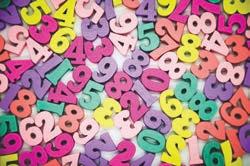

Guided practice
1 Complete and describe the patterns in these number sequences.
a 1, 2, 4, 8, , , The pattern is
b 225, 196, 169, 144, , , The pattern is
c 512, 343, 216, 125, , , The pattern is
2 In this table you see the first four terms of the sequence in question 1a.
12 4 8
a Complete the table for the next three terms.
b Make a table for the number sequence in question 1b.
c Which number will be at the ninth term in the number sequence?
3 Create number sequences using the following rules.
a Start at 5 and find the next four terms by adding 15: 5, , , ,
b Start at 3 and find the next four terms by multiplying by 2 and subtracting 1: 3, , , ,
c Make a table for the number sequence in question 3b.
Independent practice
1 In Unit 5, Topic 3, on page 99, you looked at stick patterns.
a Remind yourself of the rule for the way the pattern grows by writing a formula for a variable number of triangles. Let a be the number of sticks and b be the number of triangles.
b Use the formula to show the number of sticks needed for 50 triangles.
2 This is a diagram for a square pattern made with sticks. Complete the table.
DRAFT
No. of squares
No. of sticks
3
The sequence for the first five terms of the triangle pattern from question 1 has been plotted on the grid on the left below. Plot the sequence for the square pattern from question 2 on the grid below right.
Pattern of triangles
Number of sticks used
Number of triangles made 25 20 15 10 5
Pattern of squares
Number of squares made 25 20 15 10 5 Number of sticks used
4 For the stick pattern of triangles, we used y = 1 + (the number of triangles × 2).
The formula from this becomes y = 1 + (z × 2) if y is the number of sticks and z is the number of triangles.
So, if we want to know how many sticks are used in a pattern of twenty triangles, we can work it out like this:
Let z = 20
y = 1 + (20 × 2)
y = 1 + 40
y = 41
Therefore, the number of sticks used in twenty triangles is 41.
a Think of the square stick pattern. Using the same pronumerals, write a formula for finding the number of sticks used in a variable number of squares.
DRAFT
b Use the formula to calculate the number of sticks needed for 30 squares.
5
6
Here is the inverse of the formula in question 4: z = y – 1 3
Let’s see whether it is true for finding the number of squares (z ) that can be made using a variable number of sticks (y ).
a Inspect the formula by substituting 16 for y
b What is the result if you use 17 as the variable for y?
7
c Explain why the formula does not work for any variable of y.
If the stick pattern of triangles was arranged like this, how would it affect the formula in order to show the number of sticks needed for any number of triangles?
Draw the first five terms of a stick pattern of squares that would make this equation true if y is the number of sticks and z is the number of squares: z = 4y
DRAFT
Extended practice
1 Complete the table for the first six terms of this pattern made with sticks.
of pentagons
2 After making the first pentagon, what is the rule for adding sticks to the pentagon pattern: Using your rule, what is the number of sticks that would be needed for the 12th term of the pattern
3 On the blank grid, plot the sequence for the first eight terms of the pentagon pattern.
4 Draw a line through the points you plotted. Describe the line.
5 Write a linear equation that is true about the stick pattern of pentagons.
Unit 5: Topic 6
Working with spreadsheets
Spreadsheets
Computer spreadsheets have lots of uses, from doing complicated calculations to presenting data on a beautiful graph. However, relying on a spreadsheet is a bit like relying on a calculator for your maths work: they are really useful, but they are only as smart as the person who enters the information. If you want a calculator to multiply 283 × 17, it will do it in the blink of an eye, but if your finger hits the + key instead of the × key … well, you know the rest!
Guided practice
283 × 17 = 300? That can’t be right!
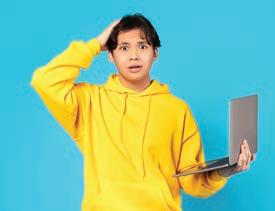
DRAFT
1 A spreadsheet has a whole screen full of “boxes” called cells. The cells are arranged in numbered rows and in columns that each have a letter. The name of the cell that says, “Hello” is A6.
a Which cell is highlighted (i.e. has a box around it)?
b Write the number 3 in cell A2 and the number 4 in cell B2.
2 For this activity, you will need access to a computer with a spreadsheet program, such as Excel or Numbers
a Pages in a spreadsheet are called sheets. If you open a new sheet, it will have lots of empty cells and a menu bar at the top. Click A2 and enter 3. Enter 4 in B2.
b To change the colour of the cells, or the font, you can use the Format buttons. Ask if you need help to find them.
c Click on A2 and change the cell colour. Click on B2 and change the font colour. It should end up looking something like this:
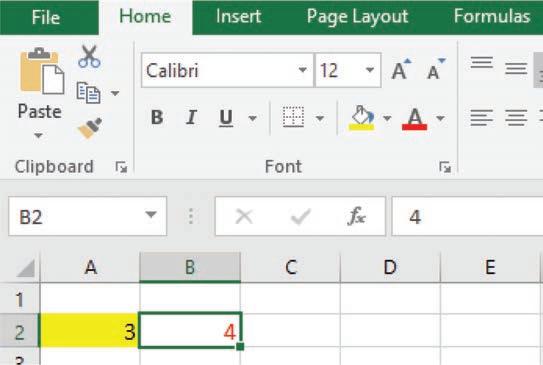
d If you have time, format other things such as the font size or the font, or place a border around a cell. Don’t forget, you need to click on a cell for the computer to know that you want to work on that cell.
Independent practice
Entering data on a spreadsheet
1 Here is a list showing the number of stickers seven people have.
Noah 25
Aria 43
Maia 3 3
Anahera 26
Jack 19
Wiremu 32
Olive 11
DRAFT
a Open a new sheet on a spreadsheet.
b Start at A1 and enter the names from cells A1 to A7.
c Start at B1 and enter the numbers down to B7. It should look like this:
d If you have time, or to practise your skills, you could ask your teacher if you can format the list. For example, you could change one of the names to your own. You don’t need to delete anything, just click on the cell and rewrite.
2 Often we want the program to work on a group of cells, such A1 to B7. To do this, click on A1, hold the SHIFT key and click on B7. The cells should look something like this:
3 Sorting the data We are going to ask the computer to sort the data alphabetically.

a Make sure cells A1 to B7 are highlighted and then click Data on the menu button.
b Click on the button that will sort the list from A to Z.
c It should now look like this:
d What happened to the data about the number of stickers in column B?
e What would be the problem if you just highlighted cells A1 to A7 and clicked “sort alphabetically”?
4 With your teacher’s permission, try the above with your own set of data.
5 A spreadsheet can work like a super-calculator. However, some symbols for basic calculations are different. Here are five basic symbols used on a spreadsheet: –, *, +, / and ‘enter’ (or ‘return’ on a Mac).
Match them with the normal calculation symbols by writing them in this table.
DRAFT
6 We are going to tell the spreadsheet program to do some calculations for us.
a Open a new sheet.
b Enter x7 in cell A1 and the numbers 1 to 10 in cells A2 to A11.
c Enter the number 7 in cell B2. It should look like this:
d Click on cell B2. Click and hold on the dot at the bottom right-hand corner.
Drag down until you reach cell B11. When you let go, it should look like this:
7 Now we are going to get the program to work for us! We are going to use something that is already built into the program. It is called a Function. The function we are looking for is a formula to multiply. A function always begins with an = sign.
a Click on cell C2 to highlight it. We want to multiply A2 × B2. So, we enter =A2*B2 (no spaces and * for multiplied by ). When you enter this, the cells will change colour, like this:
x7
b Press Enter/Return and the multiplication is complete!
8 Now we want all the rows to be multiplied by 7. BUT there’s a short cut (phew!).
a Click on the bottom corner of cell C2 (just as you did in question 6 above).
b Drag all the way down to C11 to see what happens. It should now look like this all the way down to 10 × 7.
9 Let’s try an addition. On the first column, you had the numbers 1 to 10. The program will add any list of numbers but, for now, we’ll just get it to add all those numbers. We use a different formula.
a Click on A12.
DRAFT
b Type (no spaces and no need for upper case letters): = SUM(A2:A11).
Press Enter/Return. Hey presto! The sum is 55.
If you make a mistake, you will get an error message. Don’t panic! Just click the “undo” key and start again. (Don’t forget to put the brackets and the colon in the right places.)
Try other calculations. For example, your 17 times table.
Extended practice
More things we can do with a spreadsheet
1 Enter the following information from the results in the Rugby World Cup 2023 into a new Excel (or other) sheet. Don’t worry about the points difference at this stage. Start by entering “Country” in cell A1.
2 We want the program to subtract the points against from the points scored to find the difference. Ask the program to do that for France like this:
a Click on cell D2.
b Enter B2–C2 but, before pressing Enter/Return, click on the bottom right-hand corner of cell D2 and drag down to D6. You should see the following information:
c Enter the information into the table in your book.
3
4
The table does not look very interesting, but we can use another spreadsheet function to improve this by turning it into a graph. The spreadsheet’s name for a graph is a chart
a Click on cell A1, press shift and click on D6 to highlight all the cells. From the Insert menu, choose Chart, and then choose Column Graph
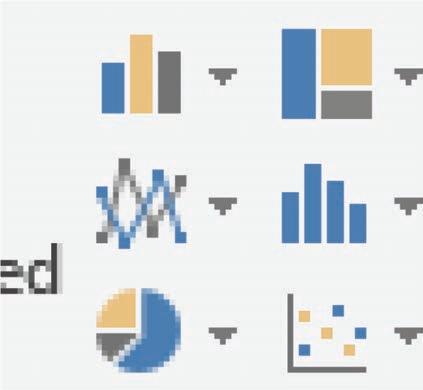
The column graph should look something like this:
DRAFT
If you have time, you can edit the chart title and colours on the graph. You could even add a flag for each country.
There are many more functions that you can use on a spreadsheet, such as finding the average of a set of numbers. Carry out some research to find out more. The world is your oyster once you have spreadsheet skills!
The metric system
New Zealand began using the metric system in the 1970s. Nowadays, around 95% of the countries in the world have adopted the system.
One metre is known to be one ten-millionth of the distance between the North Pole and the Equator, though it is doubtful whether anybody has actually tried that out with a trundle wheel!
A kilogram (kg) is said to be exactly the mass of one litre (L) of water.
Guided practice

1 Using powers of ten, which of these represents the distance in metres from the North Pole to the Equator?
2 1 L of water has a mass of 1 kg. Write the mass of these amounts of water in kilograms with decimal notation.
a 20 0 mL b 375 mL
c 1250 mL d 1 mL
e 20 mL f 950 mL
g 1 L 750 mL h 10 mL
DRAFT
3 Convert these masses to the equivalent amount of water. Write the answers in mL. a 1. 3 kg
4 A water truck is empty. Its mass is 2.75 tonnes (t). When it is filled with water, the mass is 4.075 t. How much water is the truck carrying?
Independent practice
1 Fill in the gaps in this table to show the sizes of these units of length in relation to each other.
2 Round to the nearest metre.
a 3.5 09 m b 3.09 m c 2597 cm d 2200 mm
3 Convert and round to the nearest centimetre. a 23 mm
4 This line is exactly 2 cm long.
a Without using a ruler, estimate the length of each of these lines to the nearest centimetre.
b Measure the following lines and complete the table.
5 Complete the table to show the conversions between these lengths.
6 Calculate the perimeter (P) of these regular shapes. They are not drawn to scale. Show the answer in cm and in mm.
DRAFT
7 Measure to find the perimeters of these rectangles. Show the answer in mm.
8
Calculate the missing lengths (x and y ) and show the perimeter (P) of these shapes. They are not drawn to scale.
Extended practice
Plasterboard is sold in various sizes. For some reason the lengths are in metres but the widths are in millimetres. The table shows the available sizes at a store.
m
4.2 m
4.8 m
5.4 m
6 m
DRAFT
Availability: Available, Not available, Special order
Ahmed and Amira are doing work at home. They know that plasterboard is quite easy to cut, but they don’t want to buy too much because it is quite expensive. They have measured everything in centimetres.
1
They need a board for a cupboard wall. It is 325 cm high and 120 cm wide.
a What size board should they get?

b What size of board will be left over?
2 This is a scale drawing that they made of another wall. The only height shown is the door. Take note of the scale of the drawing.
cm Scale 2cm : 1 m
They have worked out that they can buy just seven plasterboards for the room, and they only need to make one cut.
a Use the table above to decide which pieces they should buy.
DRAFT
b Draw on the diagram to show how they can place the boards. Write the dimensions on each piece of board.
3 The plasterboard costs $39.50 per square metre. How much does the board that Ahmed and Amira bought for the room cost?
Unit 6: Topic 2
Speed and time
Have you ever been on a trip that took lots longer than you thought it would? A journey of 60 km where the speed limit is 60 km/h should only take an hour. Of course, that’s not always the case. If the average speed is only 30 km/h, the journey takes twice as long. Three factors affect a journey: distance, speed and time
A car that goes at 30 km/h for 2 hours travels 60 km. The diagram shows that the speed × the time = the distance travelled. We can use the formula s × t = d : 30 × 2 = 60.
Guided practice
1 How far does a cyclist go if she cycles at: a 15 km/h for 2 hours? b 20 km/h for half an hour?
If we know a car goes 140 km in 2 hours, we can calculate the speed. The diagram shows that the distance ÷ the time = the speed. We can use the formula s = d ÷ t : 140 ÷ 2 = 70 km/h.
2 How fast is a cyclist going if she travels 24 km in 2 hours?
DRAFT
If we know a car travels 280 km at a speed of 70 km/h, we can calculate how long it takes. The diagram shows that the distance ÷ the speed = the time. We can use the formula t = d ÷ s : 280 ÷ 70 = 4 hours.
3 How long does it take a cyclist to travel 18 km at 9 km/h?
Independent practice
Here’s a reminder of the three triangles that show the relationship between distance, speed and time. SpeedTime
= Speed x Time
= s × t
You may wish to refer to the diagrams to complete the following tasks.
1 A French high-speed train leaves Paris at 8:30 am and arrives at Bordeaux at 11:00 am. It travels at 200 km/h. How far (in km) does it travel?
DRAFT
2 A 19th century train from Glenbrook, south of Auckland, goes at 30 km/h for the 7.5 km trip. How many minutes does the trip last?
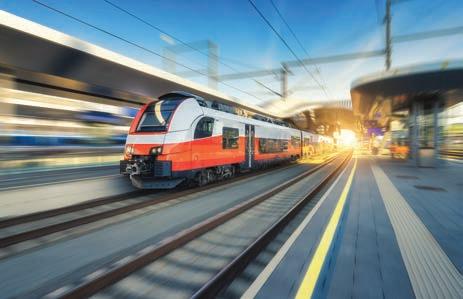

3
In the old days, car travel was a bit precarious. A car might take around 5 hours to complete a journey of 120 km. What would the average speed of the car have been?
4 The average time for the runners to cover 42.195 km in the Auckland marathon in 2023 was about four and a half hours.
a At a rounded speed, which of these shows the average speed of the runners for the four and a half hours: 6 km, 7 km/h, 8 km, 9 km?


b There were some runners who were older than 70. Some didn’t finish, whereas one completed the course in 6 hours. What was their average speed? Round the answer to two decimal places.
5 The Tour de France is a famous cycle race. The riders sometimes reach speeds of up to 80 km/h.
However, in the high mountains, they go much slower.
a Some riders average 20 km/h on a 10 km climb. How many minutes do they keep up that speed?
DRAFT

b One of the stages was 288.75 km. The leader averaged 35 km/h for the ride. How long (in hours) was he riding for?
6 A tortoise travels at 0.5 km/h for an hour and a quarter. How far (in metres) does it travel?
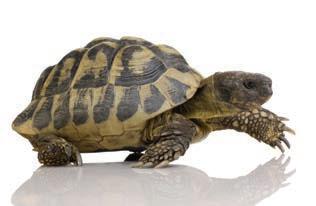
Extended practice
In 2009, Jamaican runner Usain Bolt became a new world record holder for the 100-metre sprint race. A really good Olympic sprinter can run 100 metres in 10 seconds. How fast do they run? Because they run a short race, we don’t calculate their time in km/h but in metres per second (m/s). This chart shows some times for completing 100 metres. Various times to cover 100 metres have been plotted on this graph. Usain Bolt’s time is shown in gold. However, the cheetah’s time is even faster.

1 Remembering the formula to find speed when distance and time are known, calculate the times for the following in metres per second (m/s). Round the speed to one decimal place if necessary.
a an Olympic sprinter
b the cheetah
DRAFT
2 a Estimate the time for the Year 7 person.
b What was the speed of the Year 7 person?
3 Look carefully at the graph to work out how long it took for the walker and Julia to complete 20 metres.
a Work out how long it took them to finish the 100 metres.
b What was the speed of the walker?
Cheetah
4
Usain Bolt broke the world record for 100 m at the 2008 Beijing Olympics. His record time was 9.69 seconds.
a As a fraction, what do the red digits in his record time of 9.69 seconds mean?
b How much faster than 10 seconds was this?
c Convert the answer to question b to milliseconds.
d His new world record in 2009 was 110 milliseconds faster than his 2008 world record. Write his 2009 world record time (in seconds).
5 Put the information from the graph opposite on a spreadsheet. Then use the following formula to show the speeds.
(Don’t forget to click and hold the bottom right-hand corner of cell D2 and drag down through the other rows so that the program does all the calculations for you.)
6 If you get the opportunity, you could add further names to the list to compare times and speeds (perhaps your own?).
Distance and displacement
On this phone map, we see that the car must travel 3.5 km. However, its displacement (the distance from where it started) is only 2.5 km. We sometimes refer to displacement by saying “as the crow flies”, because it is in a straight line.
DRAFT
Displacement 2.5 km
Total distance: 3.5 km
7 Olive swims at 3 km/h for 30 minutes in an Olympic-sized pool.
a How far does she swim?
b She swims three more lengths to warm down. Explain why her displacement is only 50 m.
Unit 6: Topic 3 Area and volume
Area is the region covered by something, such as the top of a table. It is typically described in square units. For example, New Zealand has an area of around 268 000 km2
Volume is the amount of space that something takes up and is normally described in cubic units. For example, the volume of this Rubik’s cube is 216 cm3.
Guided practice
Calculating area
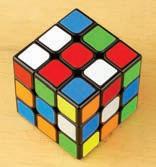
When we are calculating area, rectangles are the easiest shapes to work with because we just need to know the length and width (sometimes known as the breadth). We can follow the formula: Area = length × width (A = l × w) or Area = length × breadth (A = l × b).
cm
cm a b Area = Area =
Calculating volume
DRAFT
1 Use the formula to calculate the following areas. (They are not drawn to scale.) 2.5 cm 5 cm
When we are calculating volume, rectangular prisms are the easiest to work with because we just need to know the length, width (sometimes known as the breadth) and height. We can follow the formula: Volume = length × width × height (V = l × w × h).
2 Use the formula to calculate the volumes of the following rectangular prisms. (They are not drawn to scale.)
Independent practice
1 Calculate the area of the shaded parts of these diagrams. Use centimetres for the dimensions. (The shapes are not drawn to scale.) 9
2 Using B for the length of the base and H for the height of the triangle, circle any of the following formulae that could be used to calculate the area of a triangle. a Area = B 2 × H
e Area = B × 2 H
3 Which other dimension would you need to know in order to find the area of this parallelogram? (It is not drawn to scale.)
4 Measure to find the area of this rhombus.
5 Fill in the gaps to show how to convert between units of area. a 1 cm2 = mm2 b 1 m2 = cm2 c 1 ha = m2
d To convert 5cm2 into mm2 I would multiply by
e To convert 8m2 into cm2 I would multiply by
6 Write Yes or No next to the following formulae to show whether they could be entered into cell C2 in the spreadsheet in order to calculate the area of a triangle.
a = (A2*B2)/2
b = (A 2/B2)*2
c = (A2/2)*B2
d = (B2//2)*A2
Volume and capacity are related. Whereas volume is the amount of space something (like a box) occupies, capacity is the amount of something (usually a liquid) that can be poured into something. Litres and millilitres are typical units of capacity.
7 Using the conversion chart, fill in the gaps to convert between these units of volume and capacity.
8 What other measurement would be needed to be able to calculate the volume of this prism? 8 cm 3 cm
Calculate the volume of this right-angled triangular prism.
10 Calculate the volume of this triangular prism.
11 The Kims and the Smiths each have four people in the family. Each person showers for 5 minutes per day. The Kim family has a water-saving showerhead. It uses 8 L of water per minute. The Smiths have an old-style shower that uses 18 L per minute. Complete the table to show how much shower water each family uses.
Extended practice
DRAFT
Finding the area of any shape on which rectangles or triangles can be drawn is relatively straight forward. Finding the area of a circle, however, is slightly more complicated. Over 2000 years ago, in Ancient Greece, Archimedes found that the circumference of a circle divided by the diameter always has the same answer: π (pronounced pi), which can be approximated as 22 7 or 3.14.
The area of this circle is: 12.57 cm2
This can also be used to find the area of a circle. To find the area of a circle we multiply π by the square of the length of the radius of the circle. We can see the calculation in the formula A = πr 2
You may wish to use a calculator for the following.
1 What is the area of the following circles? They are not drawn to scale. Round to two decimal places. 5 cm
Finding the volume of rectangular and triangular prisms is just about as easy as finding the area of a triangle or rectangle. The good news is we can use the knowledge about the area of a circle to be able to calculate the volume of a cylinder. To find the volume of a cylinder we multiply π by the square of the radius of the base and then multiply the answer by the height. We can see the calculation in the formula shown on the right:
2 Use the formula to find the volume of the following cylinders.
DRAFT
Unit 7: Topic 1 Polygons and circles
A polygon is any closed two-dimensional (2D) shape with straight lines. A circle or any 2D shape with curved edges is not a polygon. In the living world, apart from a few animals such as bees and some spiders, humans are the only ones that seem to love polygons; we love right angles, especially in quadrilaterals. There are many types of quadrilaterals, but the square is the cream of the crop. There is no other quadrilateral which has at least one attribute (or property) of every other quadrilateral.
Guided practice
DRAFT
1 Here we can compare many types of quadrilaterals. Fill in the blanks. Are opposite sides equal? (Number of pairs?) Are opposite sides parallel? (Number of pairs?) Are all sides equal? Are adjacent sides perpendicular? Do the diagonals intersect? Do the diagonals bisect each other at right angles? Does it have rotational symmetry? (What is the order?) Name the shape.
Independent practice
1 a Compare the following types of triangles. Fill in the blanks.
Is it acuteangled? Is it obtuseangled? Is it rightangled? Is it a scalene triangle?
Is it an isosceles triangle? Is it an equilateral triangle? Does it have rotational symmetry? Is (are) the longest side(s) opposite the widest angle(s)?
DRAFT
b Explain the connection between the longest side and the widest angle in each triangle.
2 a Follow the instructions to draw this triangle.
• Using XY as a base line, draw a 5cm line at an angle of 60° from X.
• Label the new line XZ.
• Join points Y and Z.
• Mark the sides that are of equal length.
b What type of triangle is this?
3
4
a Follow the instructions to draw this quadrilateral.
• Using AB as a base line, draw line
AC 4.5 cm long forming an angle of 60° upwards from point A.
• Using AB as a base line, draw line
BD 4.5 cm long at an angle of 120° upwards from point B.
• Join points C and D with a straight line.
b Mark the sides that are parallel.
c What type of quadrilateral is this?
a Follow the instructions to draw this quadrilateral.
• Measure WX and draw line WY the same length as WX at an angle of 70° from point W.
• Draw line XZ the same length as WX at an angle of 110° from point X.
• Join points Y and Z with a straight line.
b What type of quadrilateral is this?
c Draw in the diagonals and comment on the angles formed at the place where the diagonals cross.
DRAFT
You are perhaps familiar with many parts of a circle, such as the circumference, the diameter and the radius. For the next task you will need to use three more terms:
Chord: a straight line from one point on the circumference to another, so that there are two segments (parts) of the circle.
Segment: a region of the circle that is formed when a chord is drawn.
Tangent: a straight line outside a circle that touches, but does not cross, the circumference.
1
a Use a pair of compasses to draw a circle with a radius of 3 cm. Let the circumference of the circle touch, but not cut, the line below (AB).
2
b With the compasses at the same setting, put the point anywhere on the circumference and cut the circumference with two small arcs.
c Draw a straight line, CD, between the points where the two arcs cut the circumference.
d Label lines AB and CD correctly as “tangent” or “chord”.
e Label the minor and major segments of the circle.
a Use geometrical instruments to draw quadrilateral WXYZ, which is a reflection of quadrilateral ABCD.
DRAFT
b Use geometrical instruments to draw a design that is congruent to this one.
Unit 7: Topic 2 Angles
An angle is formed at the point where two straight lines meet.
∠ ABC is formed where lines AB and BC meet, making an acute angle. We can identify an angle by using the vertex and the letters at the end of the arms. This angle’s name is ∠ ABC. The vertex letter is always in the middle of the three letters. When straight lines intersect (cross), more than one angle is formed.
Guided practice
1 In this diagram, lines AB and CD intersect at point E, making two acute angles and two obtuse angles. The arcs show that ∠ AEC is the same size as ∠DEB. ∠ AEC is adjacent to ∠ AED. ∠ AEC is vertically opposite ∠DEB.
In the diagram, which angle is:
a the same size as ∠DEB?
b vertically opposite ∠ A ED?
c adjacent to ∠DEB?
2 Complete the table.
Independent practice
1 In this diagram, the two lines make more than one angle. ∠DBC is the marked angle. The adjacent angle is called a supplementary angle because the sum of the two angles is 180º.
a What is the name of the supplementary angle?
b Draw a single arc on the supplementary angle.
c Explain why the angle marked with two arcs in the diagram cannot be called ∠B.
2 If the sum of two angles is 90º, they are called complementary angles. In this diagram, ∠ ABC is a right angle. The sum of angles ∠DBC and ∠ ABD is 90º. So, we can call them complementary angles.
a What is the size of ∠ ABD?
b Name the complementary angles in ∠ X YZ?
3 Complete the table of information about the following angles.
DRAFT
Name the marked angles. Are the angles adjacent? Are the angles complementary? Are the angles supplementary? Calculate the size of the unknown angle.
4
In this diagram, there are two pairs of equal angles. The arcs show that the vertically opposite angles are the same size.
a Name two angles that are supplementary.
b If ∠ AEC = 30º, what is the size of ∠DEB?
5 Calculate the value of x °. a x°
DRAFT
6 Name and calculate (do not measure) the size of the three other angles in this diagram.
Extended practice
Alternate angles are angles that occur on opposite sides of a line and have the same size. Corresponding angles have the same relative position at different intersections and are the same size.
Corresponding angles
Alternate angles x
1 In the diagram, identify the following angle pairs as adjacent, alternate, corresponding, vertically opposite, supplementary, complementary and/or equal.
(Note: More than one attribute may apply to each pair.)
a i ∠EFB and ∠FBC are .
ii ∠ ABF and ∠DBC are
iii ∠BFG and ∠DBC are .
iv ∠EFH and ∠BFG are
v ∠ ABD and ∠EFB are
b If ABD is 55°, then:
i ∠DBC = ii ∠FBC = iii ∠BFG = iv ∠ ABF =
2 Calculate and mark the sizes of the unknown angles in this parallelogram.
DRAFT
a ∠DAB b ∠ ADC
c ∠DCB
3 Prove by measurement and calculation that the sum of the angles in this trapezium is 360°. Write M (measured) or C (calculated) next to each angle as you mark its size on the diagram.
A polyhedron is a 3D shape with flat faces that are polygons. The word comes from Greek words meaning “many faces”. There are many types of polyhedrons (or “polyhedra” as the plural is sometimes written.)
A prism is a polyhedron in which the two bases (ends) are the same shape and size. All the edges of a prism are straight. A prism gets its name from its bases.

In a right prism, the angles between the base and the other faces are right angles. This rectangular prism is a right prism.
In an oblique prism, the angles between the matching ends and the other faces are not right angles. This rectangular prism is not a right prism.
We don’t see many oblique prisms in the built environment! Unit 8: Topic 1 Prisms and nets
Guided practice
a Which of the shapes are polyhedrons?
b Which of the shapes are prisms?
DRAFT
c Which of the shapes are right prisms?
d In which shape are none of the faces polygons?
2 We see many right prisms in the built environment. Why do you think that there are not many buildings that are oblique prisms?
3
A net in geometry is a pattern that can be folded to make a model of a 3D shape. This net is to be made into a dice. Remembering that the sum of the opposite faces on a dice is always seven, finish numbering the faces.
1 Compare the properties of 3D shapes by completing this table.
Shape Is it a right prism? Is it an oblique prism? No. of flat faces? No. of curved faces? Are all the faces the same shape and size Name A yes no
yes cube
2
a Complete the table for shapes A, B and I from question 1.
Shape No. of faces No. of vertices
Total no. of faces and vertices No. of edges What is the connection between columns 4 and 5?
b A 3D shape has four faces and four vertices. How many edges does it have?
c What could the object be?
3 Complete the activities by studying the way these shapes are to be cut.
a Draw the cross-section if shape C was cut as shown in the direction of the arrow.
DRAFT
b The cut in which shape would result in this cross-section?
c In which shape would the cross-section not be uniform?
d A rectangular section could be a cross-section of all three shapes. Explain why.
4 Draw a net for a right triangular prism with bases that are equilateral triangles. You may wish to practise on spare paper first. If you intend to actually make the prism later, don’t forget to add tabs so that the faces can be glued together.
Extended practice
1 The descriptions below will enable you to identify five different shapes.
a Write the geometrical name of each shape.
b Name something in the environment that is based on this shape. You may find it useful to sketch the shape in order to identify it.
Description
A Its cross-section is uniformly circular.
DRAFT
B Its cross-section is uniformly triangular.
C It has a circular base and an apex that is at a uniform, fixed distance from the centre of the base.
D Its base is a polygon and its 5th vertex is at a fixed, uniform point from the centre of its base.
E Every point on its surface is at a fixed, uniform distance from its centre.
Geometrical name A shape like this in the environment
2 In question 2 of the Independent practice section, you looked at the connection between the number of edges on a 3D shape and the sum of its faces and vertices. This is known as Euler’s formula, and the formula (F + V − E = 2) holds true for every polyhedron.
Prove Euler’s formula by completing the following table. (You may find it useful to draw sketches.)
Octagonal prism
Hexagonal prism
Pentagonal pyramid
DRAFT
3 There is a special group of 3D shapes called The Platonic Solids. There are only five of these shapes. A cube is one of them. Carry out some research to find out what makes them special. As a clue, these are their nets:
Shapes can be transformed in three main ways: translation, reflection and rotation
Translation:
Reflection:
Rotation:
They can also be transformed by size, scaling them up or scaling them down.
Guided practice
1 Decide which method has been used to transform the shapes in the following Ma – ori Kowhaiwhai patterns.
DRAFT



2 Draw transformation patterns using these shapes. Use different methods for each. Write the way it has been transformed next to the pattern. (You may wish to use a combination of methods. For example, translation and reflection.) a
Independent practice
1 Complete and describe these patterns. (There is no need to include the colours in your description.)
DRAFT
2 This is a version of a Tangram puzzle. The rectangle can be dissected (cut up) into 7 shapes. Patterns and pictures can be made using some or all of the dissected shapes.
Draw and cut up a Tangram rectangle on a piece of 12 cm × 6 cm grid paper. Use the shapes to create patterns. Draw them on grid paper. Copy and colour your favourite onto this grid.
3 Use these examples of Kowhaiwhai patterns as your inspiration to create your own transformation design. Use some of your own shapes if you wish. If you choose not to use the grid, use blank paper.
DRAFT
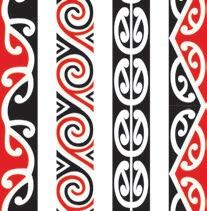
Extended practice
Lines can be transformed as well as shapes.
The starting position of the blue star can be described by its number on the horizontal (x ) axis and its number on the vertical (y ) axis. The coordinate point is (−1,2).
It has been translated by moving it 5 places to the right along on the x -axis and 2 places up on the y -axis. The translated coordinate is (4,4).
1
a What is the coordinate for the blue circle?
b Translate the blue circle 3 points to the right and 1 place up.
c What is the translated coordinate for the circle?
d Move the hexagon by translating it to (3,1).
e Describe the translation of the hexagon.
2 The blue triangle has been translated on the grid. The original position is shown as A. The transformed position has a mark (Aʹ ) next to it to show that it is the transformed image.
a Describe the transformation of the triangle.
DRAFT
The red line has been translated 5 places to the right along the x -axis.
b Draw a second translation of triangle A by moving it 3 places to the right and 2 places down. Show that it is a second transformation by marking it Aʹʹ
3 Translate rectangle B by moving it 5 places to the right and 0 places up. Transform it also by a scale factor of 2.
Unit 9: Topic 1 Position and maps
Compass points
There are four cardinal points: north, east, south and west (N, E, S, W). The points in between, north-east, south-east, south-west, north-west (NE, SE, SW, NW), are called ordinal points.
Sometimes we need to tell the direction between the cardinal and ordinal points. Between north and north-east is called north-north-east (NNE) and between north-east and east there is east-north-east (ENE). The letter that goes first will always be the cardinal point. So, if we are looking between north and north-east, the cardinal point is north. So, we add another north (N), and the point is NNE. Between north-east and east, the cardinal point is east (E), and the point is ENE.
Guided practice
1 Fill in the blanks on the compass rose above.
2 The degree of turn between north and north-east is half a right angle, or 45º.
Sailors, and others who want to be exact in their directions, use degrees to identify direction. The amount of turn is always referred to in a clockwise direction, starting from north 0º.
Write in degrees to identify each of the following directions.
DRAFT
a south-east
b south-west
c west
d north-west
Independent practice
This is a map of most of the North Island. Use it to complete the activities.
1 Auckland is in B6. In which grid square is:
a Wellington?
b Palmerston North?
c Tauranga?
d Gisborne?
Gisborne
2
Of the sixteen points on a compass rose, estimate the closest direction to the one you would be heading in if you were in a helicopter flying from:
a Rotorua to Gisborne.
b Auckland to New Plymouth.
c New Plymouth to Wellington.
d Wellington to Napier.
3 A 360° protractor would be helpful for the following. In order to give a helicopter pilot accurate directions, give an accurate compass heading in degrees for the four flights in question 2.
a Rotorua to Gisborne
b Auckland to New Plymouth
c New Plymouth to Wellington
d Wellington to Napier
4
Explain why the 16 main compass points are not used as directions by pilots.
DRAFT
5 If a pilot were using the following headings, which town would she be flying to?
a a heading of 305° from Tauranga
b a heading of 45° from Napier
c a heading of 215° from Hamilton
6 Which two towns are at a heading of 350° from Auckland?
7 Taking note of the scale on the map, which town is approximately:
a 15 0 km SW of Gisborne?
b 65 km NW of Palmerston North?
c 80 km at a heading of 87º from Hamilton?
8 Approximate the heading and distance from Auckland to Wellington.
9 As can be seen from the map, the driving distance from Auckland to Wellington is greater than the flying distance. Estimate the driving distance by looking at the roads marked on the map. Then check how close you are by carrying out some research.
10 Crowell on the South Island is said to be the furthest that anyone can get from the coast in New Zealand. On a map, find the distance, and then write in which general direction you would be heading to get to the coast.
11 In which direction and how far would you need to travel to get to the nearest coast?
Extended practice
DRAFT
The Cartesian coordinate system
It is said that the French philosopher, Rene Descartes, came up with the idea of the Cartesian coordinate system after watching a fly flit from place to place on his ceiling. Using the centre of the ceiling as the origin point, he “split” the ceiling into four quadrants (quarters) and imagined a grid drawn on the ceiling. He could then use grid references to describe any place that the fly landed.
1
2
In the Cartesian coordinate system, both positive and negative number values are used.
a Remembering to use negative numbers where appropriate, write the coordinates of the points that are plotted on this number plane.
b Reflect the triangle and enlarge it by a scale factor of 2.
c Write the coordinate points for the new triangle.
DRAFT
a On a piece of grid paper, draw a number plane by copying the axes on this page. Then, draw a shape by following these coordinate points: (0,4) → (1,3) → (2,2) → (3,1) → (4,0) → (3,−1) → (2,−2) → (1,−3) → (0,−4) → (−1,−3) → (−2,−2) → (−3,−1) → (−4,0) → (−3,1) → (−2,2) → (−1,3) → (0,4)
b Draw a second shape by enlarging the shape you drew by a scale factor of 2.
c Write the coordinate points for the second shape. Begin by plotting the line in quadrant 1.
Unit 10: Topic 1
Data sources
Data sources
Nowadays it seems that every online shopping experience or service is accompanied by a survey asking us for our opinion: How did we do?

This data can be used for various purposes. For example, businesses can use it to find out how they can improve. Advertisers might use it to promote their products. If there is a lot of data, it is stored in a data dictionary. Like a dictionary, it is organised so that it will be easy to find a particular entry later.
There are two main ways of carrying out a survey: a census survey and a sample survey. In a census survey, everyone is asked their opinion. In a sample survey, only some people are asked.
Guided practice
1 a Would a sample or a census survey be more appropriate in the following situations?
Situation
A The New Zealand Warriors want to know what the fans think of their ideas for a new team uniform.
B The parent of five children wants to know whether they would prefer a holiday at the beach or in the mountains.
C A city council wants to know what the residents feel about a new skate park.
D The manager of a soccer team wants to know on which evening the players prefer to train.
E The Principal of a school of 450 students wants to know whether the parents want the students to have more homework.
DRAFT
F A football coach in Gisborne needs to know whether the team wants to play in a weekend tournament in Wellington.
G The Principal of St Dominic’s school wonders whether the parents want the school starting and finishing times to change.
H A TV presenter wants to find out whether the public would prefer a male or a female Prime Minister.
I A car manufacturer wants to gauge public opinion on five new car body colours.
J The Highlands Council wants to know whether the residents of a village want a new skate park, and if so, where it should be built.
b Give a reason for your answer in Situation J.
Sample or census?
Independent practice
The teacher of a Year 8 class asks, “Do you think there is a correlation between a primary student’s height and age?” After a little discussion, they decide that there is.
The teacher then asks, “What about their height and their hand span?”
A student asks, “Could we find out about their favourite colour too?”
The class decides to do a survey, collecting quite a few pieces of information. They want to include every year group. These are the survey topics they decide on: Age
1 a Why do you think a census survey would not be appropriate?
b How many students from each year group do you think they should survey?
c How do you think the student(s) should be chosen?
DRAFT
d In order to test their reaction time, a ruler is held between a student’s fingers and is suddenly let go. The point where they catch hold of the ruler shows how quickly they react. Do you think this is a fair test?
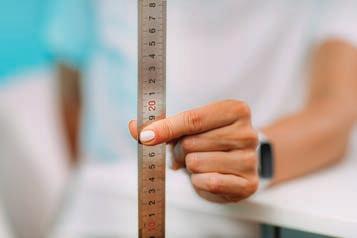
2
This information is from a five-year-old.
a Add your own information to the table.
3
b Imagine if this survey were carried out across the whole school, with four or five students from each age group taking part. What sort of data dictionary do you think would be appropriate for storing the data?
4
A spreadsheet would be a useful way to store the data. With your teacher’s permission, carry out the survey using data from five people in your class.
Enter the information into a spreadsheet. Here is a fictitious example for a group of five-year-olds:
When you have collected the data, find the average height of your survey group like this:
Auto-sum function
DRAFT
a Click on the cell below the height column. (In this example it is cell C8.)
b Click on the Formulas tab in the menu.
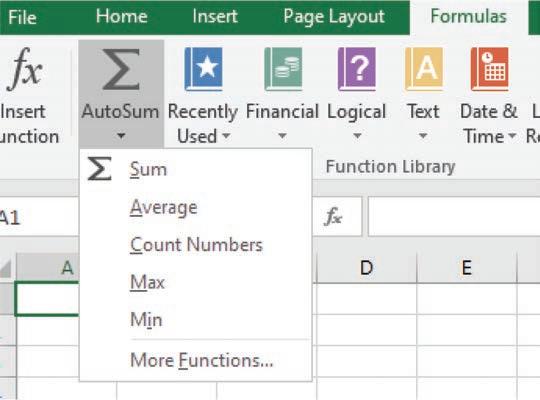
c Click on the Auto-sum function and choose Average. The cells containing relevant data above will be highlighted.
d Press Enter or Return and the average height will be displayed in cell C8.
5 When conducting a survey about preferences for a school camp, a teacher could ask a closed question (Do you want to go to Wellington? ), an open question (Where would you like to go for the school camp? ), or a multi-choice option (Which of these camp options would you prefer? ).
a What type of question would be the most appropriate if the following information were required?
Information required:
A We need to decide on a class item for the school concert.
B The Principal wonders whether parents like the school banner.
C A new school doesn’t know whether the students want blue, brown, green or grey for the school uniform.
Most appropriate type of question
b Imagine you had to do the survey in Situation A, but you did not want thirty different ideas. Write a good question that would give you the information you needed.
Extended practice
DRAFT
With your teacher’s permission, carry out a sample survey of each year-group in your school along the lines of the survey in the Independent practice section. Before you start, be sure to discuss organisational matters such as: who to survey, how the data will be collected, how to record and collate the data and ways not to disrupt other classes.
1 What sort of data dictionary will you use to store all the information you have collected?
2
In this unit, there have been examples of data that might be collected in a school and used for an interesting purpose. Graphs and tables are often used to display data in a visual way, making it easier to interpret. Think of an interesting “real-life” situation, such as people’s ages and the games they play, or the amount of time people spend on their homework and so on. Think of an effective way to collect the information and then present it in an appropriate way. This graph clearly shows I am the world’s most popular politician
DRAFT
Unit 10: Topic 2
Representing and interpreting data
Choosing the right way to display data is as important as collecting it from the right place. Imagine you have surveyed people about their favourite snack food. You could draw your own graph, but which type? You could also enter the data onto a spreadsheet and let it prepare the graph (chart) for you. However, you would still have to choose the correct way to display it.
Guided practice
1 A spreadsheet program will display the information in various ways. Which of the graphs above do you think displays the data appropriately?
DRAFT
2 This frequency table gives information on how long it takes students at Waitaki Primary School to get to school. It can be displayed on a histogram. A histogram is a quick way to display data when you need to give an accurate (but not numerically precise) view of the results. The data is correctly represented in one of these histograms, but the axes are not labelled. By studying the shape of the histograms, circle the one that is correct.
3 Noah recorded the temperature at 8 am on every day in the month of July. Would a line graph or a sector (pie) graph be a more appropriate way to display the data? Give a reason for your choice.
Independent practice
1 Noah decided to represent the data he collected for the 8 am temperatures in July on a dot plot. This gives us information such as the most common temperature for the month, but what important information can we not identify?
8 am temperatures in July
2 Hannah’s teacher gives out tokens when students do the right thing. At the end of the week, they can exchange their tokens for “free time”. This table shows the amount of free time that students can have.
No. of tokensMins. free time
5< tokens ≤155
15< tokens ≤25 10
25< tokens ≤35 15
35< tokens ≤40 20
40< tokens ≤45 25
45< tokens ≤50 30
Use the information to complete the step graph that has been started.
DRAFT
3
4
This line graph shows the monthly school canteen sales of ice blocks and soup. Use the information to complete the activities.
a When were the highest sales of: i ice blocks? ii soup?
b In which month do you think the soup machine was broken?
c In which month were 115 ice blocks sold?
d Estimate the number of ice block sales in August.
e What is the mean number of ice blocks sold per month?
f Sales of both soup and ice blocks were low in January. Give the most likely reason.
g The canteen manager can’t decide whether to continue with soup sales in summer. What would your advice be? (Give a reason.)
h The profit on each ice block is 75c. How much did the canteen make on ice blocks during the year?
Maia’s family drove from Kerikeri to Wellington. The travel graph gives information about their journey. Use the graph to complete the activities.
DRAFT
a How long did the journey take from start to finish?
b At approximately what time did they turn around and return home?
c At what time did they take the longest of their three rest stops?
d What was their average speed (to one decimal place) between noon and 18:00?
e At approximately what time did they move into slow-moving traffic?
5 Olive’s Uncle Bill came from England for a visit. At the time of his visit, he knew that £1 UK was equal to NZ$2.50. He wanted to keep track of what he was spending and made a conversion graph between New Zealand dollars (NZ$) and English pounds (GBP). Use the graph to complete the activities.
DRAFT
a Her Uncle gave Olive a £10 note. How much is it worth in NZ$?
b He changed £200 into NZ$. How much did that convert to?
c Uncle Bill bought a pen for NZ$15. He could have bought the same thing in England for £7. Was it better value to buy it in England or New Zealand?
d Using the pronumerals x for £ and y for NZ$, complete the algebraic expression that gives the rule for the conversion graph: y = x ×
Extended practice
Points can be plotted on a scatter plot to show the correlation, or connection, between one set of information and another. For example, in the previous topic you collected information about students of various ages in your school. From the data dictionary, you could show the correlation (if any) between a child’s height and age. The ages can be presented along the x -axis of a graph and the heights along the y -axis to show the correlation between the two. This scatter plot has been made from information in a data dictionary. Its purpose is to show whether there is any correlation between a young person’s age and the amount of pocket money they have.
1 Write a sentence or two about what you think the red dotted lines show.
DRAFT
2 The three plotted points that have a red arrow next to them are called outliers. What does this mean and what information do you think it shows?
3 Use the data that you collected in Unit 10, Topic 1, about students of various ages in your school.
a Decide on pairs of topics that you think show a correlation between age and another topic. (For example, age and shoe size).
b Represent the data, one pair at a time, on a scatter plot. If it does show a correlation, mark it like the graph above. Comment on any outliers that you may find.
c Repeat the process for a pair of topics that you think will show no correlation between them. (For example, eye colour and head circumference).
Unit 10: Topic 3
Critical analysis of data
It sometimes seems that everywhere we look there is someone trying to tell us what to think, trying to sell us something or trying to persuade us what to do. Do they really want us to believe them or to trust them? It depends. The supporters of English Premier League team Manchester City know that they are not going to persuade supporters of other teams; they sing for fun. However, what about advertisers or politicians? Can we believe them or trust them? We need to think critically about claims that are made.


Guided practice
1 In the cartoon about leadership above, could it be true? It might be. Who did he survey? What did he ask? Suppose he asked five of his friends, “Would I be a good leader?” Four said, “I suppose so.” One said, “No!”
a Was his claim true?
b In what way was it misleading?
DRAFT
2 A teacher asked some Year 8 students to choose the sport they would like to do. The teacher gave three choices. A sector graph of the results was made and presented to all 72 students. The results show that two thirds of Year 8 prefer cross-country.
80% of the people surveyed think that I would be a great leader!
Sports preferred by Year 8 students
Tennis Gymnastics Cross-country
CITY… CITY the best team in the land and all the world!
a Fill in the blanks to show the number of students that, according to the graph, prefer each type of sport:
Cross-country Tennis
Gymnastics
b In reality, only six students were surveyed. How many chose each type of sport:
Cross-country Tennis Gymnastics
c The teacher said to the students, “Since the graph shows that the majority of you prefer cross-country, it will be the sport for everybody next term.”
Comment on the validity of the graph.
DRAFT
3 How could the survey about sport in question 2 have been improved? Comment on: a the type of survey (census or sample).
b the survey question.
Independent practice
1 The police in a South Island town were concerned about the number of people who were speeding. In one afternoon, they caught 48 speeders. The ages of drivers caught speeding are shown below.
a Complete the graph to show the results. <2020–29
Age of Driver
b Complete the stem-and-leaf plot to represent the same data.
c Compare the two ways of showing the information in terms of:
• time spent to make the graph.
• amount of detail the graph can show.
• aesthetics (the look ) of the graph.
Key: 2l5 = 25 years old
2
A local newspaper saw the data and wanted to make a sensational headline from it. They wanted to show that people under 30 are dangerous drivers. They made a histogram from the results.
Comment on their claim: “Our research clearly shows that teenagers and people in their sixties are less careful than people in their fifties.”
20-somethings are the world’s worst drivers
Number of speeding drivers
<2020–2930–3940–4950–5960–6970–7980–89
Age of drivers
3 The next day, the newspaper made further claims. The headline said: “40% of our population drives dangerously – GUESS WHO?”
4
They based claims on the information in the graph. The newspapers statisticians worked out the percentage from the data.
a How did they arrive at a figure of 40%?
b The editor wanted numbers to back up the claims that people in their 20s are not good drivers. The newspaper’s researchers set to work. Their rounded research numbers showed that there are around 700 000 New Zealanders out of a rounded 5 million in their 20s. Approximately what percentage is that?
c The next headline read: “Over 250 000 dangerous drivers on our roads – GUESS WHO?”
How did the researchers arrive at that figure?
DRAFT
Based on their “research” the newspaper article concluded: “People in their 20s make up almost half of our law-breakers.”
How is the headline misleading the readers?
5 Comment on another conclusion from the data that: “The safest age to be a driver is when you’re over 70.”
Extended practice
1 If a shop tells a lie in its advertising, it is breaking the law. However, you may have seen signs outside a store saying things like this: Store closing! Save up to 50% off!
a Why do you think the shop doesn’t say when it will be closing down?
b How far into the future might the store be closing?
c If the store is still trading after 12 months, what would be your opinion about the advertisement?
2 Some supermarkets have been found out trying to trick their customers. They put this sign next to some of the products.
a If the original price was $9.99 and there is a 15% saving, what will the new price be?

b The trick they played was to deliberately put the price up two weeks before the price drop week. Explain why the “bargain” might not really be a bargain.
c If the original price was $7.99, comment on the way that the store has misled the customers.
DRAFT
3 Misleading advertising slogans can often be seen.
• Buy one, get one free (second item must be less than $5)
• Buy today – Go into our SUPER-DRAW (to win what?)
• Less sugar (than what?!)
• Fat Free (mineral water)
Carry out some research to find examples of false or misleading advertising.
Unit
11: Topic 1
Describing probabilities
You may have enjoyed a game such as Snakes and Ladders when you were young. In games like that, although there is a possibility that you will win, there is a probability that you will lose, especially if there are several players. Your chance of winning depends on the way that the dice lands. If you’re playing a game of tennis, on the other hand, then your chance of winning is based more on your skill level than luck.

When we are describing the probability of something happening, we can use words such as unlikely, highly likely and so on. At other times it is important to be more precise. There are several ways, for example, to show numerical probability for a coin to land on heads, such as 50–50.
Guided practice
1 TV stations often predict the weather in terms of probabilities. Assign a percentage probability to each of the following predictions.
Weather prediction
A It might rain tomorrow and it might not.
B There’s a slight possibility of a shower in the morning.
C There’s a strong chance of a storm in the evening.
D There’s no sign of rain for the next week.
E There’s a good chance of strong winds later.
DRAFT
% Chance
2 The sample space of the way a coin can land is heads and tails, since there are just two possible outcomes. We can list the sample space for events. List the sample space for the following. The first one has been completed.
What are the possible outcomes for:Sample space a the coin?
Sample space = {heads, tails} b the die? Sample space =
d choosing a particular bouncy ball?
3
What is the probability for each outcome of the situations in question 2? The first one has been completed. P() shows the probability of an event. For example, P(heads) means the probability of getting heads. When rolling a die, P(1) means the probability of getting 1.
Situation Probability for each element
a Coin P (heads) = 1 2 , P (tails) = 1 2
b Die
c Spinner
d Bouncy ball
Independent practice
1 The suits in a pack of cards are Hearts, Diamonds, Clubs and Spades
a List the sample space for the suits of a pack of cards.
b What is the probability for each element?
c Looking at each of the probabilities as a fraction, what is the sum of the four probabilities?
DRAFT
2 A computer randomly chooses letters from the word M I N I M U M.
a List the sample space for the letters.
b What is the probability of the different letters being selected?
c Explain why the sum of the probabilities should be one.
d After 21 computer picks, how many of each letter would you expect there to be?
3
Try a chance experiment with the word M I N I M U M.
a Write one of each of the seven letters on the front of seven identical small pieces of paper or card (ensure that the writing cannot be seen from the reverse through to the front.)
b Shuffle the papers around face down.
c Have someone randomly choose a letter and make a tally mark on a tally sheet of the letter that has been picked.
d Shuffle the papers around again.
e Repeat steps c and d.
f Decide how many times the experiment should be repeated for the results to be accurate.
g Discuss the results with a partner.
4 The likelihood of something taking place can be shown by assigning it a numerical value between zero and one. Write an informal description for the probability of the following events.
What are the chances I will … Informal
a visit a friend?
b play cricket tonight?
e try my best in an assessment?
DRAFT
5 Using the information in question 2, assign a numerical value between 0 and 1 for the likelihood of each of the letters being chosen. Round decimals to an appropriate number of places. Ensure that the sum of the possibilities is 1.
6 If you were playing a game and needed a “six” on a die, the probability of getting the number you wanted would be one out of six. The chances of the number not being six would be five out of six.
We call these complementary events. We could write the complementary events for getting a six on a die like this:
P(six) = 1 6 , P(not six) = 5 6
What are the complementary events for this spinner stopping on 3?
7 List the sample space (a set of all possible outcomes of an event) for the following events.
a whether a baby is born a boy or a girl Sample space = { }

b 23 14 the way the pointer will stop
c the result of a cricket match

d the day of the week of the next shower of rain
8 If the spinner in question 7 looked like this: a how would it change the sample space?
b The probability for each element would change. Explain why and list the new probabilities.
DRAFT
Extended practice
Have you ever played a board game in which you needed to get a six and it never seemed to come up, no matter how many rolls of the dice you made? In those times it seems hard to believe that the six has the same chance as the other numbers. You probably know, however, that in board games where two dice are rolled together, some numbers do have less chance than others.
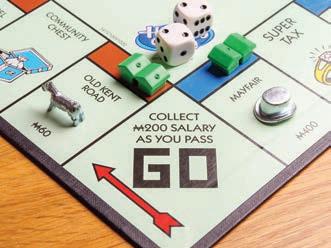
1 List the sample space for the total number that can be obtained when two dice are rolled. Write down all the different ways two dice can land, for example, 1 and 1, 1 and 2, 1 and 3... etc. You should be able to find 36 different combinations. Afterwards, list the probabilities for each total number and finally comment on the results. Which total number has the best chance of being rolled?
2 A car is about to go around a bend and will approach some traffic lights.
a List the sample space for the colours the lights could show.
b Explain why the probability of the colour being yellow is not 1 3
c Estimate the probability of the light being yellow.
3 Read the words and phrases that can be used to describe probability. Copy the corresponding letter onto the number line in the appropriate place. Two have been suggested for you.
A Impossible G A strong possibility
B Probable H Highly unlikely
C Certain I Highly likely
D Not a very good chance J Even chance
E Hardly any chance K Improbable
F A fairly good chance
4
Express the probability of the following events occurring as a fraction, a decimal (round to two decimal places) and a percentage (to one decimal place).
Probability of:
a rolling a 2 on a die.
b getting a 4 on this spinner.
c getting a 2 on this spinner.
1
d a coin landing on its edge.
5 Challenge: Does anyone in your class share the same birthday as you? Did you know that in a class of 30, there is an almost 70% probability that two people will share the same birthday? In a group of 70, the percentage increases to 99.9%!
Try to find an easy-to-understand formula online for working out the probability of two people sharing the same birthday.
DRAFT
Glossary
acute angle An angle that is smaller than a right angle or 90 degrees.
anticlockwise Moving in the opposite direction to the hands of a clock.
arc A part of a circle.
right angle
addition The joining or adding of two numbers together to find the total. Also known as adding, plus and sum. See also vertical addition += 3 and 2 is 5
algorithm A process or formula used to solve a problem in maths.
Examples: horizontal vertical algorithms algorithms TO 24 + 13 37
24 + 13 = 37
alternate angles A pair of angles not next to each other on opposite sides of a transversal between two lines. Alternate angles are equal in size.
G F H d c a b
transversal Angles a and c are alternate angles. Angles b and d are alternate angles.
analog time Time shown on a clock or watch face with numbers and hands to indicate the hours and minutes.
DRAFT
area The size of an object’s surface.
Example: It takes 12 tiles to cover this poster.

area model A visual way of solving multiplication problems by constructing a rectangle with the same dimensions as the numbers you are multiplying and breaking the problem down by place value.
6 × 10 = 60 6 × 8 = 48 so 6 × 18 = 108
arms The lines that form an angle.
array An arrangement of items into even columns and rows to make them easier to count.
ascending order Arranging numbers from smallest to largest.
angle The space between two lines or surfaces at the point where they meet, usually measured in degrees.
associative law How the numbers are grouped does not change answers in additions and multiplications.
Example: (2 × 8) × 5 = (2 × 5) × 8
75-degree angle
balance scale Equipment that balances items of equal mass; used to compare the mass of different items. Also called pan balance or equal arm balance.
base The bottom edge of a 2D shape or the bottom face of a 3D shape.
base
capacity The amount that a container can hold.
Example: The jug has a capacity of 4 cups.


Cartesian plane A grid system with numbered horizontal and vertical axes that allow for exact locations to be described and found.
categorical variables The different groups that objects or data can be sorted into based on common features.
Example: Within the category of ice cream flavours, variables include:

DRAFT


census A survey of an entire population. centimetre or cm A unit for measuring the length of smaller items.

Example: Length is 80 cm.
chord A straight line joining two points on the circumference of a circle. chord
circumference The distance around the outside of a circle.
clockwise Moving in the same direction as the hands of a clock.
vanilla chocolate strawberry
column graph A way of representing data using columns or bars to show the values of each variable.
composite number A number that has more than two factors, that is, a number that is not a prime number.
composite number A number that results from multiplying two numbers other than itself and one.
cone A 3D shape with a circular base that tapers to a point.
common denominator Denominators that are the same. To find a common denominator, you need to identify a multiple that two or more denominators share.
The order in which numbers are added or multiplied does not change the answer.
Example: 2 + 9 + 8 = 2 + 8 + 9
compensation method A way of solving a problem that involves rounding a number to make it easier to work with, and then paying back or “compensating” the same amount.
DRAFT
Example: 24 + 99 = 24 + 100 – 1 = 123
complementary angles Two acute angles that add to make a right angle (90°).
coordinates A combination of numbers or numbers and letters that show location on a grid map.
corner The point where two edges of a shape meet. Also known as a vertex
corner
corresponding angles A pair of angles on the same side of a transversal and in corresponding positions on the two lines. Corresponding angles are equal in size a=e, b=f, c=g, d=h ab c e g h f d transversal
cross-section The surface or shape that results from making a straight cut through a 3D shape. 3 2 1 ABC

cube A rectangular prism where all six faces are squares of equal size.
cubic centimetre or cm3 A unit for measuring the volume of smaller objects.
Example: This cube is exactly 1 cm long, 1 cm wide and 1 cm deep.
cylinder A 3D shape with two parallel circular bases and one curved surface.
data Information gathered through methods such as questioning, surveys or observation.
data Information gathered together, such as a set of numbers or facts, also known as statistics.
decimal A point used to separate the fraction part from the whole number. Example: 75 out of 100 in decimal form is 0.75.
decimal fraction A way of writing a number that separates any whole numbers from fractional parts expressed as tenths, hundredths, thousandths and so on. 1 9 10
denominator The bottom number in a fraction, which shows how many pieces the whole or group has been divided into.
degrees Celsius A unit used to measure the temperature against the Celsius scale where 0°C is the freezing point and 100°C is the boiling point. 3 4
descending order Arranging numbers from largest to smallest.
DRAFT
Example: 1.9 is the same as 1 whole and 9 parts out of 10 or 1 9 10
diameter A straight line from one side of a circle to the other, passing through the centre point.
digital time Time shown on a clock or watch face with numbers only to indicate the hours and minutes.

distributive law A multiplication can be “distributed” across a bracket. Large numbers can be broken down into a group of smaller numbers, which can then be multiplied separately.
2 (4 + 3) = 2 × 4 + 2 × 3 = 14
dividend A number that is being divided by another number (divisor).
division/dividing The process of sharing a number or group into equal parts, with or without remainders.
divisor A number that divides into another number (dividend).
dot plot A way of representing pieces of data using dots along a line labelled with variables.
Favourite pets cat dog rabbit
double/doubles Adding two identical numbers or multiplying a number by 2.
Example: 2 + 2 = 4 4 × 2 = 8
duration How long something lasts.
Example: Most movies have a duration of about 2 hours.
edge The side of a shape or the line where two faces of a shape meet.
equal Having the same number or value.
Example: Equal size Equal numbers
equation A written mathematical problem where both sides are equal.
Example: 4 + 5 = 6 + 3
equilateral triangle A triangle with three sides and angles the same size.
equivalent fractions Different fractions that represent the same size in relation to a whole or group. 1 2 2 4 3 6 4 8
exponent A shortened form of writing large numbers.
Example: 100 000 = 10 × 10 × 10 × 10 × 10 = 10 5
expression Numbers and symbols joined by operations.
Example: 2 × 3 and 4y – 5
face The flat surface of a 3D shape.
DRAFT
face
factor A whole number that will divide evenly into another number.
Example: The factors of 10 are 1 and 10 2 and 5.
financial plan A plan that helps you to organise or manage your money.
flip To turn a shape over horizontally or vertically. Also known as reflect
estimate A thinking guess.
estimation An approximate value of a calculation, usually involving rounding.
even number A number that can be divided equally into 2.
Example: 4 and 8 are even numbers.
formula A mathematical rule used to work out an unknown value by using known values.
Example: length × width = area
fraction An equal part of a whole or group.
Example: One out of two parts or 1 2 is shaded.
frequency The number of times a particular outcome occurs in a chance experiment.
function machine A machine that can be programmed to do the same thing to any number that is fed into it.
gram or g A unit for measuring the mass of smaller items. There are 1000 g in 1 kg.
graph A visual way to represent data or information.
integer A whole number. Integers can be positive or negative.
inverse operations Operations that are the opposite or reverse of each other. Addition and subtraction are inverse operations.
Example: 6 + 7 = 13 can be reversed with 13 – 7 = 6
invoice A written list of goods and services provided, including their cost and any GST.
GST or Goods and Services Tax A tax, such as 15%, that applies to most goods and services bought in New Zealand.
Example: Amount you pay:
hexagon with six sides.
highest common factor (HCF) Greatest factor that is common to two or more given numbers.
horizontal going straight across.
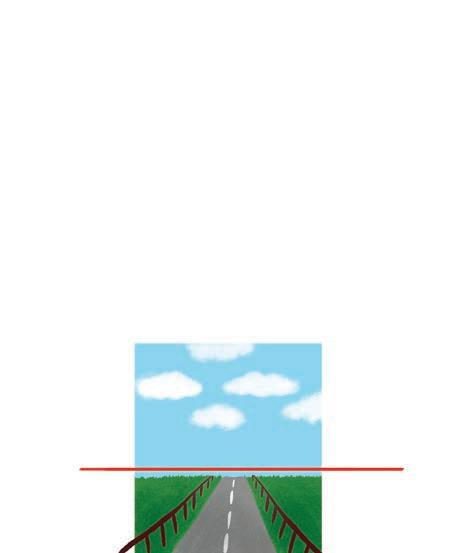
horizontal line
improper fraction A fraction where the numerator is greater than the denominator, such as 3 2
irregular shape A shape in which the sides are not all the same length and the angles are not all the same size.
isosceles triangle A triangle with two sides and two angles of the same size.
jump method A way to solve number problems that uses place value to “jump” along a number line by hundreds, tens and ones.
Example: 16 + 22 = 38
Priya’s Pet Store
kilogram or kg A unit for measuring the mass of larger items.

kilometre or km A unit for measuring long distances or lengths.
litre or L A unit for measuring the capacity of larger containers.
Example: The capacity of this bucket is 8 litres.
lowest common multiple (LCM)
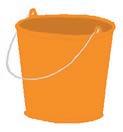
Lowest (first) multiple that is common in the multiples list of two or more numbers, excluding zero (0).
mass How heavy an object is.
kite A four-sided shape where two pairs of adjacent sides are the same length.
legend A key that tells you what the symbols on a map mean.




length The longest dimension of a shape or object.

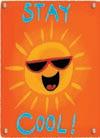
line graph A type of graph that joins plotted data with a line.
linear equation An equation that contains two variables, both of which have a power of 1.
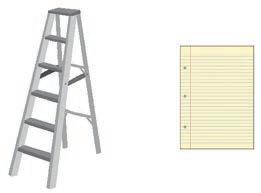
Example: 4.5 kilograms 4.5 grams
method A way to solve a problem. In maths, you can often use more than one method to get the right answer.
Example: 32 + 27 = 59 Jump method
Split method 30
metre or m A unit for measuring the length or height of larger objects.

milligram or mg A unit for measuring the mass of lighter items or to use when accuracy of measurements is important.
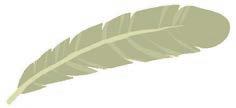
mg
millilitre or mL A unit for measuring the capacity of smaller containers.
1000 mL is 1 litre

millimetre or mm A unit for measuring the length of very small items or to use when accuracy of measurements is important.
number line A line on which numbers can be placed to show their order in our number system or to help with calculations.
There are 10 mm in 1 cm.
mixed number A number that contains both a whole number and a fraction.
Example: 2 3 4
multiple The result of multiplying a particular whole number by another whole number.
Example: 10, 15, 20 and 100 are all multiples of 5.
near doubles A way to add two nearly identical numbers by using known doubles facts.
number sentence A way to record calculations using numbers and mathematical symbols.
Example: 23 + 7 = 30
DRAFT
Example: 4 + 5 = 4 + 4 + 1 = 9
net A flat shape that when folded up makes a 3D shape.
numeral A figure or symbol used to represent a number.
Examples: 1 – one 2 – two 3 – three
0102030405060708090100 3 4
numerator The top number in a fraction, which shows how many pieces you are dealing with.
obtuse angle An angle that is larger than a right angle or 90 degrees, but smaller than 180 degrees.
right angle
octagon A 2D shape with eight sides.
odd number A number that cannot be divided equally into 2.
Example: 5 and 9 are odd numbers.
operation A mathematical process. The four basic operations are addition, subtraction, multiplication and division.
order of operations The rules and sequence for solving problems in a specific order.
Example: GEMA = Grouping, E xponents, M ultiplication/division, Addition/subtraction
origin The point on a Cartesian plane where the x -axis and y -axis intersect.
outcome The result of a chance experiment.
Example: The possible outcomes if you roll a dice are 1, 2, 3, 4, 5 or 6.
parallel lines Straight lines that are the same distance apart and so will never cross.
parallelparallelnot parallel
parallelogram A four-sided shape where each pair of opposite sides is parallel.
per cent or % A fraction out of 100.
Example: 62 100 or 62 out of 100 is also 62%.
perimeter The distance around the outside of a shape or area.
DRAFT
pattern A repeating design or sequence of numbers.
Example:
Shape pattern
Number pattern 2, 4, 6, 8, 10, 12
pentagon A 2D shape with five sides.
Example: Perimeter = 7 m + 5 m + 10 m + 3 m + 6 m = 31 m
pi The ratio of the circumference of a circle to its diameter; the symbol for pi is π
picture graph A way of representing data using pictures so that it is easy to understand.
Example: Favourite juices in our class






place value The value of a digit depending on its place in a number.
polygon A closed 2D shape with three or more straight sides. polygons not polygons 3
polyhedron (plural: polyhedra) A 3D shape with flat faces. Not polyhedra polyhedra
polyhedra not polyhedra
power A number written in exponent form.
power of The number of times a particular number is multiplied by itself.
Example: 4 3 is 4 to the power of 3 or 4 × 4 × 4.
prime factor Factor of a composite number that is a prime number.
prime number A number that has just two factors – 1 and itself. The first four prime numbers are 2, 3, 5 and 7.
prism A 3D shape with parallel bases of the same shape and rectangular side faces. triangular prism rectangular prism hexagonal prism triangular prism rectangular prism hexagonal prism
protractor An instrument used to measure the size of angles in degrees.
pyramid A 3D shape with a 2D shape as a base and triangular faces meeting at a point.
DRAFT
square pyramid hexagonal pyramid square pyramid hexagonal pyramid
quadrant A quarter of a circle or one of the four quarters on a Cartesian plane.
quadrant
quadrant
quadrilateral Any 2D shape with four sides.
probability The chance or likelihood of a particular event or outcome occurring.
Example: There is a 1 in 8 chance this spinner will land on red.
pronumeral Letter or symbol that takes the place of a number.
quotient Results of a division.
radius The distance from the centre of a circle to its circumference or edge.
ratio Comparison of two or more quantities of the same kind.
reflect To turn a shape over horizontally or vertically. Also known as flipping vertical reflection
horizontal reflection
reflex angle An angle that is between 180 and 360 degrees in size.
regular shape A shape in which all the sides are the same length and all the angles are the same size.
remainder An amount left over after dividing one number by another.
Example: 11 ÷ 5 = 2 r1
rhombus A 2D shape with four sides, all of the same length and opposite sides parallel.
round/rounding To change a number to another number that is close to it to make it easier to work with.
229 can be rounded up to the nearest 10 230 OR
rounded down to the nearest
right angle An angle of exactly 90 degrees.
right-angled triangle A triangle where one angle is exactly 90 degrees.
DRAFT
rotate Turn around a point.
rotational symmetry A shape has rotational symmetry if it fits into its own outline at least once while being turned around a fixed centre point.
rule A description of the relationship between each term and the next term in a sequence; a description of the relationship between two or more variables.
sample A selection of data that is part of the population.
scale A way to represent large areas on maps by using ratios of smaller to larger measurements.
Example: 1 cm = 5 m
scalene triangle A triangle where no sides are the same length and no angles are equal.
sector A section of a circle bounded by two radius lines and an arc.
segment Part of a line or a shape.
segment of a line segment of a circle
semi-circle Half a circle, bounded by an arc and a diameter line.
split method A way to solve number problems that involves splitting numbers up using place value to make them easier to work with.
Example: 21 + 14 = 20 + 10 + 1 + 4 = 35
skip counting Counting forwards or backwards by the same number each time.
Examples:
Skip counting by fives: 5, 10, 15, 20, 25, 30
Skip counting by twos: 1, 3, 5, 7, 9, 11, 13
slide To move a shape to a new position without flipping or turning it. Also known as translate
DRAFT
speed How fast something is travelling, measured as distance per unit of time.
sphere A 3D shape that is perfectly round.
square centimetre or cm2
A unit for measuring the area of smaller objects. It is exactly 1 cm long and 1 cm wide.
square metre or m2 A unit for measuring the area of larger spaces. It is exactly 1 m long and 1 m wide.
square number The result of a number being multiplied by itself. The product can be represented as a square array.
Example: 3 × 3 or 32 = 9
square root The number that when multiplied by itself produces a result that is equal to the original number.
straight angle An angle that is exactly 180 degrees in size.
180º
subtraction The taking away of one number from another number. Also known as subtracting, take away, difference between and minus. See also vertical subtraction
Example: 5 take away 2 is 3
supplementary angle Angles that add to make a straight angle (180°).
thermometer An instrument for measuring temperature.
survey A way of collecting data or information by asking questions.
Strongly agree Agree Disagree Strongly disagree
symmetry A shape or pattern has symmetry when one side is a mirror image of the other.
table A way to organise information that uses columns and rows.
DRAFT
tally marks A way of keeping count that uses single lines with every fifth line crossed to make a group.
term A number in a series or pattern.
Example: The sixth term in this pattern is 18. 369
tessellation A pattern formed by shapes that fit together without any gaps.
three-dimensional or 3D A shape that has three dimensions – length, width and depth. 3D shapes are not flat.
timeline A visual representation of a period of time with significant events marked in. 29
translate To move a shape to a new position without flipping or turning it. Also known as slide
trapezium A 2D shape with four sides and only one set of parallel lines.
triangular number A number that can be organised into a triangular shape. The first four are:
two-dimensional or 2D A flat shape that has two dimensions –length and width. turn Rotate around a point.
unequal Not having the same size or value.
Example: Unequal Unequal size numbers
Unequal sizeUnequal numbers value How much something is worth.
Example: This coin is worth. This coin is worth 10c $1.
vertical At a right angle to the horizon or straight up and down.

DRAFT
variable A letter or symbol that represents an unknown value in a problem or equation.
vertex (plural: vertices) The point where two edges of a shape meet. Also known as a corner
vertical addition A way of recording addition so that the place value columns are lined up vertically to make calculation easier.
vertical subtraction A way of recording subtraction so that the place value columns are lined up vertically to make calculation easier.
volume How much space a shape takes up.
Example: This shape has a volume of 4 cubes.
whole All of an item or group.
Example: A whole shape A whole group
width The shortest dimension of a shape or object. Also known as breadth
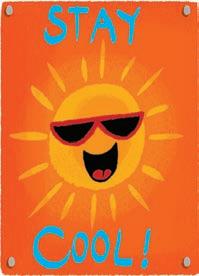
x-axis The horizontal reference line showing coordinates or values on a graph or map.
y -axis The vertical reference line showing coordinates or values on a graph or map.
DRAFT
Answers
Unit 1: Topic 1
Guided practice
1 fifty-three thousand, six hundred and fiftyfour
2 2000 + 20 + 4
3 102 549
4 a 2.45, 100, 2024, 53 654
b 345, 34.5, 3.45
c 54, 53, 52
5 a > b < c < d <
e It’s not possible to use either symbol because the numbers are the same size.
Independent practice
1 a twelve thousand, one hundred and forty-five
b twelve point one, four, five
c twelve thousand, one hundred and forty-five
d twelve point one, four, five
2 a 103 b 105 c 104
d 45 e 97
3 a fifty thousand b fifty million
c seven hundred thousand d one billion
Extended practice
1 a 2000 b 19 000 c 1000
d 33 000
2 a 32 800 b 32 830
3 Answers may vary. For example, thousand because that would take the amount up to $23 000.
4 a 39 000 b 41 000 c 26 000
d 451 000
5 a 200 000 b 400 000 c 300 000
d 1 100 000
6 a 1.8 b 0.5 c 37.1
d 8.0
7 a Answers may vary. For example, it is too difficult to measure it exactly.
b Answers may vary. For example, the orbit of the Moon is not a constant circle.
Independent practice
1 a 2 and 5, 10 = 2 × 5
b 3, 9 = 3 × 3
c 3 and 5, 15 = 3 × 5
d 3 and 7, 21 = 3 × 7
e 5 and 7, 35 = 5 × 7
f 3 and 13, 39 = 3 × 13
2 a 2 and 5 (20 = 2 × 2 × 5)
b 2 and 3 (18 = 2 × 3 × 3)
c 2 and 7 (28 = 2 × 2 × 7)
d 2 and 3 (36 = 2 × 2 × 3 × 3)
3 a 2 and 17 (68 = 22 × 17)
b 3 (27 = 33)
c 2 and 5 (40 = 23 × 5)
d 2 and 7 (56 = 23 × 7)
4
a 5M 5000000 b 1.25M
c 1 2 of 5 2 5
d 350K 350000
e 5 × 10 5 500000
f 1.75B 1750000000
g 57B
h 1 2 of 1.5
5 a five million
b fifty thousand
c five tenths
d fifty thousand
e five hundred thousand
f fifty million
g fifty billion
h five hundredths
6 a 0.025, 0.25, 2.5, 25, 255
DRAFT
Extended practice
1 a 1, 2, 4, 8 and 1, 2, 3, 4, 6, 8, 12, 24
b Student circles 1, 2, 4, 8 for each number.
c Student puts a star over number 8.
d 8
2 a HCF = 8
b HCF = 7
c HCF = 2
d HCF = 6
3 a 3 4 b 2 3
c 1 5 d 4 7
4 35
Factors of 210: 1, 2, 3, 5, 6, 7, 10, 14, 15, 21, 30, 35, 42, 70, 105, 210
Factors of 315: 1, 3, 5, 7, 9, 15, 21, 35, 45, 63, 105, 315
Unit 1: Topic 2
Guided practice
1
b 0.35, 3.53, 3.55, 3500, 3.5M
c 70.005, 70.05, 75 000, 750K, 750M
d 0.47, 4.07, 4.7, 4.704, 7.4
7 a 355, 35, 3.5, 0.35, 0.035
b 8.5M, 8500, 8.58, 8.55, 0.85
c 250B, 20.5M, 250K, 25 000, 2005
d 30.5, 30.05, 3.05, 0.35, 0.035
8 a > b < c >
d > e < f >
Unit 1: Topic 3
Guided practice
1
2
d
e
3 Starting number What times itself makes the number? The square root of the starting number is: Write the number fact.
4
DRAFT
1 a 128 b 3125
c
e 2401 f 7776
g
2 a 85 b
3 a 56 b
4
Unit 2: Topic 1
Guided practice
1
a 312 – 189300 – 200 = 100
b 24 895 + 19 77825 000 + 20 000 = 45 00044 673 Yes
c 208 × 20 200 × 20 = 4000 4160 Yes
d $96.55 + $128.90 $100 + $130 = $230 $953.90 No
e 1 4 of 836 800 ÷ 4 = 200
2 a 3.92 b 32.76 c 43.81 d 70.44 e
j 99.99
Independent practice
1 Student circles d and e.
2 Student circles b, d and e.
3 25 000 km2
4 25 445 km2
5 Answers may vary. Check that the estimate matches the rounding. For example, I rounded to the nearest ten thousand. 270 000 + 240 000 = 510 000 km2
6 512 665 km2
7 11 000 km
8 Estimate: 1000 km, Actual: 1056.9 km
9 411 000 km
10 Estimate: 23 000 km, Actual: 22 950 km
Extended practice
1 a one third b 32.5%. Methods may vary. For example (1693 ÷ 5214) × 100 = 32.4702 = 32.5% or (1 693 000 ÷ 5 214 000) × 100 = 32.4702 = 32.5%
Unit 2: Topic 2
Guided practice
1 a 184 b 900
c 570 d 3123
2 a 245 b 1230
c 600 d 8991
Independent practice
1 Students could share their solutions with the group.
a 160 b 300
c 180 d 210
2 Students could share their solutions with the group.
a 85 b 168
c 148 d 280
3 a 500 b 5000
c 5 tenths or 0.5 d 5000
Unit 2: Topic 3
Guided practice
1 a 2 b 2
c 3 d 2
2 a 8 b 1
c 0 d 7
3 a 5 b 9
c 8 d 9
4 a 1 b 5
c 2 d 5
5 dividend
Independent practice
1 C, A, B
DRAFT
c Answers may vary. Students could be asked to justify their response to others in the group.
2 104M (If 5% is 5.214M, then 1% is 1.0428M × 100 = approximately 104M)
3 210 000
4 a Wellington b 319.6%
5 Answers will vary. Students could be asked to justify their response to others in the group. For example, it was just over four times bigger in 2024 than it was in 1955. Or the population increased by around 1.3M between 1955 and 2024.
6 Answers will vary. Students could be asked to justify their response to others in the group. For example, the population changes from day to day.
7 approximately 1600 km by 448 km
4 a 360 b 37 × 2 0 + 37 × 6 c 750 d 53 × 20 + 53 × 6 5 a 23 × 10 + 23 × 9
b 37 × 20 + 37 × 6
c 82 × 20 + 82 × 5
d 53 × 20 + 53 × 6
Extended practice
1 a 675 b 918 c 741
d 1786 e 1950 f 6132
2 No, because she has only saved 15 × 13 = $195.
3 a–c Answers will vary.
4 a 527 times b 1037 times
c 6222 times
5 a 426 L b Answers will vary.
2 a 9176 2 7 b 9816 1 2
c 7247 1 3 d 6593 1 3
3 a 7134.25 b 12 392.33
c 9423.63 d 8334.43
e 16 392.67 f 55 073.8
4 a 21 b 19
c 35 r1 d 28 r2
e 24 r3 f 37
g 235 h 326 r2 i 658 r3
Extended practice
1 a 12 b 26
c 28
2 True (68 × 2 = 136)
3 False (17 × 4 = 68 kg)
4 36 (145 ÷ 4 = 36.25)
5 5.14
6 7.83
7 a 9 (4000 ÷ 440 = 9.09)
b 114 (68 000 ÷ 595 = 114.3)
c 132 (145 000 ÷ 1100 = 131.8)
Unit 2: Topic 4
Guided practice
1 Answers will vary.
Independent practice
1 a 13 b 10
c 9 d 4
e 53 f 32
g 4 h 36
i 40 j 49
k 7 l 16
m 51 n 3
o 48 p 24
2 a 24 ÷ 4 + 2 ≠ 24 ÷ (4 + 2)
b 2 × 42 = 42 × 2
c 3 × 6 − 3 ≠ 15 + 2 × 5
d 5 × (4 + 1) = 52
e √9 × 32 ≠ 33
f 18 ÷ 2 + 42 ≠ 18 ÷ (2 + 42) g 7 + 3 × 2 ≠ (7 + 3) × 2 h (√25 + 3) × 2
3 a 15 ÷ ( 1 2 of 10) + 2 × 5
15 ÷ 3 + 2 × 5
5 + 2 × 5
5 + 10
15
b 3 × (2 + 4) + 15 ÷ 3
3 × 6 + 15 ÷ 3
18 + 15 ÷ 3
18 + 5
23
c 18 ÷ 9 + ( 1 2 of 10) − 2 × 3
18 ÷ 9 + 5 – 2 × 3
2 + 5 – 2 × 3
2 + 5 – 6
1
4 a 70 ÷ [10 + (3 + 2) × 5]
= 70 ÷ (10 + 5 × 5)
= 70 ÷ (10 + 25)
= 70 ÷ 35 = 2
b 5 × [(10 ÷ 2) + 22]
= 5 × (5 + 22)
= 5 × (5 + 4)
= 5 × 9 = 45
c 6 + [12 ÷ (8 – 22)]2 – 1
= 6 + (12 ÷ [8 – 4])2 – 1
= 6 + (12 ÷ 4)2 – 1
= 6 + 32 – 1
= 6 + 9 – 1 = 15 – 1
= 14
Extended practice
1 40 + (1 4 of 40 – 2) – 3 × 3
= 40 + (10 – 2) – 3 × 3
= 40 + 8 – 3 × 3
= 40 + 8 – 9
= 48 – 9 = 39
She has $39 left.
2 a $82
3 × 12 + 40 + 4 × 1.5
= 36 + 40 + 4 × 1.5
= 36 + 40 + 6 = 82
b He saved $3.40.
= 4000 − (3885 − 388.5)
= 4000 − 3496.5
= 503.50
4 = [(6 x 90) – (6 x 1 4 of 90)] ÷ 3 = [540 – (6 x 1 4 of 90)] ÷ 3 = [540 – (6 x 22.5)] ÷ 3 = [540 – 135] ÷ 3 = 405 ÷ 3 = $135
Unit 2: Topic 5
Guided practice
8
Extended practice
1
DRAFT
3 × 12 + (40 – 1 10 of 40) + (4 × 1.5) + (4 × of 1.5)
= 36 + (40 – 4) + (4 × 1.5) + (4 × 1 10 of 1.5)
= 36 + 36 + (4 × 1.5) + (4 × 1 10 of 1.5)
= 36 + 36 + 6 + (4 × 1 10 of 1.5)
= 36 + 36 + 6 + (4 × 0.15)
= 36 + 36 + 6 + 0.6 = 78.6
3 $503.50
4000 − [3 × 1295 − ( 1 10 of 1295 × 3)]
= 4000 − (3885 − 388.5)
= 4000 − 3496.5
= 503.50
Note: students may have learned that ‘of’ is worked through before ‘multiply’, giving the following steps:
4000 − [3 × 1295 − ( 1 10 of 1295 × 3)]
= 4000 − (3 × 1295 − 129.5 × 3)
practice
3 Answers will vary.
Unit 3: Topic 1
Guided practice
3 a 21%, 0.25, 2 1 10
c 6 20 = 3 10, 0.3, 30%
d 18 20 = 9 10, 0.9, 90%
e 10 100 = 1 10, 0.1, 10%
Unit 3: Topic 2
Unit 3: Topic 3
Guided
6 a Answers may vary. Students could share and be asked to justify their responses.
b Answers may vary
Unit 3: Topic 4
Guided practice
Extended practice
1
2
3
d
4
Unit 3: Topic 5
Guided practice
1 a 8:4 b 3:6 c 9:3
2 a 2:1 b 1:2 c 3:1 d 1:4 e 2:1 f 5:1 g 1:3
Independent practice
1 a 9 b 15 c 24
2 a 6 b 10 c 20
3 a 1:3:5 b 1:3:2 c 2:3:1
4 Students should recognise that the ratio of 3:1:2 means that there should be 3 blue squares for each yellow square and every 2 green squares. The simplest solution is to follow this pattern. However, students may choose to colour any 12 squares blue, any 4 squares yellow and any 8 squares green.
5 a Look for students who use appropriate vocabulary, such as, “For every yellow bead there are 3 red beads and 4 blue beads.” By this stage, students should be beyond simply counting the number of beads in each colour. b 1:3:4
6 a & b Students might see that they can substitute the yellow beads in question 5 for green and continue the pattern. In this case, they could describe the pattern in the following way: “For every green bead there are 3 red beads and 4 blue beads.” The ratio would be 1:3:4. Students requiring a greater challenge can be encouraged to use a different ratio, such as 1:2:5, with 3 green beads, 6 red beads and 15 blue beads.
7
8 a Students who have had experience of finding the highest common factor of a set of numbers will use this skill to work out the ratio of the animals as 3:8:1:2. Others will probably use a process of trial and error.
b Having worked out the ratio, students should see that Zoe has 4 ducks, 6 sheep, 16 goats and 2 horses.
Extended practice
1 a 3 4 b 75% c 0.75
2 Students may need to revisit the procedure for finding a fraction of a quantity where the numerator is larger than 1.
a 2 oranges, 8 apples
b 5 oranges, 20 apples
c 10 oranges, 40 apples
d 7 oranges, 28 apples
3 a There are five “portions” and each portion is one-fifth. One-fifth of 45 pieces of fruit is 9 pieces of fruit (45 ÷ 5 = 9). So, 3 x 9 = 27 oranges and 2 x 9 =18 apples.
b There are seven “portions” and each portion is one-seventh. One-seventh of 56 pieces of fruit is 8 pieces of fruit (56 ÷ 7 = 8). So, 3 x 8 = 24 oranges and 4 x 8 = 32 apples.
Unit 4: Topic 1
Guided practice
1
b Answers will vary. For example, he owed $5 to Maia.
2 Students could share and compare their ideas for the budget, perhaps being asked to justify their answers.
3 “Being in debt” means you owe a sum of money.
Independent practice
1 a Income: $1164.95, Expenditure: $1064.95
b Yes, because she earns more than she spends.
2 a $150 b $900
4
8 $600.00
Extended practice
1 a It went up by $18.90. b $38.90
c Mar 15 paymentthank you 10.00 − 208.90 Mar 31 interest (10%)
− 229.79
Apr 15 payment - thank you 10.00 − 219.79 Apr 30 interest (10%)
− 241.77
d This would be a good discussion point for the group. (The actual figures are fictitious, but it should prove to be a springboard for discussion about the way that it is possible for credit card spending to lead to bad debt.)
2 This would be another useful topic for discussion.
Unit 4: Topic 2
Guided practice
1 This would be a good topic for a group discussion.
2 a $5 b $8 c $7 d $6 e $4 f $3 g $2
3 Answers will vary.
4 a $0.45 b $0.75 c $0.40 d $1.25
Independent practice
1 a 1 10 b 1 3 c 1 5 d 2 3 e 1 100 f 1 4 g 1 8 h 1 50
2 a For example, find 10% then 5% and add together.
b For example, find 25% and then × 3.
3 a 73 100 b 17 100 c 31 100 d 43 100
4 a $1.30 b $1.90 c $52.00 d $5.50 e $4.80 f $9.60
5 Student circles c & e.
6 a $ 4.40 b $7.60 c $20.80
d $11.05 e $21.60 f $24.00
7 a & b $0.45
8 a $1.54 b $0.98
c $8.42 d $15.60
e $1.55 f $9.09
g $921.50 h $656.89
Extended practice
1 a Answers will vary. This is a good discussion point.
b one
2 Estimate: $800 Calculator answer: $825.55
3 a $1.08
b $12.42 ($12.40 rounded)
4 $49.07 ($49.10 rounded) 5
Unit 5: Topic 1
Guided practice
1 a b = 24 ×
2
Extended practice 1
Independent practice
1 a 37 416, 9 999 990
b 475 362, 7 345 296
c 495 372
d 6 513 470, 37.35
e 950 724, 1 836 324
f 41 072, 65 392
g 16 353, 484 209
h 2 001 390 i 4536, 38 052
Is it prime or composite?
Composite: (3, 5, 7)
Prime 297 Composite: (3, 9, 11)
DRAFT
181 Prime
223 Prime
287 Composite (7)
323 Composite (but see below – Q3)
3 a 19
b 23.13 recurring c 271 2 d 132.125
4 17 and 19
5 a 8 b 20
6 a 5 b 4 c 8 d 6
Extended practice
1 98
2 406, 1792, 1001
3 319
4 8 × 5 + 366 = 406. 406 ÷ 7 = 58. So, 7 is a factor of 3668.
5 2996:
299 + 6 x 5 = 329
32 + 9 × 5 = 77
77 is divisible by 7. So, 7 is a factor of 2996.
6 This is a good discussion point.
Unit 5: Topic 2
1 11, 19, 33, 71, 79
2 4 (2 is prime because its only 2 factors are 1 and itself.)
3 a 912, 735 b 238 4, 3896
Unit 5: Topic 3
Guided practice
1 a 3w b 7b
c 10y d 1.5z
2 Answers will vary. For example, because without the multiplication sign you won’t know what action to perform on the numbers.
3 9 × w = 9w, 2 × b – 3 = 2b – 3, 2 + b × 3 = 2 + 3b, 9 × w × w = 9w2, 2 × b + 3 = 2b + 3
4 a 5a b 3x + 4y
c w d 2c + 9d
Independent practice
1 a 5(j + 3) b 3(4 − b)
c a (b2 + 4) d 3(5 – y )
2 a y 5 b b 3 c 5 z d 2a 3
e ab 3 f c 2 g ac 4 h 3×4 d
3 a 12
b 5b − 10
c 2d − 8
d c + 5a + 20
4 a 4 b 4
c 12 ÷ 3 = 4
5 a 20 b 15
c –2 d 38
Extended practice
1 Answers may vary. For example, the pronumeral outside the grouping symbol needs to be multiplied by the pronumeral inside the grouping symbol only once.
2 A and B
3 C is not a correct formula because, if z = 4, the number of sticks would need to be 20 but it is not!
4 a both A and B b 21
5 Teacher to check.
Unit 5: Topic 4
Guided practice
1 a x + 4 – 4 = 9 – 4. So, x = 5.
b y + 5 - 5 = 15 - 5. So, y = 10.
Independent practice
1 a b +5 – 5 = 25 – 5. So, b = 20.
b y − 4 + 4 = 12 + 4. So, y = 16.
c m + 3 – 3 = 20 – 3. So, m = 17.
d n – 2 + 2 = 14 + 2. So, n = 16.
2 a x = 12
b x = 20
c x = 7
d x = 28
e x = −10
f x = 75
3 a 24
b 9
c 48
4 a 8a = 100. a = 100 ÷ 8 = 12.5. Noah is 12 1 2 years old.
b s 4 = 37. s = 37 × 4 = 148. Ari has 148 stickers.
Extended practice
1 a 13 b 25
2 a 2 b 10.5 c 9 d 1.5
3 a y = 17 b m = 2 c y = 4 d m = 1.5
4 Any number less than 4.
5 Because 14÷ 3 is less than 5.
6 a–c Both equations are needed to solve the problem. The older girl is 10 and the younger is 7.
7 3(p + 2) = 21, 3p + 6 = 21, 3p = 21 – 6, 3p = 15, p = 5 8
10 x y if x = 2 ......y = 2 + 2 = 4 2 if x = 0 ...0 if x = –2 ...–2 4 2 0 Let y = x + 2
Coordinate points
Unit 5: Topic 5
Guided practice
1 a 16, 32, 64; double the previous number
b 121, 100, 81; start with 14 squared, then 13 squared, then 12 squared and go down by square numbers.
c 64, 27, 8; start with 8 cubed, then 7 cubed, then 6 cubed and go down by cubic numbers
2
2 You need 5 for the first one, then 4 for every subsequent pentagon; 49
c 49
3 a 20, 35, 50, 65
b 5, 9, 17, 33
c
Independent practice
1 a Either: a = 1 + (b × 2) or a = 3 × b –(b – 1)
b 101 2 No. of
DRAFT
4 a Either: y = 1 + (3 × z ) or y = 4 × z – (z – 1)
b y = 1 + 30 × 3 = 91
5 a Yes, it is true substituting 16 for y :
z = (16 − 1) 3 , = 15 3 = 5. Yes, 5 squares can be made from 16 sticks.
b There is not an exact number of squares. z = (17 − 1) 3 = 16 3 = 5.33
c For example, the number of sticks has to be a multiple of 3, plus 1.
6 It would be a lot simpler. The formula would just become z = 3y
7 Students draw a pattern of squares in which there are no adjacent sides. Extended practice 1
4 It is a straight line.
5 z = 4y + 1
Unit 5: Topic 6
Guided practice
1 a B4
b Student writes 3 in A2 and 4 in B2.
2 Practical activity Independent practice
1 & 2 Practical activity
3 a–d Practical activity
e The list would be alphabetical, but the numerical data wouldn’t match the original list (depending on the program, an error message may appear). 4 Practical activity
Add Subtract Multiply Divide Equals +−*/ Enter/ return
6–9 Practical activities Extended practice
1–4 Practical activities
Unit 6: Topic 1
Guided practice
1
2
Unit 6: Topic 2
Guided practice
1 a 30 km (15 × 2 = 30) b 10 km (20 × 0.5 = 10)
2 12 km/h (24 ÷ 2 = 12) 3 2 hours (18 ÷ 9 = 2)
Independent practice
1 500 km
2 15 minutes
3 24 km/h
4 a 9 km/h
b 7.03 km
5 a 30 minutes
b 8 1 4 hours
6 625 m
Extended practice
1 a 10 m/s
b 16.7 m/s
2 a 12.5 seconds
b 8 m/s
3 a walker: 40 seconds, Julia: 60 seconds
b walker: 2.5 m/s seconds, Julia: 1.7 m/s
4 a 69 hundredths of a second
b 31 hundredths of a second
c 310 milliseconds
d 9.58 seconds
5 & 6 Practical activity
7 a 1.5 km
b Her displacement is 50 m because she is only 50 m from her starting point.
Unit 6: Topic 3
Guided practice
1 a 12.5 cm2 b 12.25 cm2
2 a 45 cm3 b 140 cm3
c 128 cm3
Independent practice
1 a 30 cm2 b 30 cm2
c 28 cm2 d 30 cm2
2 Student circles all except E.
3 base length
4 b × h = 3 × 3 = 9 cm2
5 a 100 b 10 000
c 10 000 d 100
e 80 000
6 a Yes b No
c Yes d Yes
7 a 2 b 20 000
c 3.5 d 40 000
e 1 million f 5
g 2500
8 the height
9
Extended practice
1 a 78.57 cm2 b 28.29 cm2
c 154 cm2
2 a 452.57 cm3
b 942.86 cm3
c 113.14 cm3
Unit 7: Topic 1
Guided practice
1 Number of pairs of equal sides Number of pairs of parallel sides Are all sides equal? Are adjacent sides perpendicular? Do the diagonals intersect? Do the diagonals bisect each other at right angles? Does it have rotational symmetry? (What is the order?) Name the shape.
DRAFT
22
22
20
Independent practice
1 a Is it acuteangled? Is it obtuseangled? Is it rightangled? Is it a scalene triangle? Is it an isosceles triangle? Is it an equilateral triangle? Does it have rotational symmetry? Is (are) the longest side(s) opposite the widest angle(s)?
b e.g. If the triangle has a side or sides longer than the others, it (or they) are always opposite the widest angle(s).
2 a & b equilateral triangle
3 Student draws and names a parallelogram, and marks the two pairs of parallel lines.
4 Student draws and names a rhombus. The diagonals form four right angles.
Extended practice
1 a–e Minorsegment
2 Teacher to check.
Unit 7: Topic 2
Guided practice
1 a ∠ AEC b ∠CEB c ∠CEB
2 Name of vertex Name of one arm Name of other arm Name of angle (3 letters) Alternate name of angle (3 letters) Name of angle (single letter)
a B AB BCABC CBA B
b X WX XYWXY YXW X
c D DE DFEDF FDE D
d Z XZ YZ XZY YZX Z
Independent practice
1 a ∠ ABD
b Student marks ∠ ABD.
c Because there are two angles that have B as their vertex.
2 a 55°
b ∠YXZ and ∠ XZY
3 Name the marked angles Are the angles adjacent? Are the angles complementary? Are the angles supplementary? Calculate the size of the unknown angle.
a ∠WXZ and ∠YXZ Yes No Yes 60º
b ∠ ABD and ∠CBD Yes Yes No
c
4 a either ∠ AEC and AED or ∠CEB and DEB
b 30°
5 a 60° b 80°
c 70° d 160°
6 a 75° b 75° c 105°
Extended practice
1 a i alternate and equal ii vertically opposite and equal iii corresponding and equal iv vertically opposite and equal v corresponding and equal
b i 125º
ii 55º iii 125º iv 125º
2 a 110º b
3
M or
DRAFT
Unit 8: Topic 1
Guided practice
1 a A, B, C, E b B, C and E c B and C d D
2 Answers will vary. Possible discussion point. 3 1 2 6 435
Independent practice
1 Is
2 a
Shape No. of faces No. of vertices Total of faces and vertices
No. of edges What is the connection between columns 4 and 5?
The number of edges is always 2 less than the sum of the faces and vertices
Unit 9: Topic 1
Guided practice
A68 14 12
B56 11 9
I55 10 8
b 8 – 2 = 6 edges
c triangular pyramid (tetrahedron)
3 a Student draws a regular hexagon
b A
c B
d Because the side faces of all prisms are rectangles.
4 Teacher to check.
Extended practice
1 Description Geometrical Name A shape like this in the environment
A Its cross-section is uniformly circular. cylinder Answers will vary
B Its cross-section is uniformly triangular. triangular prism
C It has a circular base and an apex that is at a uniform, fixed distance from the centre of the base. cone
D Its base has 4 vertices and its 5th vertex is at a fixed, uniform point from the centre of its base. square-based pyramid
E Every point on its surface is at a fixed, uniform distance from its centre. sphere
2 Object Faces Vertices Edges Confirm Euler’s Formula:
3 The five Platonic solids are the tetrahedron (or triangular pyramid), cube, octahedron, dodecahedron and icosahedron. Each of their faces is from the same type of polygon. All the edges are the same size, and all of them join two faces at the same angle.
Unit 8: Topic 2
Guided practice
3 Teacher to check.
Extended practice
1 a (−1,3)
b Student draws the circle at (2,4).
c (2,4)
d Student draws the hexagon at (3,1).
e 6 places to the right and 1 place down
1 (clockwise from east) ESE, SSE, WSW, NNW
2 a 135° b 225°
c 270° d 315°
Independent practice
1 a B1 b C2
c D5 d F4
2 Teachers to decide on level of accuracy.
a ESE b SSW
c SSE d NE
3 Teachers to decide on level of accuracy.
DRAFT
1 a rotation (reflection could be justified)
b translation
c reflection (rotation also)
2 Answers will vary. Students could share their responses.
Independent practice
1 Teacher to check patterns. (Shapes are coloured to simplify the identification of the patterns.) Examples of possible descriptions:
a The shape has been reflected horizontally on the first row. The second row is a vertical reflection of the first row.
b The shape is rotated through 180º clockwise on the first row (or has been reflected horizontally then vertically on the first row). The second row is a vertical translation of the first row.
2 Teacher to check.
a 110° b 194°
c 166° d 42°
4 Answers may vary, e.g. because they would miss their destination if flying at night or in bad weather.
5 a Auckland
b Gisborne
c New Plymouth
6 Mangawhai and Warkworth
7 a Napier
b Whanganui
c Tauranga
8 500 km at a heading of 180º
9 64 4 km (Google maps)
10 around 120 km north-west or south-east
11 Answers will vary.
Extended practice
1 a A = (3,9), B = (−7,4), C = (−8,−9), D = (0,−8), E = (7,−8)
b
–2–3–4–5
2 a It has been translated 2 places to the left and 1 place down.
c (4,0), (−4,0) and (0, -8)
Unit 10: Topic 1
Guided practice
1 a Answers may vary, e.g. A: sample, B: census, C: sample, D: census E: discussion point, F: census, G: discussion point, H: sample, D: sample J: census. Possible discussion point.
b Answers may vary. Possible discussion point.
Independent practice
Extended
practice
1 This could be solved in a group discussion, with possibly each group entering its data on a class spreadsheet that would become the data dictionary. See Unit 10 Topic 2 for ideas on how to actually use the collected data.
2 Practical activity
3 a i February ii August
b September
c December
d 5
e 57.5
DRAFT
1 a because it would take too long
b Possible discussion point.
c Answers may vary, e.g. choose an “average” student.
d Possible discussion point. This is a common “reaction time test”. However, students may decide on a better test.
2 a Teacher to check.
b Answers may vary. For example, the sheets could be turned into a huge chart, or a spreadsheet could be used.
3 Practical activity
4 Practical activity
5 a Possible answers: A open, B closed, C multi-choice
b Answers may vary, possible discussion point. E.g. Would you prefer a dance, singing or drama item?
Unit 10: Topic 2
Guided practice
1 Students could be asked to justify their response. Most likely are column and pie (sector) graphs.
2 Histogram B
3 A line graph would show the way the temperature changed day by day during the month.
Independent practice
1 The days on which each temperature occurred.
f school closed
g Possible discussion point.
h $517.50
4 a 12 hours
b 6:15 (approx.)
c 12:00
d 66.7 km/h
e approximately 17:10
5 a $25
b $500
c New Zealand
d y = 2.5x
Extended practice
1 They show that there is generally a correlation between the amount of pocket money and a young person’s age: the older they are, the more money they get.
2 The data lies outside the normal data. It shows that two young children get more than is normal and that one older person gets less than is normal for that age.
3 Students could make digital representations of the data and examples could be displayed. It may be interesting for them to share their results with other age groups in the school.
Unit 10: Topic 3
Guided practice
1 a Yes
b Answers will vary. E.g. He only asked a few friends.
2 a Cross-country: 48, Tennis: 12, Gymnastics: 12
b Cross-country: 4, Tennis: 1, Gymnastics: 1
c Potential discussion point. Students could share their opinions.
3 a Answers may vary. E.g. census or a larger sample.
b Answers may vary. Potential discussion point. Students could share their ideas. E.g. Make it an open question or, at least, give more options.
c Potential point for group sharing and discussion.
• The column graph takes much longer.
• The stem-and-leaf shows the ages of individuals.
• This is personal choice.
2 Answers will vary. For example, the sample of people who were caught speeding is not large enough for that conclusion.
3 a 19 out of 48 speeders were in their 20s which is almost 40%. b 14%
c They calculated it from the % of speeders and the number of people who are in their 20s (40% of 700K = 280K).
4 Answers will vary. For example, it’s too general and could suggest that people in their 20s are responsible for half of all lawbreaking.
Unit 11: Topic 1
Guided practice
1 Answers will vary.
% Chance
A50%
B20%
C80%
D0% E 70%
2 b Sample space = {1, 2, 3, 4, 5, 6}
c Sample space = {2, 4, 6, 8}
d Sample space = {blue, red, yellow, green, green}
3 b P (1) = 1 6 , P (2) = 1 6 , P (3) = 1
c
(2)
d P (blue) = 1 5 , P (red) = 1 5 , P (yellow) = 1 5 , P (green) = 2 5
Independent practice
1 a Sample space = {Hearts, Diamonds, Clubs and Spades}
b P (Hearts) = 1 4 , P (Diamonds) = 1 4 , P (Clubs) = 1 4 , P (Spades)= 1 4
c 1 2 a Sample space = {M, I, N, U}
b P (M) = 3 7 , P (I) = 2 7 , P (N) = 1 7 , P (U) = 1 7
c Because the 7 possibilities must equal one whole.
d M: 9, I: 6, N: 3, U: 3
3 This could be a group activity with students sharing and discussing the results.
4 Answers could vary. For example: a fifty-fifty b no chance
c not very likely
d almost certain e definitely
5 Letter Numerical value
Extended practice
1 Sample space = {2, 3, 4, 5, 6, 7, 8, 9, 10, 11, 12} (no possibility of 1)
The total number with the highest probability of being rolled is 7.
Probabilities: P (2) = 1 36, P (3) = 1 18, P (4) = 1 12
P (5) = 1 9 , P (6) = 5 36, P (7) = 1 6 , P (8) = 5 36, P (9)
= 1 9 , P (10) = 1 12 , P (11) = 1 18, P (12) = 1 36
2 a Sample space = {red, yellow, green}
b Because the time on yellow is less than for red or green.
c Answers will vary, e.g. 5%. Possible discussion point.
3 Answers might vary. Students could be asked to justify their responses in a group discussion.
DRAFT
5 Answers will vary. For example, there might not have been many people over 70 out driving that afternoon.
Extended practice
1 a So people will think the store is closing very soon.
b Answers will vary. Possible discussion point.
c Answers will vary. Possible discussion point.
2 a $8.50
b Because the original price was already more expensive than it was supposed to be.
c Because the old price was actually cheaper than the “bargain price”.
3 This could become a collaboration opportunity.
M 0.43 N 0.29 I 0.14 U 0.14
Total 1
6 P(3) = 1 3 , P(not 3) = 2 3
7 a Sample space = {boy, girl}
b Sample space = {1, 2, 3, 4l}
c Sample space = {win, lose, draw}
d Sample space = {Days of the week}
8 a It wouldn’t change it.
b There are now more possibilities for 1. P (1) = 1 2 , P (2) = 1 6 , P (3) = 1 6 , P (4) = 1 6
4 a 1 6 , 0.17, 16.7%
b 1 4 , 0.25, 25%
c 1 3 , 0.33, 33.3%
d Class discussion
5 Students could look at the method used at http://www.mste.uiuc.edu/reese/birthday/.
DRAFT
Oxford University Press is a department of the University of Oxford. It furthers the University’s objective of excellence in research, scholarship and education by publishing worldwide. Oxford is a registered trademark of Oxford University Press in the UK and in certain other countries.
Published in Australia by Oxford University Press
Level 8, 737 Bourke Street, Docklands, Victoria 3008, Australia
© Oxford University Press 2025
The moral rights of the author have been asserted.
First published 2025
First edition
All rights reserved. No part of this publication may be reproduced, stored in a retrieval system, transmitted, used for text and data mining, or used for training artificial intelligence, in any form or by any means, without the prior permission in writing of Oxford University Press, or as expressly permitted by law, by licence, or under terms agreed with the reprographics rights organisation. Enquiries concerning reproduction outside the scope of the above should be sent to the Rights Department, Oxford University Press, at the address above.
You must not circulate this work in any other form and you must impose this same condition on any acquirer.
ISBN 9780190351069
Reproduction and communication for educational purposes
The New Zealand Copyright Act 1994 (the Act) allows educational institutions that are covered by remuneration arrangements with Copyright Licensing New Zealand to reproduce and communicate certain material for educational purposes. For more information, see copyright.co.nz.
Typeset by Newgen KnowledgeWorks Pvt. Ltd., Chennai, India
Proofread by Fiona Olney-Fraser
Printed in New Zealand by Webstar
Oxford University Press Australia & New Zealand is committed to sourcing paper responsibly.
Disclaimer
Links to third party websites are provided by Oxford in good faith and for information only. Oxford disclaims any responsibility for the materials contained in any third party website referenced in this work.
Acknowledgements
Cover: Taras Vyshnya/Shutterstock; Raaz823/Shutterstock, p.21 (a); 99VectorStock/ Shutterstock, p.21 (b); Eugene Ga/Shutterstock, p.21 (c); Pyty/Shutterstock, p.21 (d); trabantos/ Shutterstock, p.21 (e); suresh Gavali/Shutterstock, p.21 (f); saruntorn chotchitima/Shutterstock, p.23 (tr); Eugene Ga/Shutterstock, p.23 (a); Raaz823/Shutterstock, p.23 (b); AsiaTravel/ Shutterstock, p.23 (c); Lorevia/Shutterstock, p.23 (d); Adwo/Shutterstock, p.23 (e); Janice Chen/ Shutterstock, p.23 (f); Richard A. Evans/Shutterstock, p.30 (t); Ho Su A Bi/Shutterstock, p.30 (f); Gagarin Iurii/Shutterstock, p.32; iqbaldesigner/Shutterstock, p.36 (t); Eric Isselee/Shutterstock, p.36 (m); Andrey_Kuzmin/Shutterstock, p.36 (b); Pressmaster/Shutterstock, p.37 (t); Zerbor/ Shutterstock, p.37 (b); Jennifer Gottschalk/Shutterstock, p.48 (tr); Chelpanoff/Shutterstock, p.52; Chelpanoff/Shutterstock, p.53; Studio Romantic/Shutterstock, p.69; Paolo Bona/Shutterstock, p.70 (t); Pavel1964/Shutterstock, p.70 (b); Mihai Simonia/Shutterstock, p.73 (ml); Pngmaster/ Shutterstock, p.73 (cow); New Africa/Shutterstock, p.73 (sheep); Philippe Clement/Shutterstock, p.73 (goat); Olga_i/Shutterstock, p.73 (horse); Pavol Kmeto/Shutterstock, p.74; Ekaterina Vidiasova/Shutterstock, p.75; Dmytrenko Olga/Shutterstock, p.76; dee karen/Shutterstock, p.77; pui_bunny/Shutterstock, p.79; stickerside/Shutterstock, p.81 (tl); Abdul Rehman designer/ Shutterstock, p.81 (tr); Tom Grill/Shutterstock, p.83; PhotoRedHeartShutterstock, p.85 (tr); Mabeline72/Shutterstock, p.85 (br); Igorfoto/Shutterstock, p.86; BongrakArt/Shutterstock, p.89; inspiring.team/Shutterstock, p.101; Richard van der Spuy/Shutterstock, p.107 (a); Barbara Francis/Shutterstock, p.107 (b); Galina-Photo/Shutterstock, p.107 (c); mushan/Shutterstock, p.107 (d); Prostock-studio/Shutterstock, p.112; Soleil Nordic/Shutterstock, p.120; studiovin/ Shutterstock, p.124; Denis Belitsky/Shutterstock, p.126 (1); Kev Gregory/Shutterstock, p.126 (2); Everett Collection/Shutterstock, p.127 (3); Timurpix/Shutterstock, p.127 (4); kovop/ Shutterstock, p.127 (5); Eric Isselee/Shutterstock, p.127 (6); Shahjehan/Shutterstock, p.128 (t); Ninetechno/Shutterstock, p.130 (t); Brittny/Shutterstock, p.143 (tr); MD. TANBIRUL ISLAM/ Shutterstock, p.148 (1a); MD. TANBIRUL ISLAM/Shutterstock, p.148 (1b); Pixsooz/Shutterstock, p.148 (1c); mushan/Shutterstock, p.150 (3); Aleksandr Grechanyuk/Shutterstock, p.157; Microgen/Shutterstock, p.158; ph.FAB/Shutterstock, p.167 (t); fadfebrian/Shutterstock, p.167 (m); Md Ayub Ali Khan/Shutterstock, p.171 (m); JCVStock/Shutterstock, p.172 (t); Angela Waye/ Shutterstock, p.175 (7a); Brian A Jackson/Shutterstock, p.175 (7c); Stefan Chabluk, Hart McLeod/ Oxford University Press, p.175 (7d); Alex Segre/Shutterstock, p.175 (br).
